







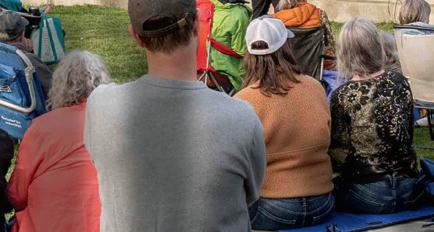



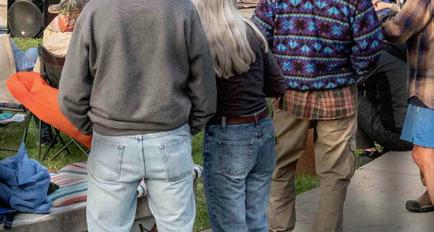


























Teams endured bad weather on popular Goat Wall route
BY MARCY STAMPER
Eight people were safely rescued from Goat Wall in cold and snowy weather last week by search-and rescue volunteers, professional climbing guides, and two specialized high-angle teams.
The Okanogan County Sheriff’s Office got a call at about 10:30 p.m. on Tuesday, May 21, that the eight adults were lost and stranded on the Prime Rib climbing route and weren’t able to descend. The popular route is about 3 miles west of Mazama.
It was 5:30 p.m. on Wednesday (May 22) before all eight were safely rescued, Okanogan County Search and Rescue Coordinator (OCSAR) Rick Balam said.
After he got the call from dispatch, Balam asked Zach Winters, an experienced climber and OCSAR volunteer, to call the stranded climbers to determine where they were and if it would be possible to coach them to descend on their own. It soon became clear that descending on their own was not an option, Balam said.
The stranded climbers, a group of men and women aged about 30 to 50 from Illinois and Indiana, were not experienced and “should never have been up there,” Balam said. None had ever done
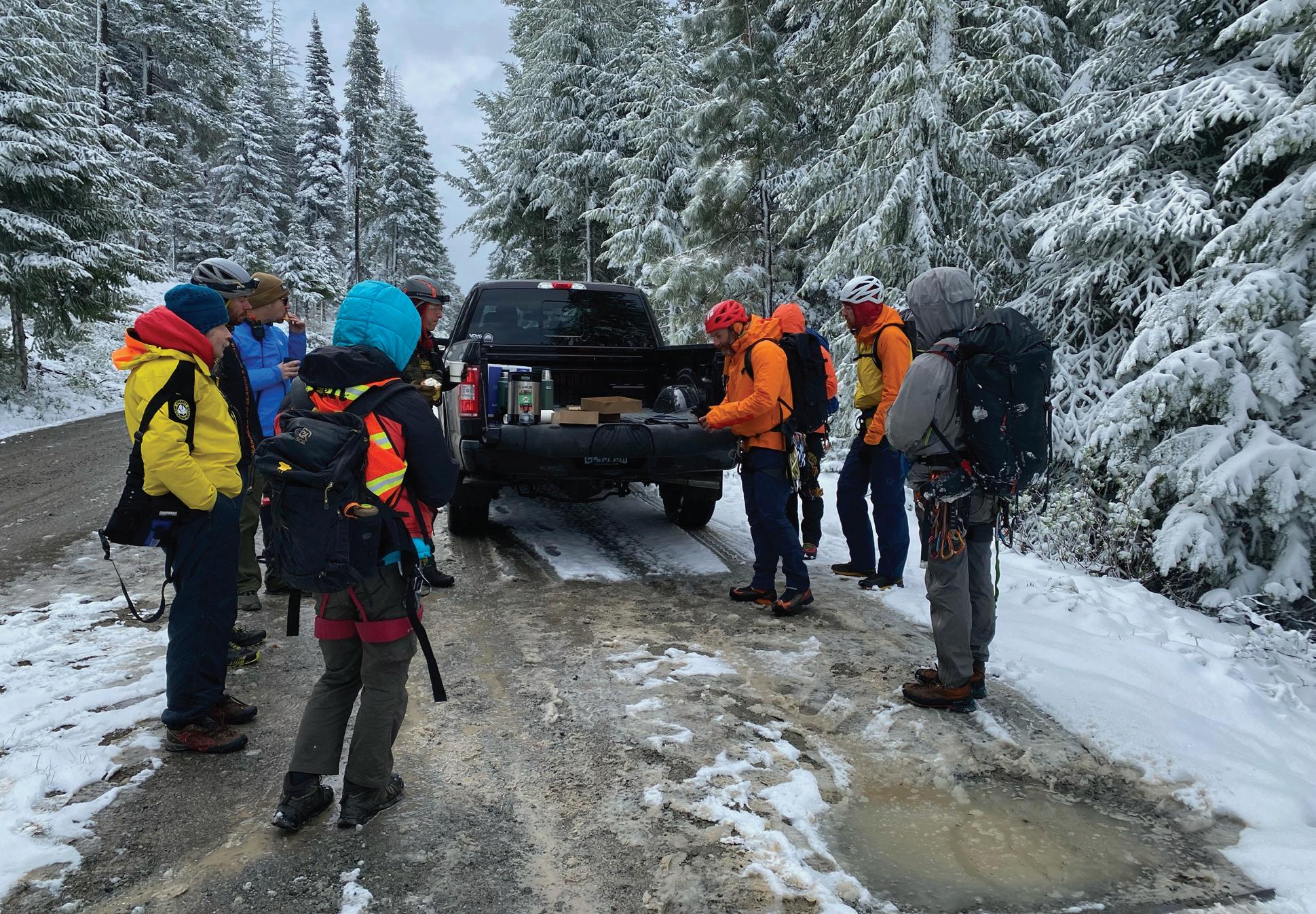
a multi-pitch climb before, Winters said.
The group had been researching the Prime Rib route for a year and thought it would take seven hours to complete.
The climbers started up the cliff at
about 7:30 in the morning on Tuesday and were straining all day to complete the route, Balam said. Winters was able to phone the climbers, who’d called 911 from a precarious
Birds return for fourth year to ideal habitat
BY MARCY STAMPER
There are only about 40 breeding pairs of sandhill cranes in Washington, and one of those pairs has found suitable nesting habitat at the Big Valley Wildlife Area near Mazama for four years in a row, successfully fledging three offspring. To protect the birds, the Washington Department of Fish and Wildlife (WDFW) is closing part of the Big Valley area through the end of September.
Cranes typically lay two eggs and their young — called colts — are expected to hatch any day now, WDFW Communication Specialist Nicole Jordan said.
Last season, two colts fully fledged and are assumed to have migrated with the parents. In 2022, two colts hatched and one died, but the other one is assumed to have migrated — the firstknown instance of cranes successfully rearing their young in the Methow, Jordan said.
Cranes were first seen nesting near Big Valley in 2021, the first instance of adult nesting cranes in the valley. While two colts hatched that year, neither survived. The cause is unknown, but biologists believe it was most likely predation.
The large birds are primarily gray, with a red cap. The crane’s wingspan is more than 6 feet. Cranes build their nests on the ground. It takes a month for eggs to hatch and at least two months for the colts to become independent. In the fall, the juveniles migrate south with their parents.
Cranes need space to breed successfully. They are extremely wary of people and other animals, and disturbance from humans can cause cranes to abandon their nests, risking predation
Map courtesy of the Washington Department of Fish and Wildlife Part of the Big Valley loop is closed through the end of September to protect a pair of nesting sandhill cranes and their young. The Methow cranes are one of only 40 breeding pairs of the endangered bird in Washington.
of their eggs or colts. Sandhill cranes often mate for life and the pair share the responsibility for guarding the nest and foraging for food.
Promising for recovery
The Big Valley Wildlife Area offers ideal nesting habitat, with shallow wetlands and emergent vegetation, as
well as adjacent agricultural fields for foraging (the fields are managed by WDFW). The return of the cranes for a fourth year is rare and is promising for the species’ recovery in the state, WDFW said. WDFW assumes it is the same nesting pair that has returned
spot on a ledge between pitches 7 and 8 on the 11-pitch route — although they thought they had reached the top, Winters said. Winters, who’s climbed the route some 20 times, figured out where
the climbers were and directed the group to a safer spot, where they were fortunate to find a small cave that provided some protection from the weather, he said.
Balam assembled a team of volunteer rescuers including OCSAR’s skilled high-angle team; a drone operator; professional climbing guides with North Cascades Mountain Guides (NCMG); and Chelan County Mountain Rescue, another high-angle team. He also contacted Naval Air Station Whidbey Island, which often assists in helicopter rescues, but the weather made that impossible, Balam said.
Winters was one of three initial response teams that arrived around midnight. Two teams drove up Goat Peak Road, where they were able to walk a trail that connects to the top of the Prime Rib climb. Balam, a drone operator and another volunteer deployed to the base of Goat Wall on Lost River Road. The climbers had left a car at the top of the route, planning to hike out when they finished their ascent.
The rescue teams on Goat Peak Road ferried ropes, warm clothing, blankets and food to the top of the Prime Rib route. Most of the waylaid climbers had just their climbing clothing, although a few had brought jackets or warm layers, Winters said.
Working in the dark, Winters and two other rescuers descended some 600 feet from the top of the route to bring the clothing and food to the climbers.
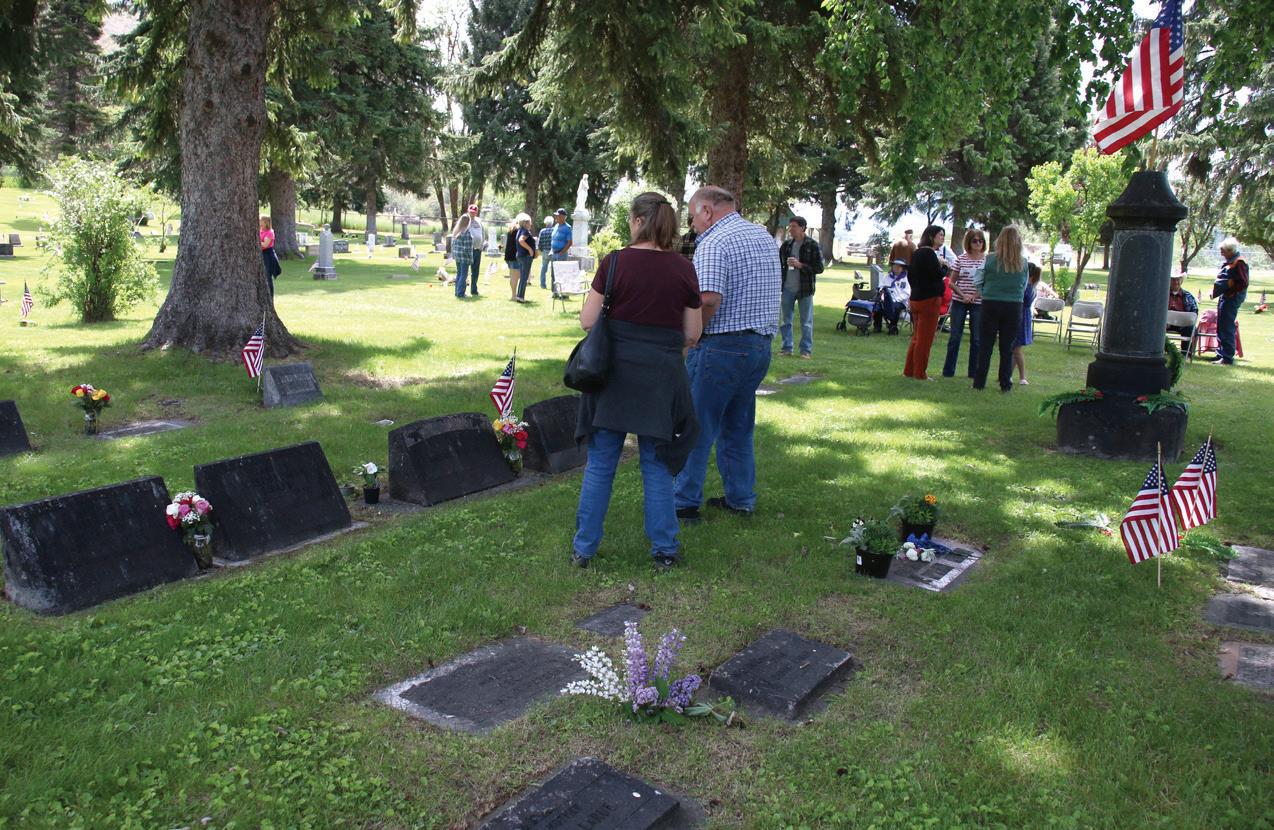
Aim is to increase public safety and smoke readiness
BY SANDRA STRIEBY
Federal and state agencies in Washington and Oregon are collaborating on two pilot projects intended to reduce the impacts of wildfire by increasing prescribed burning while minimizing the public health impacts of smoke exposure. The initiative is meant to address the “escalating wildfire crisis” in the Pacific Northwest and beyond, according to a joint media statement from the U.S. Forest Service, U.S. Environmental Protection Agency (EPA), and Washington State Department of Ecology (Ecology). Currently, other partners include the Washington State Department of
Health, Washington Department of Natural Resources (DNR), Oregon Department of Environmental Quality, Oregon Department of Forestry, and Oregon Health Authority. The group is “continuing to expand to include additional collaborators,” according to a Forest Service FAQ. Tribes are among those being engaged, according to the FAQ.
The collaborating agencies are conducting the first pilot project near Bend, Oregon, this year. The second project is planned for 2025 in north central Washington. The site has not been identified.
“We’re working with the Okanogan-Wenatchee National Forest and beyond that … the actual project location is to be determined,” said Deana Wall, who works in Fire, Fuels and Aviation Management for the Forest Service.
Okanogan County Sheriff’s Office
• On May 20, it was reported that a customer had not paid for gasoline at a station on East Methow Valley Highway, Twisp.
• On May 20, a caller on Cottonwood Drive, Winthrop, reported that someone had been firing a gun nearby for the past hour.
• On May 20, a caller reported that several men with flashlights were walking around a construction site on South Lincoln Street, Twisp, late at night.
• On May 21, a disabled vehicle pulling a trailer was reported at Highway 20 and Piney Woods
But about halfway through the descent, the weather became very cold and windy, with heavy rain that soon turned to snow, Winters said.
The bad weather made it tough going for Winters and his fellow rescuers as they ascended back to the top of the climb to coordinate the next phase of the rescue. The ropes were icing up, climbing devices kept jamming with ice, and the rock wall was covered in wet, sloppy snow, Winters said.
Six climbers rappel to base
On Wednesday morning, after daybreak and with improved weather, six of the stranded climbers rappelled back down to the base of the Goat Wall route with coaching from NCMG climbing guides. Rappelling back down the wall took about six hours, Balam said.
The remaining two climbers in the group didn’t feel comfortable rappelling down the wall, so the rescuers decided it would be safer to bring them to the top via a system of ropes and pulleys, Balam said.
The ropes and pulleys allow the high-angle team to lower or raise a person or an object. They use a two-rope system for redundancy, said David Gottula, an OCSAR high-angle team member who arrived at 6 a.m. on Wednesday to assist.
Winters and one of the two climbers were tethered together for the ascent. It was a long and arduous process to hoist them 600 feet — at times, they were simply dangling in space, Winter said. “It was a huge operation,” Balam said.
After the snow had melted from the rock — and the remaining climber’s body temperature had improved after several hours of warming — that woman was able to ascend to the top of the route with coaching from rescuer Will Parke-Hoffman, instead of being hoisted.
‘Moderate’ route can be deceptive
Prime Rib is a multi-pitch sport route with installed anchor points that’s considered to be of moderate difficulty. Still, it’s a long route on a serious climbing wall with loose rock and exposed terrain that’s made more challenging by weather, Winters said. The route — rated a fairly demanding 5.9 on the climbing difficulty scale —

Road, Twisp, partially blocking the road.
• On May 21, a caller reported that a vehicle had hit a deer on Twisp-Carlton Road, and that the deer and two fawns were still alive.
• On May 23, a caller on Francis Lane, Winthrop, reported that a elderly person who was continuing to drive was not safe.
Winthrop Marshal’s Office
• On May 20, it was reported that a tree was across the roadway on Riverside Avenue, and that a landscaping crew was taking care of it.
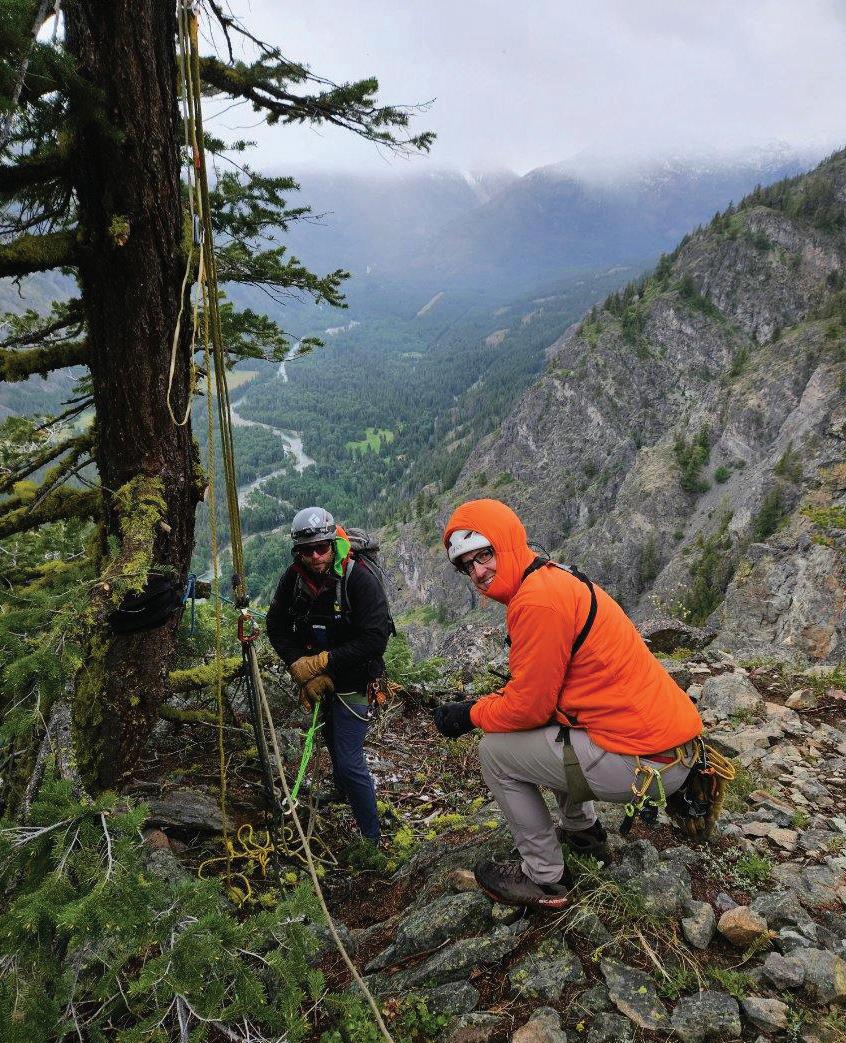
A Winthrop motorcyclist was killed and his passenger severely injured on Thursday (May 23) when the motorcycle collided head-on with another vehicle on U.S. Highway 97A between Chelan and Wenatchee.
According to a Washington State Patrol press release, Wilhelm M. Penders, 59, of Winthrop was northbound at milepost 222 (near Entiat) at about 5 p.m. when he attempted to pass another vehicle. The State Patrol said the motorcycle col-
each year, but doesn’t know for sure. There used to be numerous nesting sites throughout eastern Washington, but the sandhill crane was extirpated for about 30 years. Staring in the 1970s, nesting pairs were discovered at a handful of sites.
There are three subspecies of sandhill cranes in Washington, all considered endangered. There are only about 100 adult and subadult pairs, and only about 40 breeding pairs, according to WDFW. The loss of shallow marshes and wet meadows for feeding and nesting contributes to the risk of extinction of nesting cranes in Washington. WDFW has designated the cranes as a species of greatest conservation need.
Every March, tens of thousands of cranes pass through the Othello area on their northern
lided with a southbound vehicle driven by Marcos Huerta, 32, of Chelan.
Penders and his passenger, Christine L. Dunn, 60, also of Winthrop, were both thrown free of the motorcycle, the State Patrol said. Both vehicles came to rest in the highway, according to the State Patrol. Penders was declared dead at Central Washington Hospital in Wenatchee, the State Patrol said, while Dunn was airlifted to Harborview hospital in Seattle.
Huerta was transported to Central Washington Hospital. Both Penders and Dunn were wearing approved helmets, and Huerta was wearing a seatbelt, according to the report. Both vehicles — a 2014 BMW R1200 motorcycle and a 2003 Nissan 350Z — were totaled, the report said. The State Patrol said it could not determine if alcohol was involved. The report listed the cause of the accident as unsafe passing.
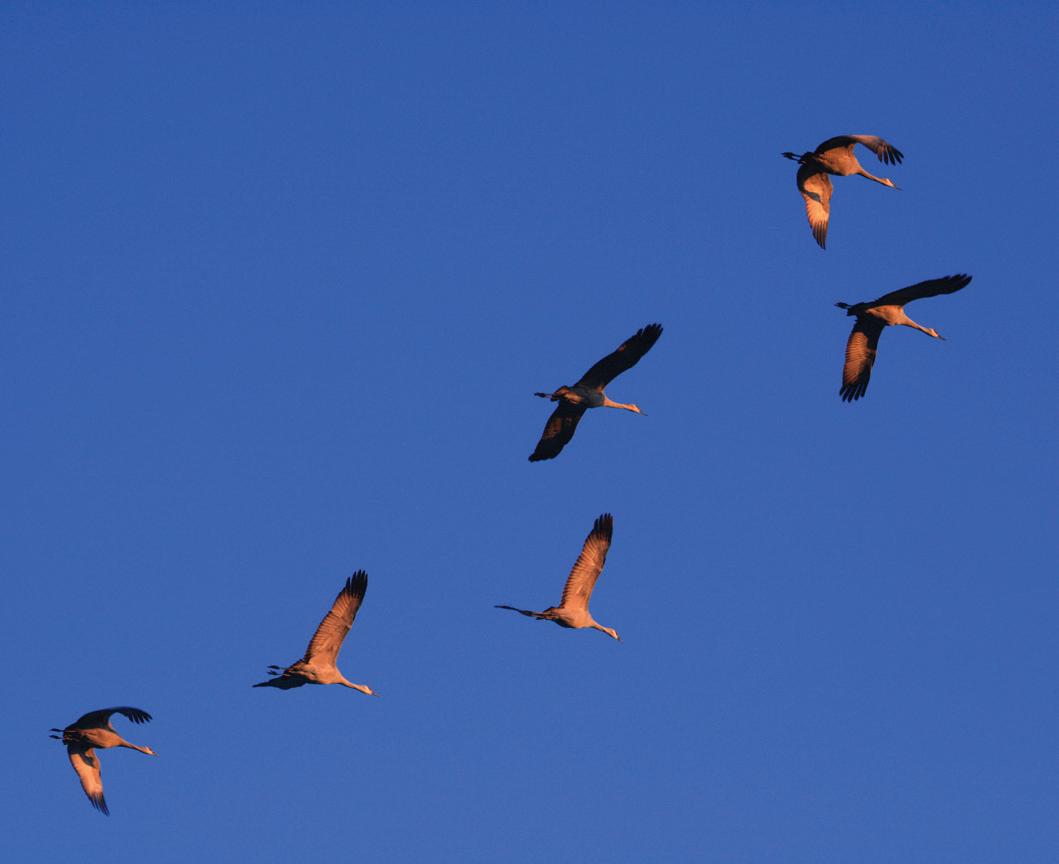
by

starts at 3,000 feet and is 4,400 feet at the top. The route is attractive to some climbers because they can leave a car at the top, rather than have to rappel back down to the beginning. But that also means you need a contingency plan in case it’s getting late or the weather is bad, Winters said.
The group’s predicament resulted from a combination of factors — their lack of preparedness for the weather or the need to spend the night, and their failure to descend well before dark, Winters said.
Several aspects of the rescue made it especially challenging. It’s rare for eight people to be stranded, and the mission was made more complex by the need to employ so many different techniques for different people. The 600-foot hoist was the longest that either OCSAR or the Chelan County volunteers had ever done, Winters said.
More than 20 people with the Methow Valley Ranger District fire crew also helped by hauling equipment, rigging gear, ropes and clothing.
While none of the eight had ever done a multi-pitch climb, that isn’t uncommon on Goat Wall, since the pre-installed anchors and moderate grade can make the route seem accessible, Winters said. But it’s vital to have previous experience on
similar routes, he said. All the climbers were safe, and none required medical attention, Balam said. After the rescue, one of the climbers told Balam he planned to take up golf.
SAR volunteers
Both OCSAR and Chelan County Mountain Rescue are volunteer search-and-rescue organizations.
Search-and-rescue groups follow strict protocols to ensure the safety of rescuers, making sure everyone understands the complexity of the assignment. They discuss leadership, skill levels and any concerns before they attempt a rescue. The change in weather meant they had to reassess and decide if it was safe to continue, Winters said. OCSAR doesn’t proceed if the safety of volunteers can’t be assured, Balam said.
Search-and-rescue teams are all volunteers and are not permitted to be compensated under Washington law. There are minimum requirements for training and certification. The OCSAR volunteers buy their own gear and pay for fuel and other expenses associated with missions and training, Balam said. In 2017, OCSAR formed a 501(c)(3) nonprofit, which gets some donations for general operations, gear and search dogs. They have received grants for some equipment.



Juvenile cranes, called colts, migrate south with their parents in the fall. The Methow cranes have successfully raised three colts in the past four years.
migration to breeding grounds in Alaska. An annual festival gives people an opportunity to see and learn about the birds, which can remain in the area for a few weeks.
To protect the cranes, WDFW
The Twisp Valley Grange hosts “Let’s Talk About Emergency Evacuation” on Tuesday, June 4, from 10:30 a.m.-noon. The free event, offered by Methow At Home, is open to the community. The program will provide practical information, examples of “ready-bags” you can make, plus time for questions and answers. The meeting will be facilitated by Okanogan County Fire District 6 volunteer firefighter Max Jones. For information, contact tracy@ methowathome.org.
The Washington State Board of Natural Resources has approved a recommendation by the Committee on Geographic Names to name a previously unnamed creek after an Okanogan County resident and longtime newspaper columnist, according to a press release The change was formally adopted at the board’s regular meeting on May 14.
is closing a portion of the Big Valley trail from May 17 through Sept. 30. The majority of the trail is still accessible to people and leashed dogs, but the loop at the far end of the trail (furthest from the parking area) is off-limits. File
The newly named Elizabeth Creek, a 2.5mile long stream, begins in the Mount Baker Snoqualmie National Forest north of Gabriel Peak and flows northeast to enter Granite Creek. The creek is located in the heart of the rugged North Cascades Mountains and was mostly inaccessible until the completion of the North Cascades Highway in 1972.
Widel was born in Chicago in 1917. She worked as a high school teacher in Brewster in 1944-46. She returned to Okanogan County permanently in 1954 to marry Glen Widel and began working for the Omak Chronicle as a Linotype operator.
Glenn and Elizabeth began a weekly Chronicle newspaper column on May 9, 1957, featuring photos, descriptions, and reflections of local scenic, geologic, historical, or cultural features they loved. Elizabeth continued publishing the column until her passing on Oct. 24, 2017, at age 100.
Family Health Centers is expanding its Omak campus by adding a new dental clinic to expand oral health access to all of Okanogan County with additional operatories and chairs, according to a press release. The clinic will add 18 new dental operatories and four general dentists, enabling FHC to double the number of patients able to get dental care and support.
The new name commemorates Elizabeth (Barta) Widel, who wrote a newspaper column, “Exploring the Okanogan,” starting in 1957. Widel produced over 3,000 weekly columns in the Omak Chronicle, often including geographic features in her articles. In 2015, Widel wrote a column highlighting a waterfall she had visited many times on an “unnamed creek” at milepost 143 in Skagit and Whatcom counties.






























































BY ANN MCCREARY
A fungus that causes whitenose syndrome, an often-fatal disease of hibernating bats, has been found in a popular recreation site on the Okanogan-Wenatchee National Forest in central Washington.
The Washington Department of Fish and Wildlife (WFDW) recently confirmed the presence of the fungus in Boulder Cave near Naches.
WDFW and U.S. Forest Service biologists sampled bats at Boulder Cave in January, and the U.S. Geological Survey’s National Wildlife Health Center confirmed a positive test for the fungus, Pseudogymnoascus destructans, or Pd, this month.
“A sample collected from a silver-haired bat at Boulder Cave has tested positive for the fungus that causes white-nose syndrome,” said Abby Tobin, bat biologist with WDFW. “Last year, samples tested inconclusive, but now we have confirmation that the fungus is present at Boulder Cave.”
Boulder Cave was scheduled to open for seasonal recreation last week. The Forest Service previously gated off the location in Boulder Cave where most of the bats hibernate to protect them.
“The information provided in the test results will inform additional management actions. We are working with specialists to strengthen existing prevention measures and increase visitor education on limiting spread of the fungus,” said Jason Emhoff, acting Naches district ranger.
“Boulder Cave is unique in that it requires no equipment or technical expertise to explore, making it a popular location for families and casual visitors,” Emhoff said. People who recreate in areas where bats are found can do their part to limit the spread of Pd, biologists say.
“Even though the fungus is primarily spread through contact between bats, humans can unintentionally spread it as well,” said Tobin. “People can carry fungal spores on clothing, shoes, or recreation equipment that touches the fungus.”
Take precautions
People who have been inside caves or climbing areas where bats hang out should clean and disinfect clothing and gear when they leave the areas to avoid inadvertently spreading the fungus
that causes white-nose syndrome. Measures to prevent the spread of the fungus include: Don’t wear the same footwear used in other caves or climbing areas until they are completely cleaned; don’t bring dogs into caves because they may act as carriers of the fungus; clean shoes and clothing of soil and mud before entering a cave or climbing area and after leaving; wash hands and exposed skin and change into clean clothes before getting in a vehicle to leave; clean equipment that can’t be washed with alcohol wipes; wash clothing, hats and shoes in hot (at least 151 degrees) soapy water for 20 minutes.
Protocols and guidance on limiting the spread of white-nose syndrome, can be found at whitenosesyndrome.org.
WDFW urges people to not handle wild animals, especially if they appear sick or are found dead. If you find sick or dead bats or notice bats acting strangely, please report your sighting online at wdfw.wa.gov/species-habitats/ diseases/bat-white-nose, or call (360) 902-2515. The fungus that causes whitenose syndrome attacks the skin of hibernating bats and damages their delicate wings, making it difficult for them to fly. Infected bats often leave hibernation too early, which causes them to deplete their fat reserves and become dehydrated or starve to death.
White-nose syndrome has killed millions of bats across North America, and has caused vulnerable bat populations to decline in many areas. While the syndrome is often fatal to bats, it does not affect humans, livestock, or other wildlife.
The fungus that causes whitenose syndrome has been detected in Benton, Chelan, Jefferson, King, Kittitas, Lewis, Mason, Pierce, Snohomish, Thurston, and Yakima counties. A map showing fungus and white-nose syndrome detections in Washington is available online at wdfw.wa.gov/bats. Washington is home to 15 bat species that play an important role in their native ecosystems.
WDFW partners with numerous state, federal, tribal, and non-government organizations to proactively survey Washington bat populations for white-nose syndrome and test emerging preventative treatments.
For more information about Washington bats, visit WDFW’s Living with Bats webpage at wdfw.wa.gov/species-habitats/ living/species-facts/bats.
Local toxicologist Liz Walker commended the multiagency approach. Walker is principal of Smoke Ready Solutions, a consulting practice through which she works with local health jurisdictions on wildfire smoke resiliency. She is also the former director of Clean Air Methow, a project of the Methow Valley Citizens Council, and now serves the organization as an adviser.
“Fire and smoke are a part of where we live, and we can find ways to adapt and adjust to continuing to live healthy and fulfilling lives here,” Walker said in an email. Collaboration lets agencies work together to define needs, resources, and roles “so everyone can work most effectively within their areas of expertise,” she wrote.
Basis for collaboration
The interagency collaboration comes in response to a March 2023 report from the U.S. Government Accountability Office (GAO) titled “Wildfire Smoke: Opportunities to Strengthen Federal Efforts to Manage Growing Risks.” The report recommends that the EPA and federal land-management agencies, including the Forest Service, work toward better aligning their goals and coordinating their approach to mitigating wildfire risk.
For example, the report said, EPA air-quality goals can hinder prescribed burning that is intended to reduce the risk of wildfire.
In response to the report, the Forest Service, EPA, U.S. Department of the Interior, and Centers for Disease Control and Prevention entered into a memorandum of understanding on the subject of wildland fire and air quality coordination. The document establishes shared goals, primarily related to protecting public health but also supporting use of prescribed fire and other land management practices “that may reduce the risk of future large, high severity fire events.”
Attached to the memorandum is a 2024-25 work plan that includes guidance for increasing community preparedness and developing “pathways to align public health and land management,” as well as collaboration among the participating agencies.
Funds from the 2021 Bipartisan Infrastructure Law and the 2022 Inflation Reduction Act “have provided unprecedented resources for federal, state, and
local agencies to collaborate at the scale needed to address the risks posed by undesirable wildfire,” according to a Joint Statement of Intent to Cooperate on Prescribed Fire and Smoke Management issued by the pilot project partners in February.
The joint statement lists five principles to which the partners have committed: act with urgency; protect public health, safety, and property; identify and overcome the most limiting factors to achieving implementation of prescribed fire as a management tool at scale; be innovative and comprehensive in our approach and apply best practices; try new approaches, learn, and adapt based on experience.
Learning and adapting
“The idea is to really work together to address all of our objectives … So getting more fire on the landscape to help prevent against catastrophic wildfire, but also increasing public health protections,” said EPA smoke manager Erin McTigue.
Acknowledging the “really amazing” work being done by Clean Air Methow and others in the valley, McTigue said “we know that a lot more is needed for communities there to be smoke ready, and I’d say that’s the case across the West … we’re hoping to do a lot of learning both on the land management and the public health and air quality side.”
Chris Barth works in Fire and Aviation Management with the Forest Service and is the public information officer for this year’s pilot project in Bend. He expects that project to contribute to the learning that McTigue anticipates, and to inform next year’s work in north central Washington.
“We’ll have the opportunity to learn from what we’re doing currently in Bend and share that information as the project moves forward in central Washington,” he said. “We’re … documenting all of the actions that we’re taking so that we can do an after-action review and develop some lessons learned that can be passed off to those folks that will be taking the project on in central Washington as well as others around the country at a larger scale. … [H]opefully that information will be shared broadly and applied where it makes sense,” he said.
Using prescribed fire to remove fuel from forest landscapes in advance of wildfire gives land managers the ability to decide where and when to burn so they can minimize smoke impacts on communities.
“Prescribed fire is identified as critical for reducing the accumulation of fuels that contribute to wildfire risk,” according to the Forest Service FAQ. Washington State Forester George Geissler, who works for the state’s Department of Natural Resources (DNR), agrees. Fire suppression has turned fire-adapted forests into unhealthy ones, he said. Done well, prescribed fire
“totally changes the character of an area from what people have been used to looking at,” said Geissler. Over time, he said, forests managed with fire become more like those many people imagine when they think of forests, “open area[s] with big trees … as opposed to this dog hair thicket that nobody can walk through. … The long-term benefit of what happens and the transitions that occur to forest health, water quality, everything are just absolutely amazing.”
“The key is … to not have that incredibly high-severity burn that destroys. You want that low intensity to moderate intensity fire that the ecosystems actually are adapted to,” Geissler said.
To bring that kind of fire to the landscape, burn managers scientifically plan prescribed fires to minimize smoke impacts, said Geissler. The interagency collaboration is allowing the participants to bring more resources to the planning process and have more expertise, including specialists in meteorology and smoke mitigation, available during burns.
“[P]rescribed fire is very carefully regulated with regards to the conditions under which those fires are lit,” said Walker. The DNR’s work includes “careful assessment of things like atmospheric conditions that would hopefully take smoke up and away, and away from communities,” she said. “That’s a really different type of fire and potential smoke intrusion or exposure than with wildfires, where we have very little control over wildfire smoke reaching us, how long it’s going to stay, [or] under which weather conditions it’s here.
Smoke from any source is unhealthy, and one of the shared goals listed in the federal agencies’ memorandum of understanding relates to “[protecting] the public from the adverse health impacts of wildland fire smoke, with an eye toward advancing health equity and targeting vulnerable populations.” Wildland fire includes both wildfire and prescribed fires, according to the agreement.
In addition to using more prescribed fire, the interagency initiative is asking “how do we prepare the communities for the smoke that’s going to come, whether it be prescribed fire or wildfire smoke,” said Geissler. At the community level, that may mean working with local fire and emergency management agencies, identifying and reaching out to people who may be especially vulnerable to smoke impacts, and locating places that can provide refuge when the air is smoky, he said.
Walker emphasized the importance of involving local public health agencies, as well, and making sure they have adequate resources to provide leadership and support.
The work of building local relationships has already started in Bend. “We’re developing … some new opportunities to recognize partners that should be involved in
these conversations, and developing those networks early,” said Barth. That makes it easier to inform people about prescribed fire and also establishes a system for communication during future wildfires, he said.
Community preparedness also includes making sure individual residents know “when smoke might occur [and] what to do about it, and then also having the tools or resources … to … take those actions,” said McTigue. Providing both information and resources is a way in which public health agencies — such as the Okanogan County Public Health District — can be involved, said Walker. Those agencies can advise residents on “how to access air quality information, strategies for keeping indoor air clean such as with box fan filters or portable HEPA air cleaners, and recommendations on planning your outdoor activities for the day around when it might be smoky,” wrote Walker in an email. Thanks to support from the DNR, they will be able to provide tangible resources, as well.
The DNR is providing funds to support community smoke readiness in north central and northeastern Washington this year, Walker wrote: “Funds will be used to train staff on wildfire smoke preparedness and response, purchase portable air cleaners to create clean indoor air spaces for vulnerable community members, and support outreach and education.”
Within reach
That support will help advance the federal agencies’ health equity goal by bringing clean air within reach of community members for whom air cleaners are not affordable.
Finding safe ways to spend time outside is important, too, according to Walker. “[A]s a mother, I certainly think a lot about how my kids can best enjoy our beautiful summers and balance the benefit of outdoor time in nature, exercise, and play while breathing as little smoke as possible,” she wrote. “We can reduce our exposure to smoke by checking air quality and considering our plans for the day or weekend the same way we check the weather.”
Throughout the wildland fire and air quality coordination pilot projects, the agencies involved will be learning to communicate with one another as well as to convey information to people who will be affected by smoke.
Together, they will work on how burn management and public communications interface, with the aim of “increasing understanding and education across our agencies,” said Forest Service Fire Communications Officer Jennifer O’Leary Risdal. That learning will be another outcome of the pilot projects, as the agencies navigate a 21st century approach to wildland fire and begin to understand how to manage fire and its effects at the national scale.


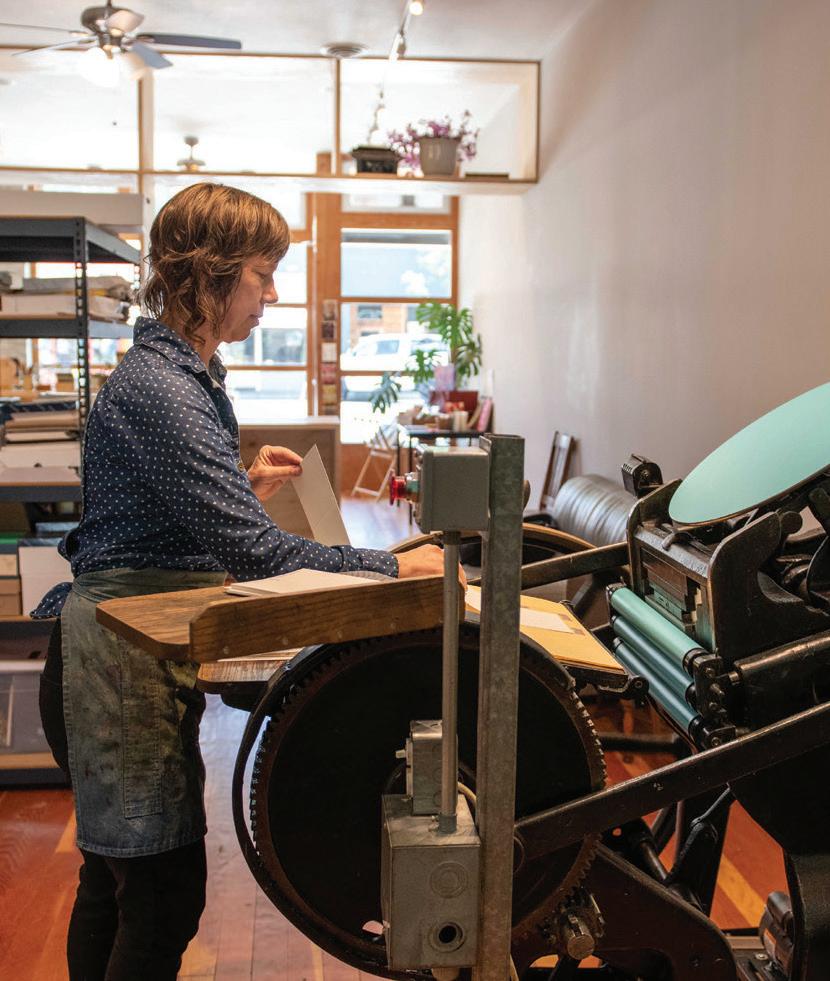






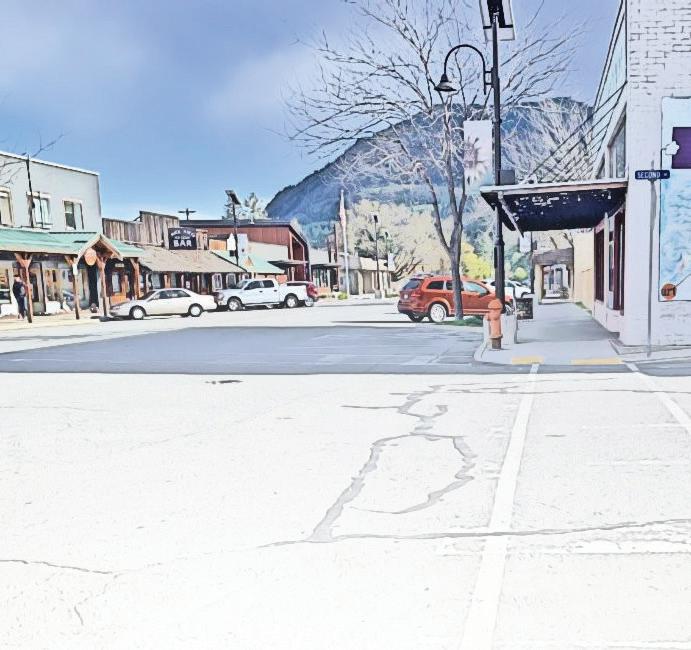
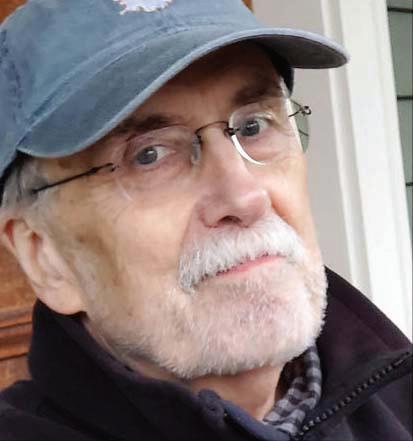
Perhaps you have noticed, at least subliminally, something about the last six Methow Valley News issues including this one. They have each contained 16 pages of news, features, sports, arts, advertising, photography, opinion and community information. In the middle of all that, we produced our largest special publication of the year, the Methow Valley Summer magazine. That’s kind of a big deal for us, for a number of reasons. It’s also been demanding every week. Page count is determined by a number of things — how much advertising we have, what we expect to be covering, or how important it is to have something in the current issue rather than a future one. We — that is, I — usually make this decision Monday morning. The options, for the past few years, have been 10, 12 or 16 pages, based on the press configurations the Wenatchee World can offer us.
During and post-COVID, 10-page papers (in one section) were the standard because advertising was way down and there was less to cover. As we came out of COVID, we gradually ratcheted back up to 12 pages in two sections, which gives us more flexibility but also felt like a big leap. As recently as last December, we had a 10-page issue. They are not that far away in the rearview mirror.
Since then, we had only produced one 16-page issue in 2024, until the last paper of April launched our current streak. And it’s sure to reach at least seven, because next week’s edition will include the Class of 2024 special section featuring local graduates.
I have often wished we could land somewhere between a crunchy 12 pages and a more expansive 16, but the press configuration doesn’t allow for 14 pages. Increasing the paper’s size by 33% on the editor’s whim puts more pressure on all of us. We need more stories of every kind, more photography, and enough advertising to justify the extra cost. (Most newspapers aim for about 50% advertising content. We rarely go above 30% advertising, which means most of the paper is devoted to content.)
Our little crew has stepped up admirably, from the “front office” and advertising side, to our staff and freelance reporters and columnists, to our photographers and designer MyKenzie Bennett. It falls on her to figure out how to fill those pages — and four more is a lot when they are all blank slates to begin with — working from a basic outline I provide her (as in, “let’s put these stories on this page and throw in some photos”). She has a good deal of latitude and her creativity is evident in how the paper looks. We don’t know what the recent record is for consecutive 16-page issues, but MyKenzie wants to go for it. Nothing like a challenge.
We like the results in the past several weeks. We can use more photos and make them larger, and be more timely with our general coverage. Most weeks, we end up with only a few dust motes and crumbs in the corner of the cupboard when the paper is finished, and are typically starting from zero, or close to it, on the Wednesday morning after we go to press. We start our “week” with a staff meeting to talk about what we intend to cover, what we ought to cover, and what we might aspire to cover if we can. Planning is crucial, and deadlines are unbending. We only have two staff reporters, Marcy Stamper and yours truly, and I’m also doing a couple of other jobs. So, much of our important work is handled by an able group of freelancers who don’t need a lot of direction to understand what is required.
There is a financial factor at work. Pages cost — for paper, ink, postage. Content has a significant cost as well. We accept that, but also keep an eye on the bank account. Every dollar coming in, and going out, is meaningful.
All of this effort has worn us a little thin, and we could use some help. Fortuitously, that is on the way. After months of looking for an additional reporter, we found one from our recent past who is familiar with the valley and thrilled to be returning.
In a few weeks, Ralph Schwartz will be back in our office as a full-time reporter. Many of you will remember him, and he is looking forward to reintroducing himself. Most recently, he has been working as a reporter for the Cascadia Daily News in Bellingham. Previously, he worked at the daily Bellingham Herald, the Skagit Valley Herald (where I was his boss), and the Lake Chelan Mirror. Best part of the deal: He has housing!
Dear Editor:
The headline that Okanogan County was adding two lawyers for indigent defendants sounded at first like a “good news” article. Well, yes, it is good news that the county is getting two additional public defenders. But right now, as your reporter Marcy Stamper explained in the article itself, their funding only goes to the end of the year and much of their work will be remote. Even worse, their hiring will not come close to meeting the immediate need for more attorneys. In my career as a lawyer, I have met many state and federal public defenders. Many were top law students and excellent attorneys. They started their careers with dedication to serving clients who could not afford expensive, private attorneys. And then many of them burned out. In most states, they have impossible caseloads and limited support staff, if any. The Washington State Bar Association is trying to remedy this. But the Legislature is not providing necessary funds Marcy has done a great job in explaining the problems. I recommend you read her whole article. But I warn you. It is not very hopeful for our legal system ever coming close to meeting the constitutional right to counsel for everyone accused of a crime. Incidentally, the Okanogan County 2024 budget for public defense is $1.3 million. The office has hundreds of felony and misdemeanor cases pending. In contrast, Trump’s attorney fees are already in the tens of millions of dollars for just a few cases. Randy Brook Twisp
another time
Dear Editor:
This is a somewhat late response to your editorial in the May 1 edition of the Methow Valley News: “More Candles on the Cake,” 120 volumes for the News and counting. First, Congratulations to the News and all

those who have before and do now make this happen. Your description of the early days of publishing, involving typesetting and linotype machines, brought back memories of my father taking me, as a little boy, to the office of our then local weekly newspaper, The Honeybrook Herald.
This was in the then very rural southeastern Pennsylvania in the 1940s and early 1950s. We lived in the very small borough of Elverson (about 400 people), at the eastern head of the Conestoga Valley and the western edge of Chester County. My father often took me to experience a wide variety of interesting technical activities, such as the Glidden paint plant in Reading, the Franklin Institute in Philadelphia (a long poke for us then), various feed and grain mills, railroad facilities, mines, airports, etc. I suspect that is partly why I ended up as a physical scientist who also did considerable engineering. (Thank you, Dad).
I recall even today the (rather messy) type-setting operation at the Herald, which fascinated me. I did not appreciate the amount of work involved at that time, but the process of printing a newspaper, apparently mostly by one-person, was striking to me then. The Honeybrook Herald started in 1928, became the Northern Chester County Herald and shut down in 1976, one more local newspaper casualty of a more “modern” era. I can understand why after driving around the area several years ago and seeing the huge increase in population, urbanization and dilution of the early, rural, farming community. One of the joys (and sadnesses)
of living a relatively long life is experiencing the huge degree of change over several generations in most of the processes, tools, and products involved in living and the great increase in the populations and associated “stuff.” From your editorial, seems you too are getting “up there?”
Thomas McCord Winthrop
The value of love
Dear Editor:
I am fortunate to call Sharon Gray and Jason Rumohr my friends. The words that immediately come to mind to describe them are kind, generous, sweet, deeply spiritual and having an amazing gift for healing. I will forever be grateful to have been on the receiving end of their wonderful selves for the full 10 years I’ve lived in this valley, and I will miss them greatly. I am reeling along with our entire community, those who knew them and those who didn’t, as I try to cope with the tragedy that ended Sharon’s life and irreparably changed Jason’s. It is all the harder because we don’t get to understand what happened. Mental illness can be utterly incomprehensible. What we do get to know is that “Love Is The Answer.” Always. Let’s each of us be the most loving person we can possibly be, even when we don’t get to understand.
Marcia Ives Winthrop
BY JACOB RICHARDS
Back in the 1990s, when writer Hunter S. Thompson held court at the Woody Creek Tavern just outside of Aspen, he’d often rail against the “greedheads.”
I grew up in Aspen, and sometimes my dad took me there to look at all the dollar bills on the wall. He made sure a picture of me and my first bull elk joined pictures in the bar of ski bums in head-to-toe denim.
Nowadays the bills are $100s and the pictures on the walls look like fashion shoots. What would Hunter Thompson think? Likely that the greedheads had won. Most of the West’s resort towns have undergone something of an Aspenification, and that includes Aspen’s bedroom communities of Basalt, Carbondale and Rifle that send workers to the ski lifts and restaurants.
When I was young, my family bounced around Aspen-area trailer parks, and even lived in the office of a horse-stable at the base of Aspen Highlands Ski Resort. The cabin had no running water, and the only heat was a wood stove. We’d sled down the hill hanging on to our groceries and water jugs.
When I was 8, my mom was able to buy a deed-restricted
condo in Aspen. Even then we needed to add a roommate to afford our 740 square-foot, two-bedroom apartment, one of us sleeping on the day-bed in the living room.
Dad called it “condo-bondage,” and a love of horses, hunting and open spaces pushed him farther down-valley before he settled in Silt, over an hour from Aspen.
I spent my middle-school years there, living with my dad in the early 1990s, and it felt like a different world. Decades later I remember the first Sotheby’s “for sale” sign I saw outside of a ranch near Silt.
A feeling of dread swept over me. The same dread I felt as a senior in Aspen High School with a job, basic math skills and a sinking realization that I couldn’t afford to live in my hometown. I thought, “My dentist commutes from over 70 miles away, how could I afford to live here?”
Twenty years ago, I moved to Grand Junction, a historically blue-collar town, the biggest in Western Colorado with 65,000 people. Now, even humble Grand Junction is undergoing Aspenification despite being over two hours from the glitz of Telluride or Aspen.
It’s a long way from the town’s history of milling uranium and then stashing its tailings — still
containing high amounts of radioactivity — along the Colorado River, not to mention meth epidemics and an ongoing homelessness crisis.
But these days you can ride a zip-line across the Colorado River, rent an electric scooter or buy a luxury condo downtown, built by Aspen-based developers.
Aspenification effects
The downsides of this Aspenification are hard to ignore. A 2019 study found that the Grand Valley surrounding Grand Junction was short some 3,736 units of affordable housing. Since then, housing costs and homelessness have both risen about 45%, according to Grand Junction Housing Manager Ashley Chambers.
“Seniors are getting creamed, service workers are getting creamed, and it’s adding to the homelessness crisis,” said Scott Beilfuss, Grand Junction City Councilman.
“If we remain a healthcare, service and retail-based economy, wages will never catch up with housing costs,” Beilfuss said. “This has consequences for the entire Western Slope.”
But here’s what I’ve learned from growing up in Aspen. The perpetrator of this rural transformation has lessons to teach us. The
town has run a robust and affordable housing program for years, and a recent study found that twothirds of occupied housing units in Aspen were affordable. Additionally, Aspen has long invested in a world-class public transit system so workers can commute from miles away. There are glitches. My mother, who still lives in her deed-restricted condo, learned that her basement often fills with leach water collected from Aspen’s toxic mining heritage. Repair estimates are $10 million — a sum she and the 79 other households can’t begin to afford. What Aspen’s success teaches us is that the greedheads can’t be stopped, but they can be pressured to build or subsidize affordable housing, something that’s in the resort town’s interest. Aspen also shows us that communities downstream need to organize to fight for affordable housing. And they need to stay organized, because the greedheads would rather fight you every step of the way. Jacob Richards is a contributor to Writers on the Range, writersontherange.org, an independent nonprofit dedicated to spurring lively conversation about the West. He is a writer and outdoor guide in Grand Junction, Colorado
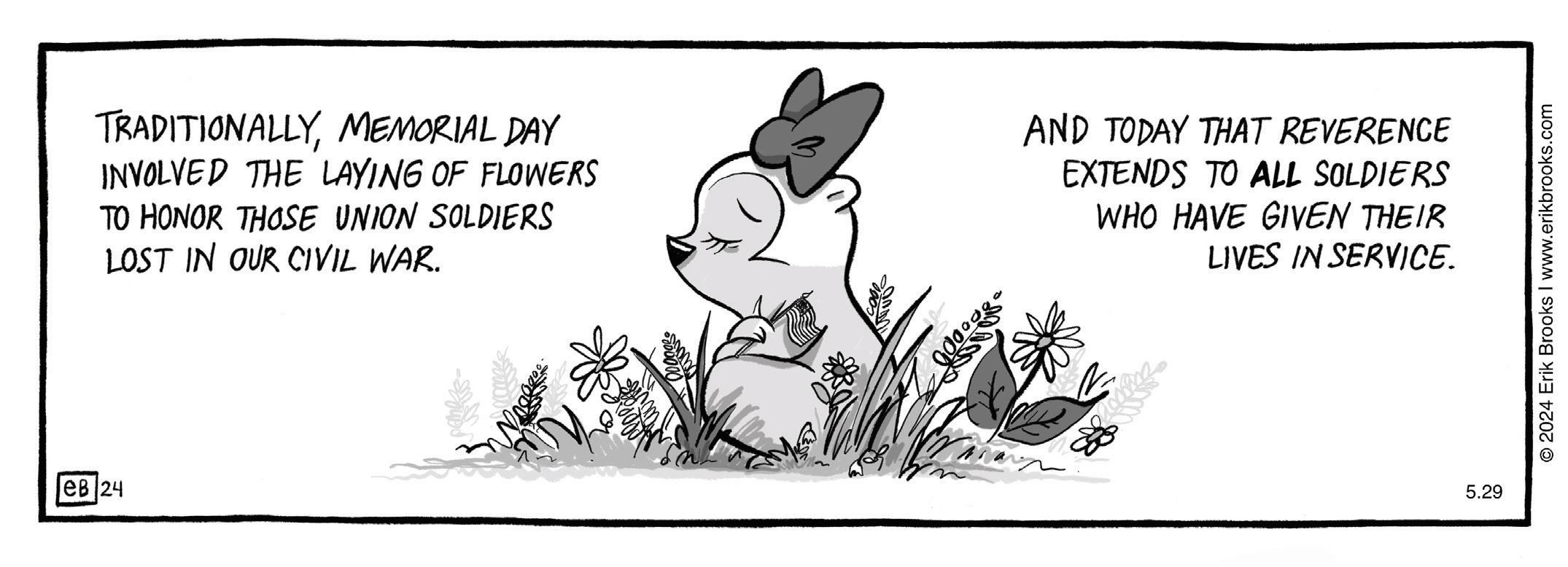
BY ASHLEY LODATO
“Shelter” is both a verb and a noun; it is both the act of protecting and the protection itself. Sheltering can mean providing temporary or permanent protection from harm — from the elements or from others; a shelter is a place of physical, emotional, or psychological refuge.
An upcoming exhibit at The Confluence: Art in Twisp (Confluence) explores the complexity of this term.
Curator Theresa Miller shares that the “Shelter” exhibit will contain “varied expressions of what one might consider a shelter.” Not only does the term “shelter” have an architectural reference to a tangible structure, she says, but it also offers artists “a broad range of expression to convey the emotion brought forth by the term.”
The exhibit features sculpture and paintings by regional and local artists,
a press release from Confluence says. For example, an oil landscape painting by Rod Weagant “offers soothing comfort in a stand of trees.”
Miller notes that gallery visitors will be able to experience “a unique way to consider what it means to have shelter,” as expressed through the artists’ “largescale sculpture to intimate paintings and cultural representation.”
‘Out Here’
While “Shelter” shows in the main gallery at Confluence, the community gallery hosts “Out Here,” a “multi-faceted collaborative art exhibition spotlighting LGBTQIA+ youth ages 14-24 living in Okanogan County,” the press release says. The “Out Here” exhibit “amplifies LGBTQIA+ community experiences and expression through words, stories, artwork, well as interactive installations.”
Curated by Laura Gunnip of Fireweed Print Shop in collaboration with FYRE (Foundation for
Youth Resiliency and Engagement) and Methow Pride, the exhibit features collectively printed letterpress words, gathered through an anonymous survey that was distributed to LGBTQIA+ individuals of all ages across the county focusing on three main categories: what is beautiful, what is painful, and what could change in the community.
According to the press release, “Out Here” is participatory in nature, “a delight to behold, and an invitation of allyship as well as a community celebration.”
Opening reception
The Confluence will host an opening for “Shelter” and “Out Here” on Saturday, June 8, from 5-7 p.m. The opening and the exhibits, available through July 13, are free to the public. The Confluence is open 10 a.m.-5 p.m., Wednesday through Saturday. For more information visit www.confluencegallery.org or call (509) 997-2787.
Liberty Bell High School freshman Orlo Parkinson has been named a winner in the Write on the River/NCW Libraries 13th annual Teen Short Fiction Competition.
Librarians from across the region along with members of NCW Libraries’ Teen Library Council judged an all-time high number of competitive entries, according to a press release. They selected three students to share the $200 cash award for their original fiction writing.
First Place went to Grace Hodges, a
‘GOOD FOR HER AGE’ AT MERC
Women’s transition into middle age, and the sadness and humor that accompanies that passage, will be explored through dance in a performance called “Good for Her Age” at The Merc Playhouse on Friday and Saturday (May 31 and June 1).
“Good for Her Age” is presented by Methow Arts, and features the Seattle-based dance collective called Four on the Floor. Tickets are on sale in advance at www.methowarts.org or at the door the night of the show. Cost is $35 for general admission seating and $45 for premium seating. No reserved seating. Premium seating is located in the first three rows of the theater; specific seats cannot be reserved.
Doors open at 6:30 p.m. and the performance begins at 7:30 p.m. The show includes adult content; age 16 and older is suggested.
Cascadia Music presents the Marcus Duke Project (Marcus Duke, keyboards, George Schneider, flute, Dave Nolet, guitar, Jason Russell, drums) in concert, with Will Lone and Greg Goad opening the evening, on Saturday (June 1) at the Methow Valley Community Center in Twisp. Cindy Williams Gutierrez will also recite several poems with band accompaniment.
The Project interprets tunes from the great diaspora of jazz, bringing a unique perspective from our collective improvisational approach. The group will also perform several of Duke’s original compositions.
Lone (drums) and Goad (electric guitar) will perform a highly improvised set that incorporates eclectic original material and re-workings of recognizable favorites.
Music starts at 7 p.m.; doors open at 6 p.m. Tickets are $20 presale


freshman at Cashmere High School, for “Stag.” Honorable Mention was awarded to Parkinson for “Like Love, Like Lightning;” and to Ella Stepanov, a homeschooled sophomore from Chelan, for “The Sound of Silence.”
Eligible students were in grades 9-12, including those privately or home-schooled and in Running Start, in the NCW Libraries’ service area. The submitting writers attend schools throughout Chelan, Douglas, Okanogan, Grant and Ferry counties.
online, $25 at the door; student tickets are free.
The Town of Twisp is seeking proposals to provide original artwork designs for four banners that will hang on Highway 20 and Glover Street. The Twisp Creative District has opened a request-for-proposals period that closes July 15.
Four $500 awards we be available to the winning artists.
“Artwork will enhance the community, inviting visitors to Twisp … and link the community to our offerings,” according to a press release.
Submissions should be significantly relevant to life in Twisp — scenery, flora, fauna, and in every season. Chosen artworks will be printed on banners and hung on a rolling schedule during the year.
A selection committee will review all submissions and forward their recommendations to the Twisp Creative District for review and approval.
Go to www.townoftwisp.com / services/twisp_creative_district for a submission form. Contact Randy Kilmer (509) 997-4081 or twispcreativedistrict@townoftwisp.com with any questions.
‘HALF-LIFE OF MARIE CURIE’
The Merc Playhouse Readers’ theater production of “The Halflife of Marie Curie” will, by popular demand, be back for a return engagement on June 6-9.
The play, written by Lauren Gunderson and directed by Carolanne Steinebach, has a two-woman cast: Gwen Vernon will read the role of Marie Curie; Curie’s fellow scientist and friend Hertha Ayrton will be read by Cindy Williams Gutierrez. A summary of the play’s prem-
ise: In 1911, Curie won the Nobel Prize in Chemistry. By 1912, she was demoralized by press gossip about an alleged affair. Marie’s friend, an electromechanical engineer and suffragette, brings Marie to England to recover. The production explores the power of female friendship.
Show times will be 7 p.m. on June 6, 7 and 8, and 2 p.m. on June 9. Donation is by admission; there will be no presale tickets. Doors open 30 minutes before showtime. For information, visit www.mercplayhouse.org.
Methow Music Monthly will stage the second annual Jazz Weekend in the Methow, on July 6-9. Events will include a concert, workshops and classes, jam session, and a Sunday morning jazz “service.” All events will take place at the Methow Valley Community Center in Twisp, with the exception of the Monday show at Tappi restaurant and Tuesday show at the Mazama Public House.
• Jazz School, Saturday, July 6, 2-4 p.m., $20.
• Community Jam Session with house band Terry Hunt, Marcus Duke, Kirk Schumacher, Dave Nolet, Wayne Mendro, Saturday, July 6, 7-9 p.m., by donation.
• Sunday Morning Music with Lynette Westendorf, Greg Wright and Cindy Williams Gutierrez, Sunday July 7, 11:30 a.m., by donation.
• Gala Concert with Nancy Zahn Quartet (Bill Anschell, Will Lone, Chris Symer, David Weidig) and Friendship, from New York City (Jenny Xu, Ben Feldman, Kofi Shepsu), Sunday July 7, at 7 p.m., $25.
• Jazz at Tappi, with Friendship and Nancy Zahn, Monday July 8, 5:30 p.m. at Tappi restaurant, by reservation, price to be determined.

The information below was provided by Methow Music Monthly and other sources. For more information, visit www.methowmusicmonthly.com.
• First Sundays, Methow Acoustic Musicians Association gathers at the Twisp Town Park from 3-5 p.m. All are invited.
• Sundays, Terry Hunt plays classical guitar at the Twisp River Taphouse, joined by guest musicians, 5:30 p.m. No cover.
• Tuesdays, Methow Ukulele Group meets at various locations around the valley from 3-5 p.m. More information at geraldebell@yahoo.com. May 28, Winthrop library.
• Wednesdays, dance instruction from the waltz and salsa to the two- and 10-step and everything in between, with Debbie Bair at Twisp River Tap House, ages 12 and up, 5:30-8:30 p.m. $5.
• Wednesdays, The Apostles (Paul Gitchos, John Almquist and Peter Neitlich) entertain at 1908 Barbecue and Bourbon Twisp, 5:30 -7:30 p.m. No cover.
• Fridays, open mic jam with Gregg Hardy at Twisp River Tap House, 6 p.m.-closing. No cover.
• Fridays (first, third and fourth), ecstatic dance lessons at Wellspring in the Methow Valley Community Center, 5:30-7 p.m. $12 per session.
• Fridays, Karaoke at Branding Iron, Twisp, 8 p.m. No cover.
• Friday, May 31, Karen & Gil at Methow Valley Ciderhouse, Winthrop, 5 p.m. No cover.
• Friday, May 31, touring Canadian duo Two Crows for Comfort at Old Schoolhouse Brewery, Winthrop, 6-9 p.m. No cover.
• Friday, May 31, The Lawrence Jazz Trio, Meza restaurant Winthrop, 6-8 p.m. No cover with purchase of food/drinks.
• Saturday, June 1, Marcus Duke Project and Goad-Lone Duo presented by Cascadia Music at Methow Valley Community Center, Twisp, 7 p.m. $20-$25.
• Saturday, June 1, Make Up Sax & Big Lake Judy at Twisp River Tap House, 7 p.m. $5.
• Saturday, June 1, Ken Bevis at Methow Valley Farmers Market, 10 a.m. Free.
• Tuesday, June 4, Karen and Gil at Mazama Public House, 5:30-8:30 p.m. No cover.
• Thursday, June 6, Friday Feels at Jupiter in Winthrop, 6-8 p.m. No cover.
• Friday June 7, The Olson Brothers Band from Olympia offers original country music at Winthrop Barn, 7 p.m. $25 at door, $20 presale.
• Weekend Finale with Goad-LoneNolet-Schneider Band, Tuesday, July 9, 6 p.m. at Mazama Public House, by donation.
Tickets are only available at the door (cash or check), except for the Tappi event.
Organizers are looking for artist housing, ushers, ticket takers, bartenders financial supporters and more. Email methowmusicmonthly@gmail.com for information. The event will be free for all students, Senior Center clientele and Jamie’s Place residents and staff. Visit www.methowmusicmonthly. com/jazz-weekend-2024 for more information.
Tickets for the 2024 Methow Valley Chamber Music Festival are on sale on the festival’s website, www.methowmusicfestival.org. The concerts will be presented June 20, 22, 27 and 29 at the Methow Valley Community Center in Twisp. Concert-goers can purchase a season ticket to all four concerts, or indi-
vidual concert tickets. Free open rehearsals will also be offered again:
• Methow Valley Community Center, 10 a.m. between June 18 and 29. Stop in on Saturday during the Methow Valley Farmer’s Market.
• Winthrop library, Wednesday, June 19, 4 p.m.
• Sun Mountain Lodge, Friday, June 21, 4 p.m.
• Mazama Public House, Tuesday, June 25, 4 pm.
• Sun Mountain Lodge, Wednesday, June 26, 4p.m.
Advance tickets are now sale now for the Winthrop Rhythm and Blues Festival, set for July 19-21 at the Blues Ranch on Highway 20. Visit https://wrbf.tickettomato.com/ for tickets; https://winthropbluesfestival.com for information about the festival and the lineup of performers.

Homeowners are seeing rate hikes, cancellations
Editor’s note: Solveig Torvik’s research into dramatic changes in the state’s home insurance market, and the reasons behind them, led her to expand her usual monthly column into an analysis of the new landscape that homeowners face.
BY SOLVEIG TORVIK
We’ve known for 40 years that burning fossil fuels would end in tears. Now the long-promised bill for damages has arrived. Was it sent to the inbox of oil companies?
It was not.
Instead, many Okanogan County homeowners are receiving notices from their insurers stating that the price of their coverage is rising steeply, sometimes by thousands of dollars annually. Some are learning that their insurer won’t sell them a homeowners’ policy at any price.
Most of us asked to pay this bill haven’t experienced, nor claimed, any property damage from climate change or anything else. No matter. We’re damage-adjacent. Last year, for example, the Associated Press reported that the Gray Fire near Medical Lake in Spokane County burned more than 350 homes.
Insurance companies lost $2 billion in this state during the last two years, according to a recent New York Times investigation. We here on the dry side of the Cascades, where wildfires have become bigger and more frequent, helped push insurers into the red.
Washington is among the top six on an alarming list of 18 states where selling homeowners’ insurance has become unprofitable, the Times’ investigation found.
“This market is starting to buckle under the cost of climate change,” said Christopher Flavelle, a New York Times reporter who helped document the insurance industry’s startling nationwide losses on homeowners’ policies. “No one thought that this problem would affect so much of the U.S. so quickly.” Or that catastrophic climate damage would engulf almost all parts of the nation. What were once classified as “secondary perils” by insurers — occasional hailstorms, floods, wildfires — have morphed into recurring primary perils nearly everywhere.
Washington homeowners’ insurance claims rose by 22% to $1.36 billion in 2021, by 35% to $1.84 billion in 2022, and likely will reach $2 billion for 2023, according to the Washington State Insurance Commissioner’s office. The average price of our homeowners’ insurance has not kept pace. It rose 16% in 2023.
Behind the costs
While the inflationary costs of materials and labor for rebuilding homes do drive up insurance costs, there’s also something else going on here.
A leading cause of the sudden dramatic rise in cost of homeowner coverage is that our insurance companies are paying more for their coverage to the reinsurance firms that keep our insurers insured against catastrophic loss claims in high-risk areas, the Wall Street Journal reports.
When rising homeowner claims from climate-driven damages caused significant financial losses to investors in reinsurance firms, the reinsurance firms last year did to our insurance firms what insurance firms now are doing to us: raised their rates and cut coverage. This shifted more catastrophe risks onto insurance companies. Now insurers are losing money and reinsurers are, once again, making money.
“The unregulated, global reinsurance market is a significant driver of the high cost of property coverage across the country,” Douglas Heller, Director of the Consumer Federation of America, told the Journal. Consumer advocates are asking for creation of a federal reinsurance program, akin to the federal flood insurance program, to protect consumers.
Seven insurers have abandoned our state since 2016; 130 remain. They are allowed to limit what type of damages they insure against — and to refuse to insure homes in risky Washington ZIP codes, according to the insurance commissioner’s office.
If you want these insurers to do business with you, there is something you can do, says Winthrop-area resident Harris Clarke:
First “harden” your home itself against wildfire. Then move on to remove neighborhood fire fuels. (Two programs can assist you with this; more on them shortly.)
“Smarter insurers are going to start caring about that a lot more,” predicts Clarke, a former Pemco vice-president for claims, sales and service and consultant for the insurance industry.
As climate-driven property damage costs pile up, insurance costs will continue to increase, Clarke warns.
Increased vulnerability
It’s not good to be on a list of unprofitable places to sell insurance. Not for homeowners, not for insurers and not for the economy, much of which is tied to the value of real estate.
Given ever-increasing climate damage that triggers ever-increasing costs and ever-increasing threats to the insurability of homes, this situation is fraught. Florida’s onslaught of destructive hurricanes upended its insurance market; insurers fled. California’s cascade of multiple billion-dollar fire and other climate-related catastrophes caused another insurance market meltdown.
Those states, like ours, have a FAIR Plan insurer-of-last-resort option for homeowners who cannot find other coverage. It’s underwritten by the reinsurers of insurance companies. No Washington state taxpayer funding is involved. But FAIR Plan policies typically cost more.
Washington is economically exposed to destructive climate events in its own special way.
Lacking a state income tax, we heavily rely on property taxes to fund schools, police, firefighting and other essential government services.
Tying government functions to property values leaves Washington vulnerable to bad outcomes if insurance issues cause the real estate market to seize up.
Prospective buyers of homes who need a bank loan must show banks that the home they wish to buy is insurable. But if owners cannot sell their homes
because they cannot affordably be insured, sooner or later these properties lose market value — which is what our property taxes are based on.
If property taxes must be reduced due to falling home values, and those losses in market value become deep, widespread and enduring, revenues necessary to fund government functions will be reduced.
Commissioner’s responsibilities
Washington State Insurance Commissioner Mike Kreidler must approve insurers’ requests to raise, or lower, prices their customers pay for insurance before rate changes can go into effect.
To help insurers who are losing money in this state, Kreidler recently sped up the process for reviewing their rate increase requests by hiring three additional actuaries, according to Kreidler’s spokesman, Aaron Van Tuyl.
Kreidler, who’s been insurance commissioner for 24 years and will not seek re-election this year, founded and led the Global Warming Work Group for the National Association of Insurance Commissioners.
His duty as commissioner is to ensure that insurance is available and affordable. That’s a precarious balancing act in normal times, never mind during climate crisis. He must keep his foot on the brake to avoid unjustifiable premium increases for consumers. That ensures affordability of insurance coverage. But he cannot step so hard on the brake that the insurers cannot make a profit. If he does, the vehicle stops; insurers flee. That undermines availability of coverage.
Kreidler’s office encourages homeowners in fire country to comply with the insurance industry’s IBHS Wildfire Prepared Home recommendations to harden their homes against wildfire. That program outlines how to eliminate common ignition sources.
Firewise ignored
But Firewise USA, a promising additional tool for inducing homeowners to reduce their wildfire risk, has been all but ignored by both the insurance industry and our state’s insurance regulator.
Firewise USA is the National Fire Protection Association’s 22-year-old program that urges homeowners to reach beyond their own homes into their neighborhoods to achieve more robust fire protection. Its goal is to reduce fire risk by also eliminating neighborhood fire fuels that endanger homes.
The Methow Valley has 16 of Okanogan County’s 17 designated Firewise communities, with Libby Creek, Lost River, Pine Forest, North Village and Cascade Condos among them. Chiliwist became the first in 2013.
The county adds one or two designated Firewise communities each year, according to Eli Loftis, the county conservation district’s lead planner for the Firewise program. Its work is coordinated with the state’s Department of Natural Resources.
Loftis arranges free evaluation visits to neighborhoods and provides a formal report on mitigation measures needed in the community for it to qualify for the Firewise designation. Grants are available to help pay for some of the fuel mitigation, which
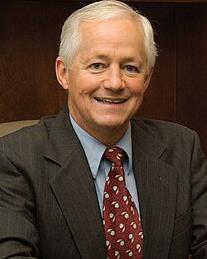
must be maintained if the community is to remain qualified. Insurance regulators in 10 other high fire-risk Western states allow insurers to give fire coverage discounts to customers who live in designated Firewise communities.
But not ours.
California’s insurance regulator in 2014 ordered insurers to give Firewise discounts to homeowners. Texas, Colorado, Arizona, Oregon, New Mexico, Utah, Wyoming, Montana and Idaho followed suit after USAA, an insurance company that serves military-related customers, requested that Firewise discounts be allowed, according to Michele Steinberg, Wildfire Division Director for Firewise USA.
Arizona, for example, began by allowing a 5% discount on the cost of the entire homeowner policy for customers in designated Firewise communities. Later USAA introduced a wildfire premium calculation that gave homeowners a 15% discount only on the fire premium portion of the policy, according to documents on file with the Arizona insurance regulator’s office.
Why not here?
USAA was successful in getting the Firewise discounts approved by the other state regulators because it presented fire loss documentation showing that their customers who lived in designated Firewise communities had better success avoiding wildfire losses than those living in non-Firewise

communities, said Steinberg.
Firewise USA does not lobby insurers or their regulators to provide homeowner discounts, nor does it “certify” neighborhoods as Firewise; it “designates” them as such, she said.
Insurers who enter a customers’ address into Verisk, a database used by the insurance industry, can see whether the home to be insured is in a Firewise-designated community, Steinberg added.
What’s our insurance commissioner’s rationale for not allowing insurance discounts for homeowners who invest time and money to reduce fire risks in their neighborhoods?
“Firewise is a community-level plan, but it does not require everyone in the community to participate. That makes it difficult to rate as a discount.
The IBHS Wildfire Prepared Home designation, on the other hand, can be applied to a single structure, which we see as a slightly better path for the individual homeowner,” said Van Tuyl.
“The reason we don’t require the discount is we want the science and data that shows the mitigation reduces claim costs. Without that, the ‘discount’ is just cost sharing that’s passed on to other policy holders in the program,” he added. Arguably, “cost sharing” that rewards property owners who reduce neighborhood fire risks but does not reward those who don’t reduce them likely would



strike most policy holders as eminently fair.
“Any rate discounts insurers use need to be justified with data that supports how the mitigation effort reduces claims,” said Van Tuyl.
“An insurance company can provide that data to our actuarial staff (rate reviewers), prove the discount is fair to its customers, and seek a discount. No company has done this, but it’s an option,” he added.
That’s not quite correct. USAA did ask Washington to allow the Firewise discount in 2019.
In July 2020 Firefighter Nation published an announcement from USAA stating that Washington was now joining states where homeowners receive a Firewise discount. But a July 28, 2020, “update” added that “there has been an unforeseen delay in the effective date for policies in Washington state.” USAA withdrew its Firewise discount request, according to Van Tuyl. Apparently, he said, a map submitted by USAA with the filing “wasn’t detailed enough.” USAA did not respond to requests for clarification of why it withdrew its discount request for homeowners in Washington’s Firewise communities.
Meanwhile, eight people have filed to become our new insurance commissioner. In a state where insurers are losing money and rates are rising alarmingly, the credentials and competence of these candidates warrant the closest of scrutiny.

On March 11, North Cascades Bank became Wheatland Bank. That’s right, sleeves were rolled up, spreadsheets were reconciled, and pocket protectors were pushed to their limits. And together, we created a bigger, better community bank committed to serving all of Eastern Washington. Not to mention a dream team of familiar faces you know and trust, all armed with the latest technologies to help you and your business thrive in a rapidly changing world. Welcome to the bigger, and now even better, Wheatland Bank.





Recommendations offered for better coexistence
BY ANN MCCREARY
Humans and black bears have similar tastes when it comes to choosing where to live. Here in the Methow Valley, bears have historically sought habitat along waterways in the valley bottoms, where natural food is abundant.
And that is where the greatest population growth in the Methow Valley has taken place over the years, with human development increasingly concentrated in the same areas preferred by black bears.
As many Methow Valley residents know from experience, when humans and bears occupy the same space, conflicts can arise.
A recent study on human-bear interactions in the Methow Valley examines sources of conflict and offers recommendations to improve human-bear coexistence.
The “Methow Valley Community Bear Assessment” was prepared by Home Range Wildlife Research (HRWR), a local nonprofit research organization. It was commissioned by Defenders of Wildlife, a national wildlife conservation and advocacy organization.
Despite human development, valley bottoms still offer valuable natural food for bears, which eat a wide variety of foods including plants (grasses, sedges, leaves and stems of herbaceous plants, roots, nuts, and berries) as well as fish, ungulates, carrion, and insect larvae.
But as humans move in, they bring other food sources that attract bears — things like garbage, bird feeders, fruit trees, bee
hives and chicken coops. These human-related sources of food (called anthropogenic) are the cause of most reported humanbear conflict, the HRWR assessment said.
“Bears are extremely curious, smart and calorically motivated. Once their curiosity is rewarded with a high value (calorically dense) food source, they may become persistent in seeking out similar food sources,” the assessment said.
Because bears are such smart animals, they may develop new foraging habits immediately after discovering human-related sources of food like garbage cans, compost piles, bee hives or chicken coops. And if bears decide that these anthropogenic foods make for easy eating, the behavior can escalate, posing a threat to human safety and property, and often resulting in bears being lethally removed, according to the assessment.
Outdoor recreation, which continues to grow in and around the Methow Valley, also provides increased opportunities for human-bear interactions on trails and campgrounds and other outdoor recreation facilities.
Interactions between humans and bears in the Methow Valley have involved only black bears. But, the assessment noted, with recently announced plans to reintroduce grizzly bears to the North Cascades Ecosystem, the Methow Valley “may be one of the first communities [in the region] where residents interact with grizzlies, increasing the importance of understanding its vulnerabilities to conflict with both bear species.”
The assessment authors said the study follows a format that been widely used by communi-
ties where humans overlap with black and grizzly bears (like Missoula, Montana, and Pemberton, BC) to understand patterns of human-bear conflict.
According to data from the Washington Department of Fish and Wildlife (WDFW), an estimated 1,000 adult black bears live in the Methow Valley watershed. Recreational hunting is the largest cause of mortality, killing about 10 percent of the black bear population annually, the assessment said.
Habitat loss and fragmentation due to human development, wildfires and climate change also impact black bears. However, wildfires, which have burned 59% of the Methow Valley watershed since 2000, are not necessarily bad for bears in the long term, the assessment noted.
After a year or two, when vegetation recovers, burned areas provide good food sources for bears, such as berry-producing shrubs.
In 2022, HRWR launched an ongoing community science project to determine whether shortages of natural bear foods, specifically berries, result in more conflict between humans and bears.
HRWR has also conducted a survey of residents to better understand where bear attractants are concentrated in the Methow Valley, which attractants are most common, and what steps community members are taking to secure them. Among the survey respondents, 81% reported having one or more attractants and 69% of those with attractants reported taking steps to secure their attractants.
WDFW is responsible for responding to wildlife interactions and conflict reports.
During a six-year period from 2018-2023, WDFW received 33 calls related to bears from the Mazama area, 73 calls from the
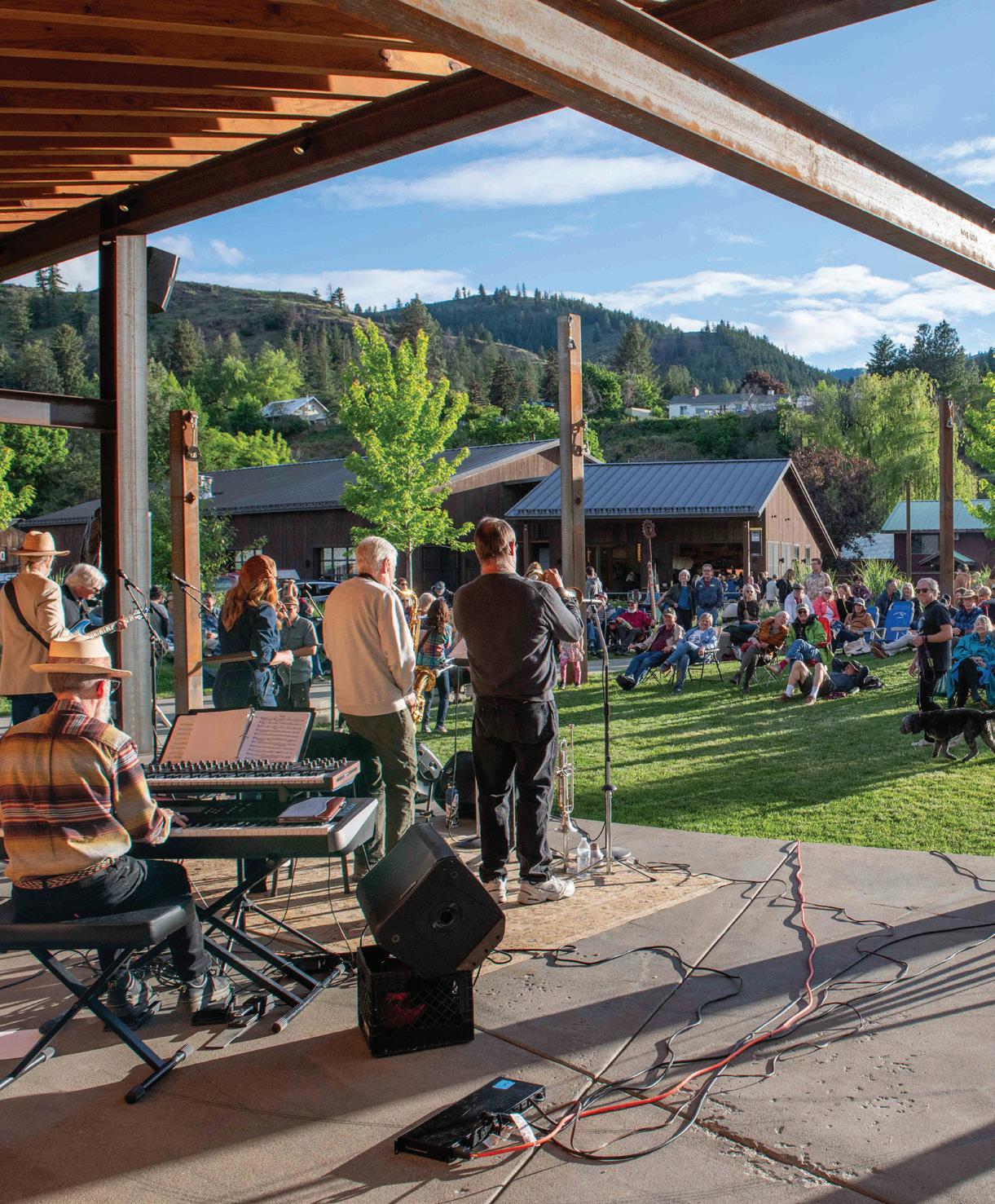

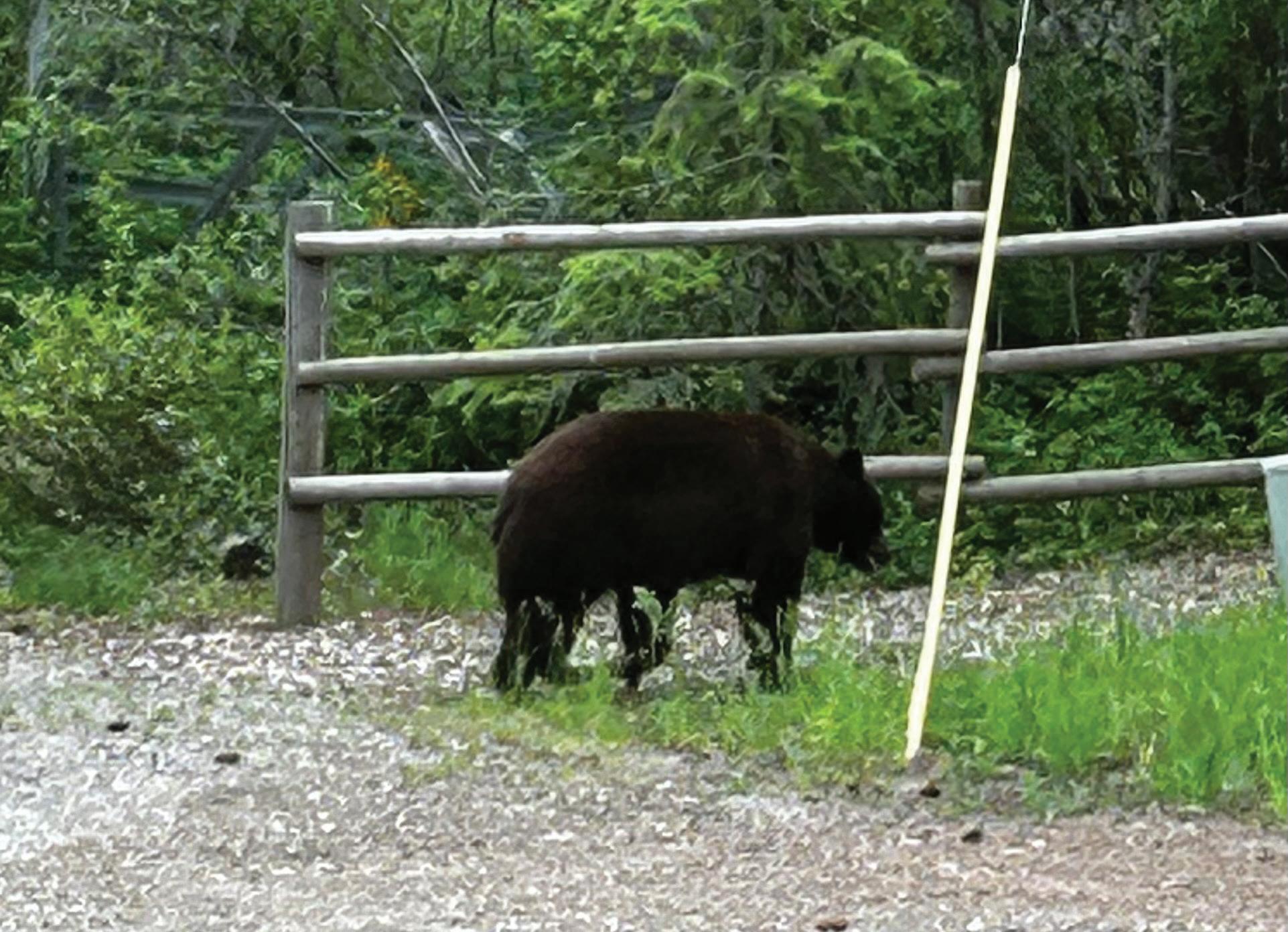
Winthrop area, and 28 calls from the Twisp area. (Calls from the lower valley were not included in the WDFW summary.)
The number of calls was highest in 2022, with a total of 77 calls, three times more than any other year between 20182023. The largest cause of conflict was bears seeking human food sources. WDFW lethally removed five bears in that period, all of them in 2022.
With so many people moving to the Methow Valley recently, WDFW staff have found that new residents are often the primary segment of the population to make complaints about bears. “Many do not realize there are bears here, do not employ any sort of coexistence strategies, and may not be accustomed to seeing wildlife in close proximity,” the report said.
Since 2019, WDFW no longer

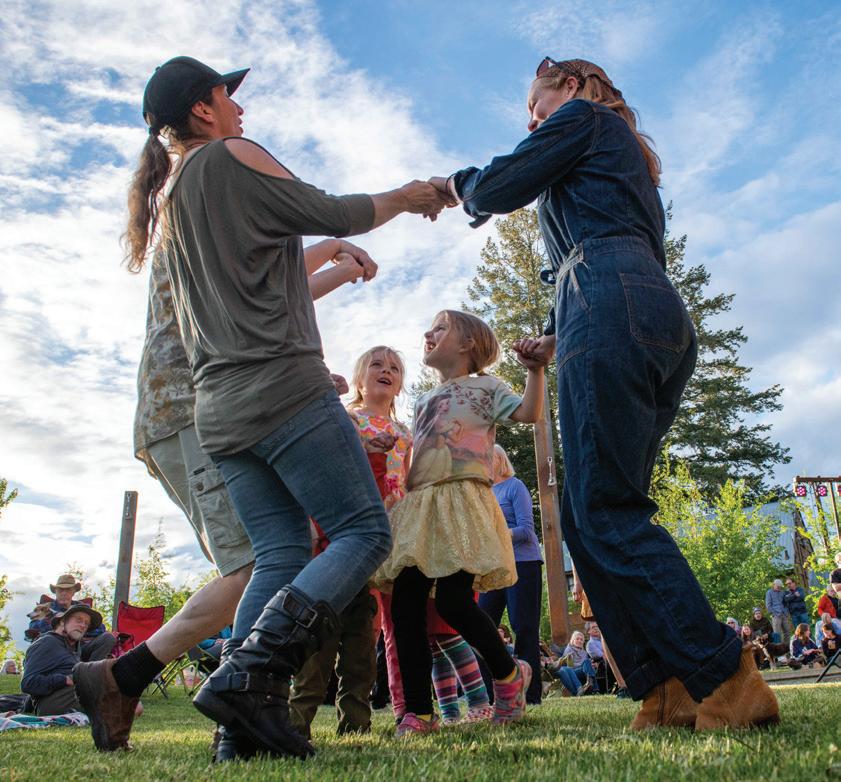
relocates bears involved in conflicts, so options for resolving conflicts are limited to reducing and securing bear attractants, or killing nuisance bears.
WDFW enforcement officers say Methow Valley residents generally do not want bears to be euthanized due to conflict, and as a result take their responsibility to reduce attractants seriously, the bear assessment said.
Garbage and compost are prime attractants for bears, and the HRWR’s community assessment evaluated how garbage collection is handled in the valley.
Waste Wise Methow, the only solid waste hauler in the Methow Valley, has explored using bear-resistant curbside cans, as well as bear-resistant communal dumpsters, although cost has presented a significant barrier to both approaches.
The community assessment identified three main barriers to coexisting with bears: lack of proactive, consistent and cohesive efforts to provide education and outreach to the community about living with bears; the need for more bear-resistant infrastructure (like electric fencing and secure garbage collection) in both residential and commercial spaces; and limited options for enforcing regulations on securing attractants.
The report provided recommendations to address the barriers, noting that all recommendations would require funding. The recommendations include:
• Employment of a humanbear coexistence coordinator to organize education on living with bears and to facilitate valley-wide efforts to improve bear-resistant infrastructure. The assessment also recommended establishing a human-bear coexistence committee or working group, noting that there are “several organizations in the valley currently invested in forming such a committee.”
• Improving bear-resistant infrastructure in residential and commercial space, beginning with installation of communal dumpsters in certain neighborhoods (such as the Wolf
Creek and Rendezvous areas in Winthrop, and Lost River in Mazama) for both trash and recycling. The assessment recommends replacing conventional trash cans with bear-resistant cans where dumpsters are not feasible; adding electric fencing to waste, recycling and compost aggregation facilities, and adding electric fencing to individual households where necessary. Outside funding to subsidize landowners’ costs will be an important part of creating bear-resistant infrastructure.
• Developing and enforcing ordinances to reduce conflict.
While many residents are eager to coexist peacefully with wildlife, reducing conflict requires accountability from residents for securing attractants and following other coexistence strategies. There are state laws related to securing attractants from wildlife, but there are currently no town or county ordinances or rules that relate to bear coexistence in the Methow Valley.
“Experience in other communities has shown that local ordinances (that can be enforced proactively with warnings) have improved compliance with bear-resistant measures, whereas exclusively voluntary actions have been less effective across a whole community,” the assessment said.
“The Methow Valley,” the community assessment concluded, “is uniquely poised to both examine and mitigate human-bear interactions before conflict becomes a widespread problem, and successful coexistence subsequently becomes harder to achieve.”
Implementing the assessment’s recommendations will require support from the community, WDFW and other organizations dedicated to human-bear coexistence, the assessment said.
“Through this implementation, the Methow Valley can both decrease potential human-bear conflict locally and serve as a model for other communities facing similar coexistence challenges in the intermountain West.” The Methow Valley Community Bear Assessment is available on the Home Range Wildlife Research website: www.homerange.org/research/publications.

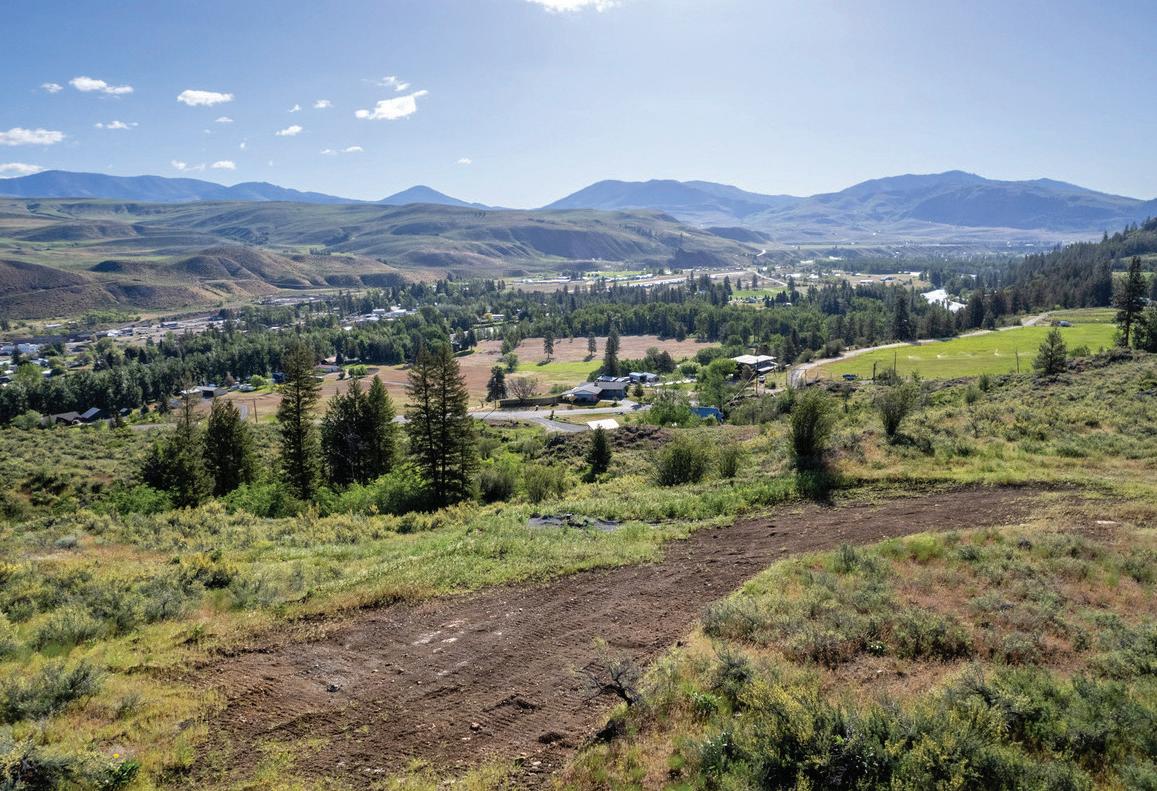

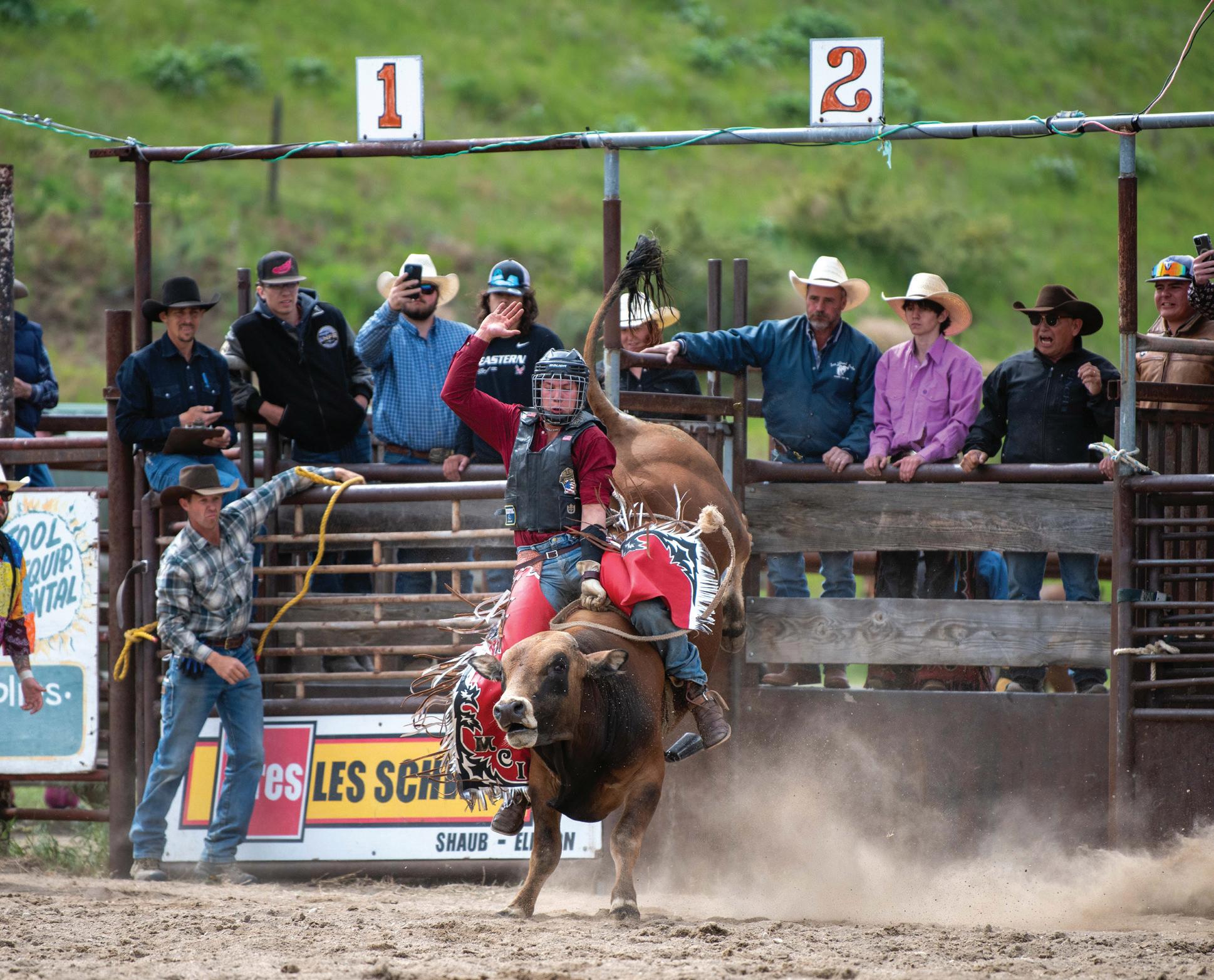
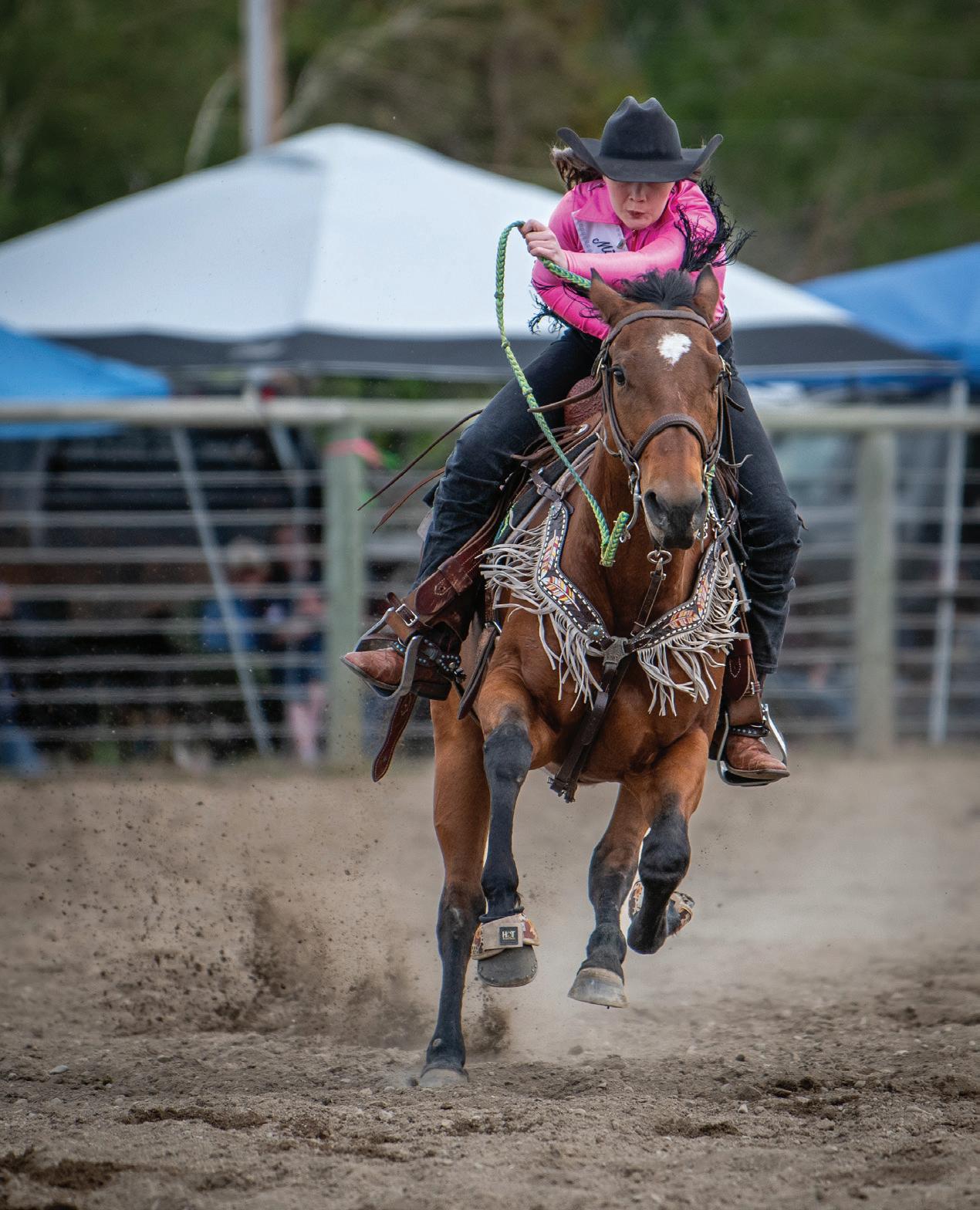
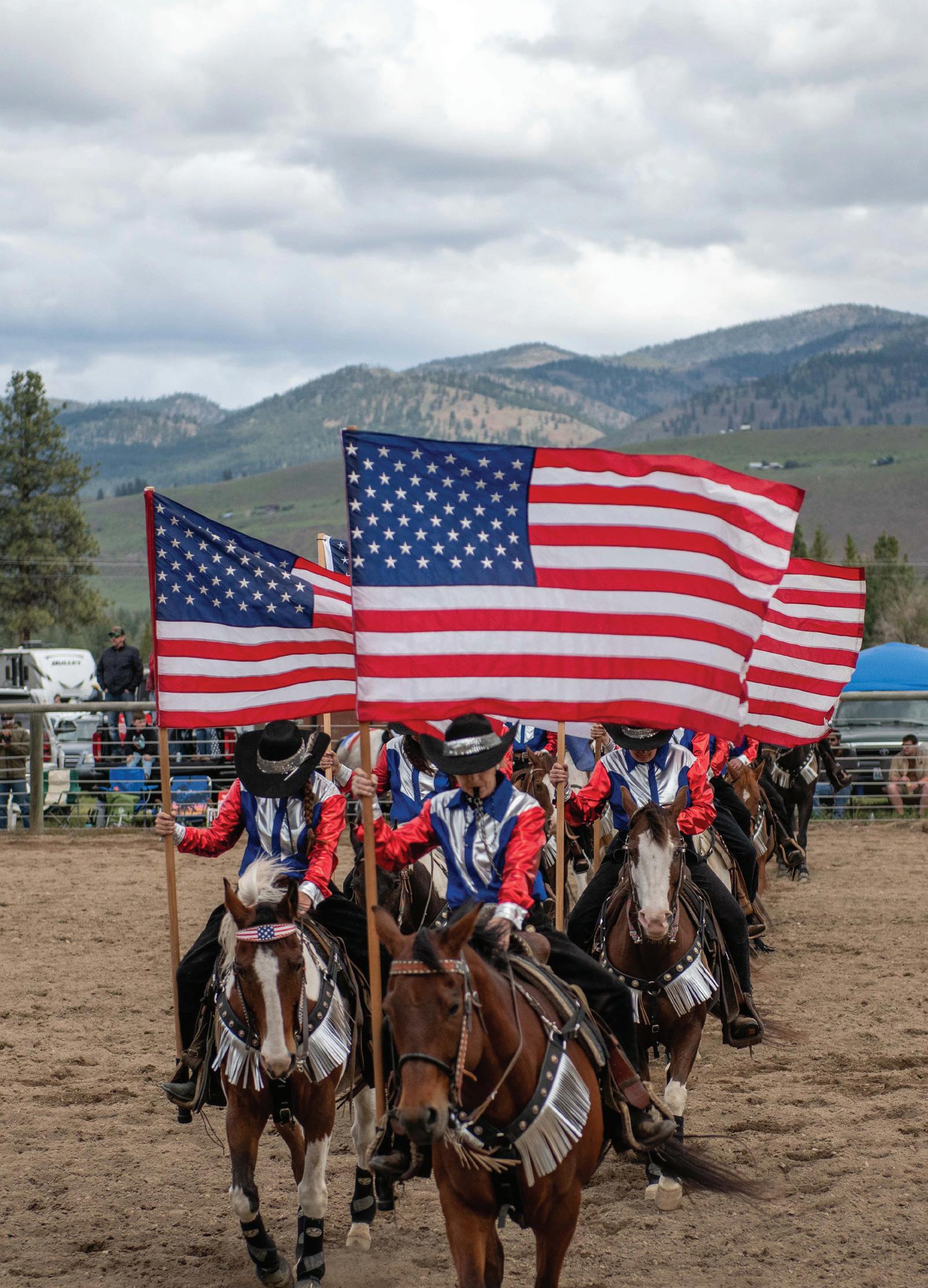
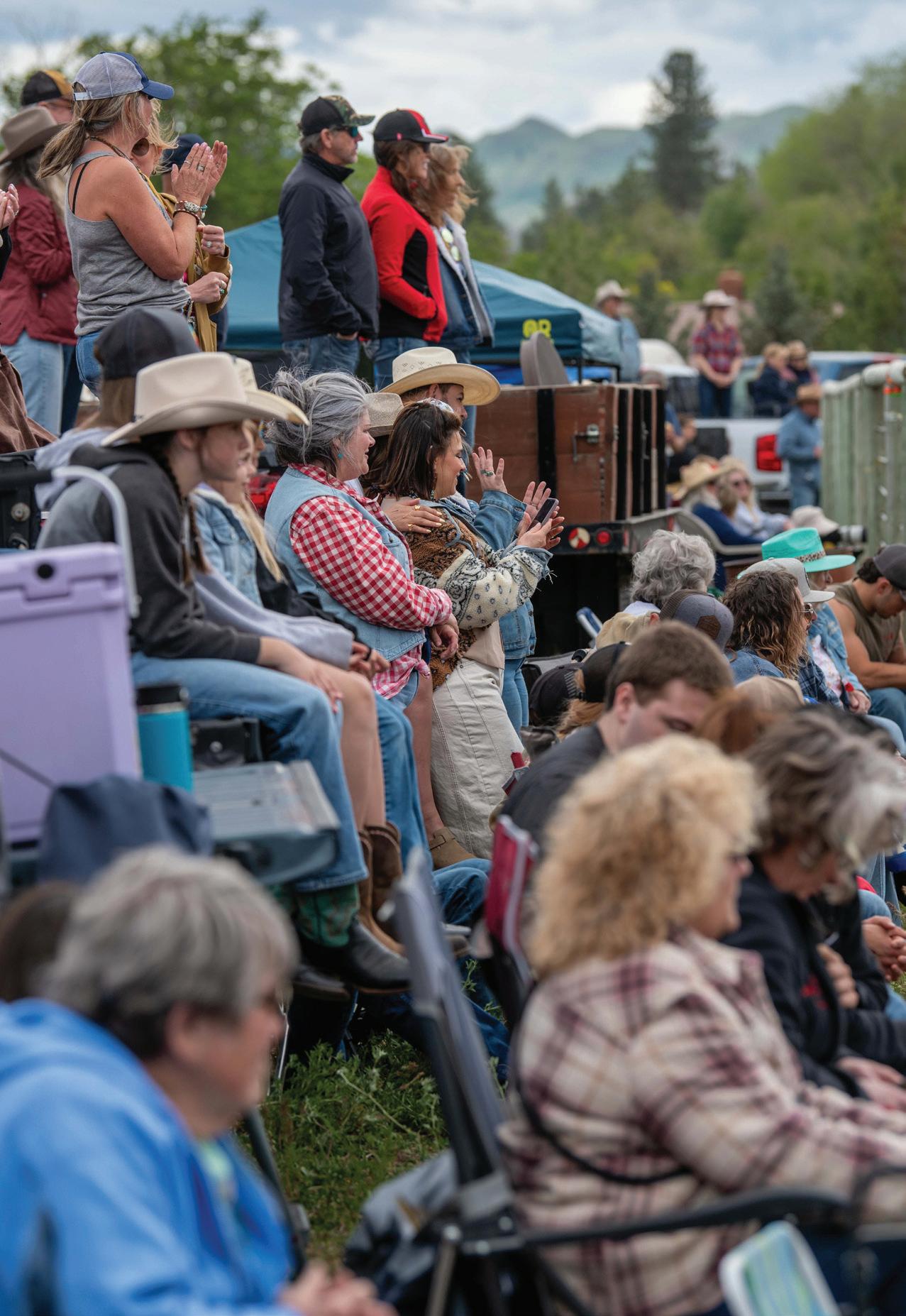
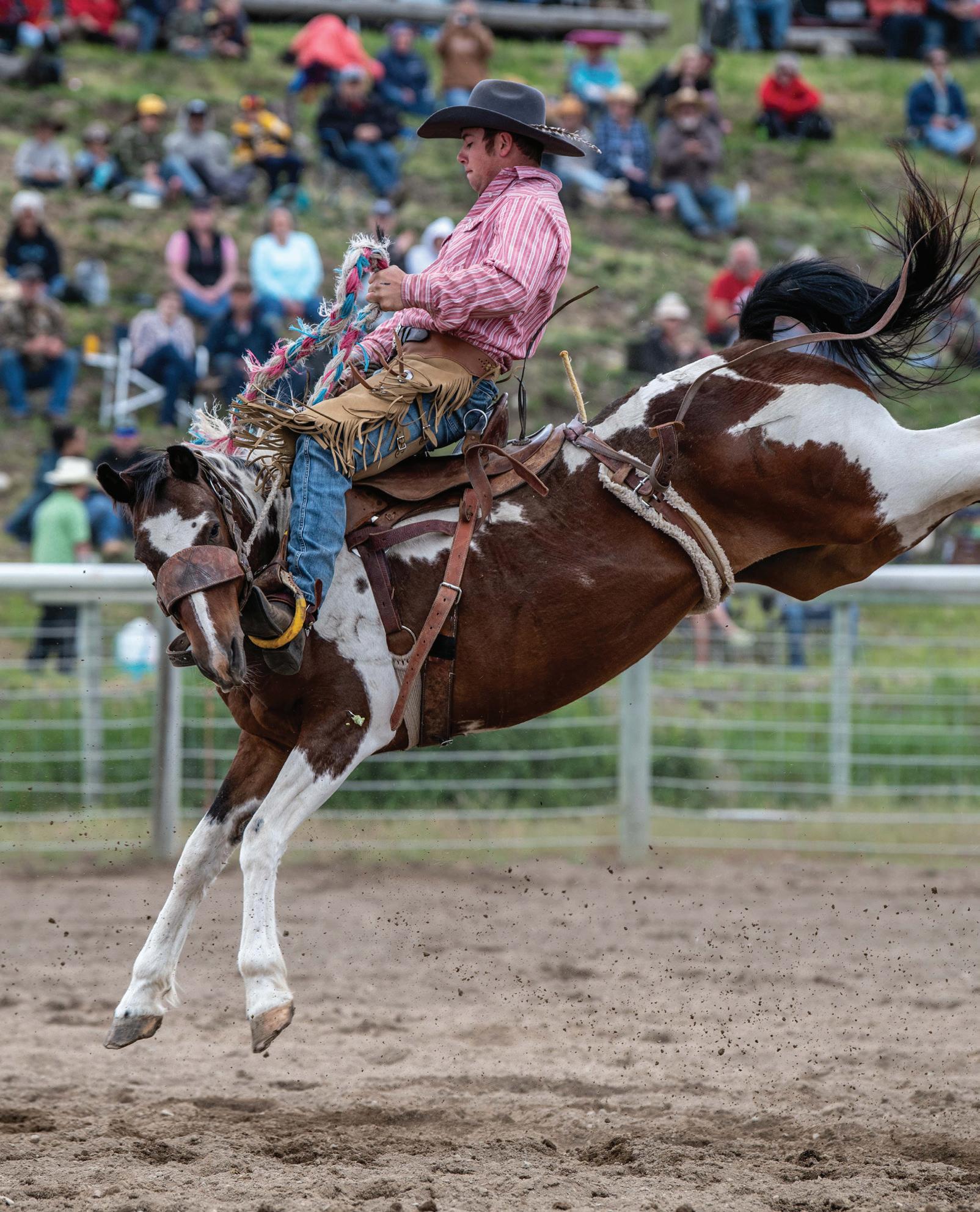
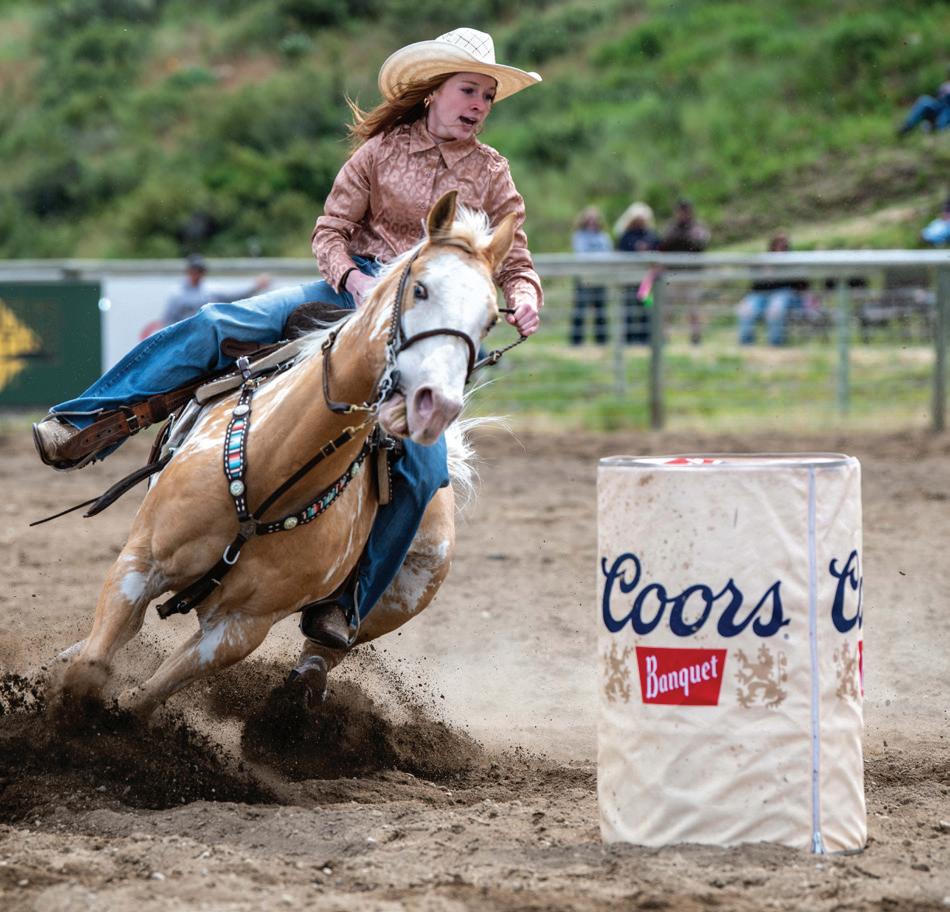
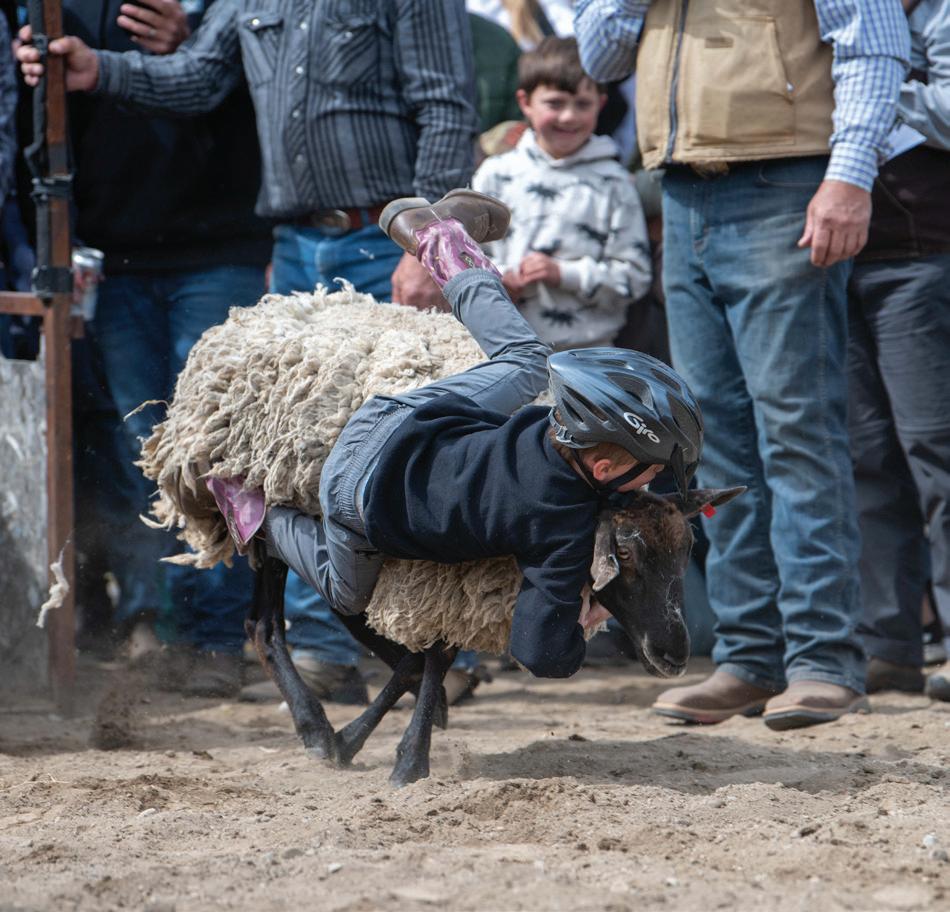
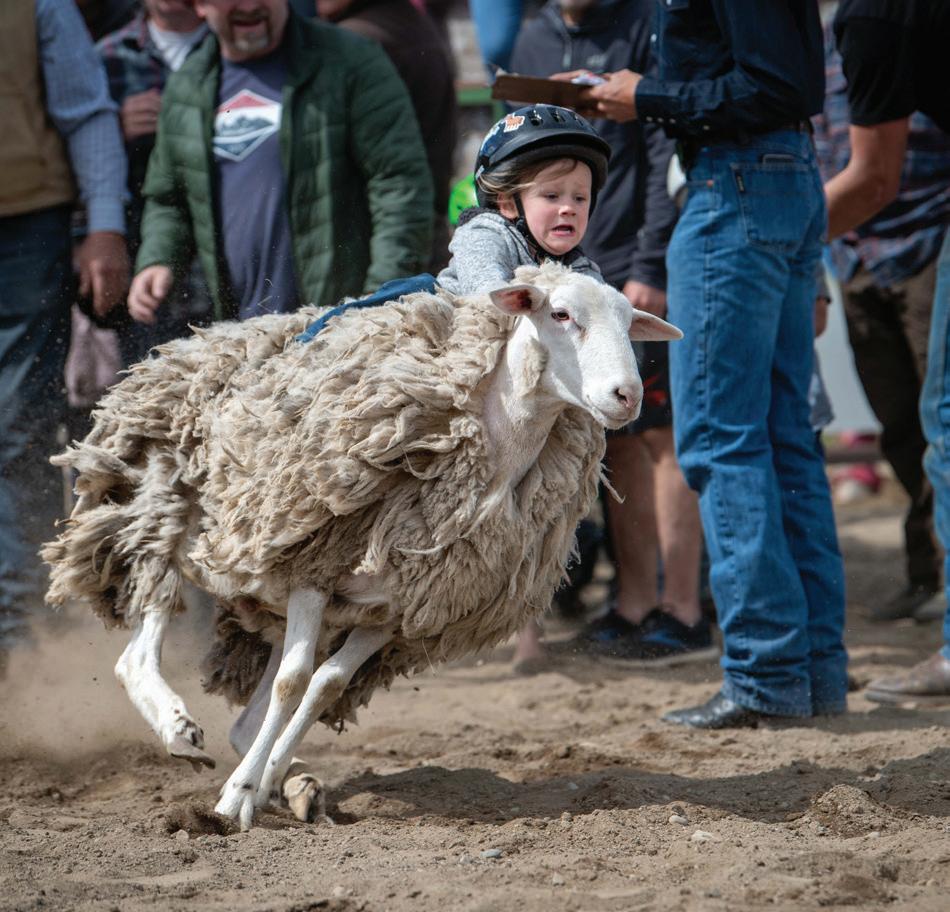

Delaney, Halpin dominate in distances
BY RICK LEWIS
The Liberty Bell High School boys’ track team rode the distance pair of Dexter Delaney and Will Halpin to fourth place in the final 2B team standings at this past weekend’s 1B-2B-1A state championships in Yakima. Meanwhile, the Mountain Lion girls placed seventh overall in 2B competition, but were named the “Combined State Champions” when ambulatory and wheelchair events were factored in.
Delaney, a junior, doubled as 2B state champion in the 1,600-meter run on Thursday and the 3,200M run on Saturday. Halpin was close on his teammate’s heels for third place in both events. Only St. George’s senior Benjamin Morales’ two second-place finishes prevented a pair of Mountain Lion sweeps in both events. With only five participating athletes at state, it didn’t appear to coach Erik Brooks that earning a spot on the final podium was a possibility for his Mountain Lion boys’ team Saturday morning in Yakima. But, at the end of that day, there was Liberty Bell with its 39 points, solidly ensconced in fourth place and called to the podium as one of the meet’s top teams over the three-day meet.
The girls earned a very respectable seventh-place tie with Cle Elum-Roslyn, and were awarded with the title of “combined” team champion once ambulatory athlete Kady Hammer’s points were added in to the team’s 33 points, and given a spot on the podium with the “State Champion” sign held up with pride.
It was the first podium finish for either the Liberty Bell boys or girls since the boys, led by the distance running pair of Liam Daily and Ben Klemmeck, took second place in 2014 at the state meet.
Delaney’s accumulated 20 points (10 points for each win) and Halpin’s 14 points — 6 each for his third-place medals and 2 for his effort in the 800M run — accounted for 34 of Liberty Bell’s 39 points. Aksel Thomson (fifth place) was awarded four points in the javelin and Morgan Spellman scored a single point for his seventh-place finish, also in Friday’s javelin finals.
St. George’s (Spokane) was the boys’ meet champion with 75 points, Goldendale took home second at 44 points and local rival Brewster scored 42 for third place. In all, 31 schools were represented in the 2B meet. The Mountain Lions were a mere 5 points from matching their runner-up trophy placing of a decade ago.
The Liberty Bell girls scored 30 points to earn their seventh-place finish. St. George’s duplicated their boys’ program with the 2B title, outpacing Davenport, Brewster and Rainer in the top four.
Senior Leki Albright’s 11:46.71, second-place finish in the 3,200M, third place in the 1,600M at 5:19.72 (a personal record) and her 4x400M relay team’s surprise third place (4:24.77) in the final girls’ event on Saturday helped lead the Mountain Lions to seventh.
Peak performances
If there was a theme to Liberty Bell’s appearance at the state championships this year, it would have something to do with peaking at the right time, especially for several seniors participating in their last-ever high school meet. In all, six Mountain Lions set new career personal records at state this year, two athletes
setting three individual marks. PRs were set in 11 events and senior Will Halpin set a PR every time he stepped on the track for an individual event, including his preliminary and final performances in the 800M. Kady Hammer and Halpin led the way with PRs in three events.
The PR parade got underway in Thursday’s late afternoon session almost as soon as the team got off the bus. An early event was the one-and-done 1,600M meters for both boys and girls. The boys ran first and the 2B race might have been the most exciting race of the three-day meet, with the three top runners in the classification — Liberty Bell’s Dexter Delaney and Will Halpin going up against St. George’s (Spokane) Benjamin Morales.
The 1,600M was not the first meeting of Delaney, Halpin and Morales, and not limited to the track. The last time they locked up was on a golf course in Pasco last November at the WIAA cross country Championships. Morales ran with Delaney for about half of the 5-kilometer race, but then fell back into second place as Delaney went on to claim the 2B title by about 40 seconds.
This time, Morales wouldn’t let the Mountain Lion junior get away. But it wasn’t just about those two. Halpin decided to join the party and when it all got down to it, the trio crossed the finish line mostly as a clump, Delaney setting a personal record at 4:22.211, Morales a lean behind at 4:22.22, and Halpin at 4:22.66, a mere half-second behind his state champion teammate.
More PRs
In the girls’ 1,600M, both Mountain Lion runners set new personal marks, Albright crossing in third place at 5:19.72, six seconds ahead of her previous mark set at the 2022 state championships. Samra Newton finished in sixth place, her 5:35.88 also a new record by about six seconds, set earlier this season.
Fast forward to Saturday and the 3,200M runs where the Mountain Lion distance crew remained the same: Albright and Newton for the girls, Delaney and Halpin for the boys, and it was a familiar field at the front, again. Morales was awaiting the rematch at twice the distance.
“He’s tough,” said Delaney of Morales on Saturday after the 3,200M. “He doesn’t like to lead, but just sits there behind you all the way. I was hoping he would lead and break the wind a bit, but he wouldn’t do it.”
The Liberty Bell junior added a last lap pass of a slower runner into the ad lib strategy to create a bit of a gap between him and Morales. “As I came up behind him I said, ‘passing inside’ and he stepped out a bit. I went inside hoping to force him (Morales) outside.”
The strategy worked at least temporarily, giving the Mountain Lion a little space as they rounded the final corner.
Morales closed the gap, briefly, but Delaney found an extra kick, something he hasn’t been normally noted for, and owned the final 75 meters, pulling away to a three-second win at 9:33.92.
Halpin crossed the line at 9:53.19, outkicking Treyton Martin of Toledo by a half second to the line to cap a notable career, running for Liberty Bell since his junior high days.
Halpin has stood on the team podium multiple times in both fall and spring running sports, at the top as the 2021 state champions in cross country (and twice more, placing in 2022 and 2023) and now, finally, in track with the fourth-place team. He is headed off the Southern California for both school and running at Claremont-McKenna, east of Los Angeles.
The U.S. Forest Service’s Pacific Northwest Region will waive fees at most day-use recreation sites in national forests across Washington and Oregon on Saturday, June 8, in celebration of National Get Outdoors Day.
The fee waiver applies to day-use fees at trailheads, picnic areas, visitor centers and other recreation sites across the region’s 17 national forests and grasslands. Other fees, such as those for camping, cabin rentals, or special permits, will remain in effect. Sites operated by concessionaires may participate at their own discretion.
For one weekend, anglers across the state can fish for many species without a license. This year, Washington Department of Fish and Wildlife’s

Halpin was at a loss for words in trying to define just what his Liberty Bell experience has been for him academically and through athletics. “It means everything to me,” he said after some reflection.
In the girls’ long race, the field spread out fairly quickly, with Thomas from St. George’s taking the early lead at the end of the first lap. Albright went with her and held pace for the first three laps. Newton would fall back, finishing the first lap in ninth place, and then beginning to methodically work her way up through the field, a runner at a time, finding herself on the seventh lap in third place and continuing to stretch out her position on the track while running essentially alone.
Albright and Newton would finish in the second and third positions, respectively, and both in personal record time. Albright’s 11:45.71 beat her previous record set in April at the Shoreline Invitational. Newton’s time was an astounding 21 seconds faster than her previous PR, set last week at the District 6 championships. Exceptional efforts
Aksel Thomson qualified for state in three events, the 300M hurdles, the boys’ 4x400M relay, and the javelin. Thomson had tried the hurdles before with limited success, but qualified for state with a PR run at Brewster last week. The competition was tougher the Liberty Bell senior, who did not qualify for the finals with his 45.74 run, even with his second-best time of the season.
With teammates Halpin, Morgan Spellman and Kyler Mitchell, Thomson and the Liberty Bell 4x400M relay team was also not able to crack the top eight in the preliminary heats and did not run in the final heat on Saturday.
Thomson and Spellman did both qualify for finals in the javelin, though, and both earned podium spots. Spellman, a junior this year, threw his javelin 145 feet, 3 inches to a seventh-place finish while the senior Thomson went out on a high, setting his final career personal record with a toss of 156 feet, 11 inches, taking fifth place.
Senior Sandra Hernandez stepped in last week at the District 6 meet to help the girls 4x200M relay squad qualify for state after the loss of anchor Taylor Hover. The girls ran just well enough to
(WDFW) annual Free Fishing Weekend event will take place June 8-9. Other rules such as seasons, size limits, daily limits, and area closures are still in effect. Anglers should check current fishing regulations before hitting the water, as well as any current emergency rules.
The Liberty Bell Booster Club’s annual awards dinner and fundraiser will be held on Friday, May 31, at the Twisp Valley Grange. The event opens at 5 p.m. with a social hour before dinner is served at 6 p.m. A live auction follows dinner. A program featuring Mountain Lion team and individual awards, Booster Club and Special Fan awards and a presentation on the club’s 2024 project installing a retractable flag in the Lions’ Den will be a part of the festivities.

qualify at 1:52.24 in the seventh position for the Saturday final.
Audrey Roman opened the final 200 heat with a solid first leg, handing off to Ingrid Venable to complete the first lap. Hernandez took the baton for the third leg and handed off to Wynter Woras for the anchor leg. The girls finished eighth in a close battle with Riverview, just not able to overcome the Panthers in the final 50 meters, crossing the line with a 1:53.71.
Perhaps the surprise of the day came in the girls’ last event of the meet in the 4x400M relay. On Friday, the Mountain Lions were the sixth-fastest qualifying team, their time of 4:26.39 putting them behind Toutle Lake (4:26.22) and Toledo (4:21.94). In Saturday’s final, Woras took the lead position and held her own through the full lap stagger, getting to the first handoff to Albright — who still had to deal with the stagger through the first turn of the second lap, and found herself in fifth place as the runners cut in on the back stretch.
Albright held her own and when she handed off to Roman for leg three, they were in a virtual tie for fourth. Roman kicked it in and by the time she got to the midway point up the backstretch, he Mountain Lions were in third place and
Cost is $25 per person; themed tables for 10 can be purchased in advance. Those tables will also feature Liberty Bell gear and other accoutrements. Tickets are available, and limited, by emailing lbhsboosterclub1@gmail.com, or calling Liberty Bell High School at (509) 996-2215.
The Methow Valley Chapter of Backcountry Horsemen will hold their monthly meeting on Thursday, June 6, at the Masonic Hall in Twisp. The gathering begins at 5 p.m. with a potluck, followed by discussion of the summer schedule for trail cleaning, the North Summit Horse Camp opening, and a picnic to thank Washington Trail Association workers on June 16. For information, visit BCHW.org.
the speedy sophomore appeared to be pulling up on the leaders, St. George’s and Rainier.
Roman handed off to Hernandez for the final leg and the last carry for the senior. It came down to a final stretch donnybrook, Toledo and Toutle Lake anchors pressing Hernandez. But she found something with about 25 meters to go and suddenly pulled noticeably ahead, taking third by three-tenths of a second over the Indians of Toledo, the Ducks falling a full second behind in fifth place.
“To be honest,” said coach Brooks, regarding his expectations for a podium finish, “Not in my wildest dreams.” The numbers just didn’t look possible. But with Delaney and Halpin’s two first and third placings in both the distance races, and points earned by Halpin in the 800, and Thomson and Spellman’s points in the javelin, it was good enough.
“It’s just a great way to close out the meet,” said Brooks. The two state championships for the Delaney, the boys’ team trophy, the girls’ combined trophy, all of the PRs at state, and the girls’ 4x400M relay performance were, indeed, “a pretty good way to go out.” Or maybe, for this year’s senior class, it’s pretty close to everything.
Methow At Home invites the community to learn the game of petanque with Paul and Jacque Smith, who hope to start a weekday morning petanque group, on Wednesday, June 5, from 10-11:30 a.m. at Heckendorn Park in Winthrop. Petanque rules can be found at www.wikihow. com/Play-Petanque. Register for the free event at methowathome.org.
HIKE
Methow At Home hosts a gentle 5-mile hike on the Founders Trail with former park ranger Carolyn Loren on Thursday, June 6. Carpool from the Winthrop Barn at 9 a.m. Bring snacks, water, layers, etc. Register for the free event at methowathome.org.

THE SHAFER HISTORICAL
Museum is hiring for several paid positions. Bookkeeping assistant, volunteer coordinator and museum educator/summer camp teachers.
Please see https://www.shafermuseum.org for details. To apply, send resume and cover letter to director@shafermuseum.org
THE METHOW VALLEY
METHOW RECYCLES IS seeking an executive director with a passion for our mission and the capacity to further our vision for the future of recycling and waste prevention in rural north central Washington. This position requires organizational leadership, financial accountability, management capabilties, fundraising, and willingness to work in recycling operations.
Salary range 68,000-73,000/year DOE full time, .75 fte negotiable. Benefits incl. health insurance, paid vacation, sick leave, and retirement. Visit https://www.methowrecycles. org/about/were-hiring to apply.
CLEAN STAY LLC.
Hiring CLEANERS!!! Starting wage $17.00- $30.00 w/ generous raises based on performance. Benefits include gas reimbursements and flexible schedules. Looking for individuals with proficient skills in time management, organization, and attention to detail. Requires reliable transportation and a cell phone. Contact Karina at (509) 429-9374 to see if this is a perfect fit for you!!
METHOW VALLEY SCHOOL District is accepting applications for the following positions: MS Boys Wrestling Coach, MS Girls Wrestling Coach, HS Football Assistant Coach, MS Football Assistant Coach. Visit the district website at http:// methow.org/district/employment/ to view full job descriptions and to submit an online application. Positions are open until filled.

Communications District is seeking a highly organized and detail-oriented Administrative Manager to oversee the day-to-day operations of a Special Purpose District. About Us: The Methow Valley Communications District is dedicated to providing reliable and efficient communication services to our community.
Responsibilities:
● Oversee administrative functions, including budgeting, payroll, accounts payable/ receivable, and record keeping.
● Manage office operations, including supplies and equipment purchases.
● Coordinate board meetings, prepare documents and record minutes.
● Manage district communications, including website updates and fielding phone calls from the public regarding assessment fees and exemptions.
● Other duties as assigned.
Qualifications:
● Strong organizational and time management skills.
● Excellent communication and interpersonal skills.
● Proficient in Microsoft Office (Word, Excel) and Google Suite (Docs, Sheets, Drive, etc.).
● Experience with budgeting and financial software (Quickbooks) is desirable.
STOP OVERPAYING FOR HEALTH INSURANCE! A recent study shows that a majority of people struggle to pay for health coverage. Let us show you how much you can save. Call Now for a no-obligation quote: 1-877-765-1117. You will need to have your zip code to connect to the right provider.
PREPARE FOR POWER OUTAGES today with a GENERAC home standby generator. $0 money down + low monthly payment options. Request a FREE Quote. Call now before the next power outage: 1-888-674-7053.
LEGAL NOTICES
INVITATION TO BID
Historic Rehabilitation of Okanogan County Courthouse 149 3rd Ave North, Okanogan, WA
Notice is given that Okanogan County is calling for sealed bids for the Renovation of the historic Courthouse located within the city of Okanogan. The full scope of the Bid Invitation is located on the Okanogan County Commissioners website: okanogancounty.org/ government/commissioners Sealed Bids will be received in the Okanogan County Commissioners Office at 123 Fifth Ave, N., Room 150, Okanogan, WA 98840, until Friday, June 14, 2024 by 5:00 p.m. at which time the Bid Proposals will be recorded as to Time and Date received. Bids received after this date and time will be considered untimely and rejected. Bids will be opened on Monday, June 17, 2024 at 10:30 a.m. in the commissioners hearing room located at 123 Fifth Ave, N., Room 150, Okanogan, WA 98840.
STRONGHEART GONZALEZ
A Minor Child DOB: 01/26/2011
STATE OF WASHINGTON TO: JOEL ALLEN GONZALEZ, WHOM IT MAY CONCERN AND ANYONE CLAIMING PATERNAL INTEREST IN THE ABOVE-NAMED CHILD.
I. NOTICE OF HEARING
1.1 You are notified that a petition was filed with this Court, alleging that the above named child is dependent
1.2 A hearing will be held on JULY 18, 2024 at 1:00 p.m., At Juvenile Court, Okanogan County Court House, Okanogan, Washington.
1.3 The purpose of the hearing is to hear and consider evidence on the petition.
1.4 If you do not appear, the court may enter an order in your absence establishing dependency II. SUMMONS/ORDER TO APPEAR
2.1 YOU ARE SUMMONED AND REQUIRED to appear at the hearing on the date, time and place indicated.
do not provide probable, significant, and adverse impacts from the proposal, the DNS will stand. Information is available at the Office of Planning and Development. Direct questions and comments to: Rocky Robbins, Senior Planner, Okanogan County Offi ce of Planning & Development, 123 5th Ave. N, Suite 130, Okanogan, WA 98840, (509) 422-7117. The date of publication in Okanogan County’s legal periodical of record is May 29th & 30th, 2024. Published in the Methow Valley News May 29, 2024; Okanogan Valley Gazette-Tribune May 30, 2024. OVG996820 PUBLIC HEARING NOTICE BUDGET SUPPLEMENTAL APPROPRIATION NOTICE IS HEREBY GIVEN by the Board of Okanogan County Commissioners that a Public Hearing is set 10:00


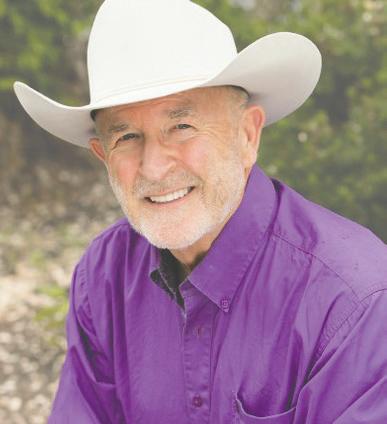
METHOW ARTS IS hiring a Communications/Marketing manager to join our small team. This position will manage all aspects of Methow Arts communications and marketing of the organizations, its events and programs including our quarterly arts magazine, social media, and website. 32 hrs. per week, $27 per hour plus benefits including paid time off and a health stipend. Please send cover letters and resume to Sarah Jo at director@ methowarts.org. Full job description at https://www.methowarts.org.
JOIN OUR CULINARY

Team at Sun Mountain Lodge! Location: Sun Mountain Lodge, Winthrop, WA Employment Type: Full-Time About us: Sun Mountain Lodge is a premier resort in the Methow Valley, renowned for exceptional hospitality and cuisine. We’re expanding our culinary team and seeking talented professionals for the following positions: Banquet Sous Chef Responsibilities:
• Assist in planning and executing banquet menus.
• Ensure top-quality and presentation of banquet dishes.
• Supervise and train banquet kitchen staff.
Qualifications:
• 3+ years in banquet or high- volume catering.
• Strong organizational and leadership skills Executive Chef Responsibilities:
• Oversee all culinary operations.
• Develop innovative menus.
• Lead and manage the kitchen staff.
Qualifications:
• 5+ years as an Executive Chef
• Proven leadership and menu development skills Sous Chef: Responsibilities:
• Assist Executive Chef in daily operations.
Are you a culinary wizard? We’re searching for talented chefs and line cooks to craft unforgettable dining experiences against the backdrop of stunning mountain vistas. Hospitality is your middle name? Our guest services team is looking for enthusiastic individuals to provide top-notch service and create memorable stays for our guests. Love the great outdoors? Embrace the adventure as part of our activities team, leading hikes, guiding tours, and helping guests explore all that the beautiful Methow Valley has to offer. Whether you’re seeking a career in hospitality, culinary arts, or outdoor recreation, Sun Mountain Lodge offers opportunities for growth, competitive benefits, and a welcoming work environment surrounded by nature’s beauty. Join us in creating unforgettable experiences for our guests. Apply now at SunMountainLodge.com and let your career ascent begin at Sun Mountain Lodge!
• Supervise and train kitchen staff.
• Ensure high-quality dish preparation.
Qualifications:
• 3+ years in a fine dining kitchen.
• Strong leadership and creativity Benefits for All Positions:
• Competitive salary and benefits.
• Professional growth opportunities. How to Apply: Submit your resume to https:// www.sunmountainlodge.com or call (509)996-4747 Join us in creating unforgettable dining experiences!
Come
WHEATLAND
● Ability to work remotely, attending one board meeting in person on the 2nd Monday of each month, at 5:30 pm in Twisp. To Apply:
Please submit your resume and cover letter to admin-mgr@mvcomm.
org Competitive salary based on qualifications ($28.00 - $34.00 per hour) Assigned duties and hours as negotiated Applications will be accepted until the position is filled. To learn more about Methow Valley Communications District, please go to: https://mvcomm.org/ MVCD is an equal opportunity employer and value diversity at our company. We do not discriminate on the basis of race, religion, color, national origin, gender, sexual orientation, age, marital status, veteran status, or disability status.
34 SERVICES CLEAN UP HAUL
AWAY “ Fireproof your Property.. Wood Debris * Old Pallets and Lumber*Bitter Brush& Branch’s* Barnaby Thistle* Pine Needles* Log’s & Stumps...Also Metal’s and Aluminum Recycled Items... Excavator and Dump Trucks are ready to Haul give me a Call Randall @ 509 997-2128 For free estimates.... Lots of valley references from mazama to chelan.
CUSTOM STONE FIREPLACE Facings* Slate Entree ways*Block Foundations*Brick Chimney Repairs* And All Types of Masonry Applications*40+ Years Experience*Licensed and Bonded*Photo album of projects*Free estimates call 509 997-2128 or 509-9974802
STATEWIDE
ANNOUNCEMENTS
ADVERTISE STATEWIDE with a $325 classified listing or $1600 for a display ad. Call this newspaper or 360-344-2938 for details.
DONATE YOUR CAR truck, boat, RV and more to support our veterans! Schedule a FAST, FREE vehicle pickup and receive a top tax deduction! Call Veteran Car Donations at 1-877-225-8568 today!
ELIMINATE GUTTER CLEANING FOREVER! LeafFilter, the most advanced debris-blocking gutter protection. Schedule a FREE LeafFilter estimate today. 20% off Entire Purchase. 10% Senior & Military Discounts. Call 1-888-360-1582.
For questions regarding the Invitation to Bid, please contact M J Neal Associate, Luis Rodriguez at lr@mjnealaia.com or (509) 663-6455. Published in the Methow Valley News May 22, 29, 2024; Okanogan Valley Gazette-Tribune May 23, 30, 2024. OVG996514
PUBLIC SERVICE
ANNOUNCEMENT:
A Solid Waste Advisory Committee Meeting will be held on Monday, June 3rd, 2024 at 4:00 p.m. Meetings are held at 1234 A 2nd Ave. S in Okanogan. If you would like to attend, please email jsklaney@co.okanogan.wa.us or call 509-422-7304. Published in the Methow Valley News May 22, 29, 2024; Okanogan Valley Gazette-Tribune May 23, 30, 2024. OVG996510
VENDOR LIST NOTICE
NOTICE IS HEREBY GIVEN, that Okanogan County is updating its list of potential vendors for the purchase of materials, equipment, supplies or services valued between Ten thousand dollars ($10,000) and Fifty thousand dollars ($50,000) in accordance with the county’s policy resolution 24-2020 and RCW 39.04.190. Below is a list of general categories in which the County may make purchases in 2024. Potential vendors of any of these categories are invited to notify the County in writing if they wish to be placed on the vendors list.
1. Computer Equipment or other related Equipment or Hardware Maintenance
2. Offi ce Equipment such as Copier/printers
3. Architectural, Engineering, or Planning Services
4. Legal Services
5. Personnel related services
6. Hardware or Building Supplies
7. Custodial and Janitorial Services
8. Maintenance Services
9. Sound Systems
10. Spray & Applicator Services
11. Herbicides and Pesticides
Potential vendors of the above categories who wish to be placed on the vendors list are encouraged to send a request to be placed on the vendor’s list or request a vendor list application by either writing a request to the Okanogan County Commissioners’ Office at 123 Fifth Avenue North, Room 150, Okanogan, WA 98840 or by sending an email request to Lanie Johns at ljohns@co.okanogan.wa.us
Published in the Methow Valley News May 29; June 26, 2024; Okanogan Valley Gazette-Tribune May 30; June 27, 2024. OVG996810
COURT NO.: 24-7-00059-24
NOTICE AND SUMMONS/ORDER
Dependency Hearing IN THE SUPERIOR COURT OF THE STATE OF WASHINGTON IN AND FOR THE COUNTY OF OKANOGAN - JUVENILE IN RE THE DEPENDENCY OF: LUCIAYLA ELISABETH

NOTICE VIOLATION OF THIS ORDER OR SUMMONS IS SUBJECT TO A PROCEEDING FOR CONTEMPT OF COURT PURSUANT TO RCW 13.34.070. A DEPENDENCY PETITION BEGINS A PROCESS WHICH, IF THE CHILD IS FOUND DEPENDENT, MAY RESULT IN PERMANENT TERMINATION OF THE PARENT-CHILD RELATIONSHIP. Dated this 22nd day of May, 2024. By direction of the Honorable ROBERT W GRIM Commissioner of the Superior Court Okanogan County, Washington SUSAN SPEIKER Clerk of the Superior Court Okanogan County, Washington by MARLENIA FITZGERALD Deputy Clerk Published in the Methow Valley News May 29; June 5, 12, 2024; Okanogan Valley Gazette-Tribune May 30; June 6, 13, 2024. OVG996816 SEPA 2024-2 M2 SUGAR REACH CHANNEL RECONNECTIONS THRESHOLD SEPA DETERMINATION
Project Summary Methow Salmon Recovery Foundation has proposed a suite of actions as an active restoration effort to restore natural processes, improve existing conditions and protect riparian and side channel habitat within a nine-mile reach along and adjacent to the Methow River. The effort proposes to enhance existing habitats in support of the recommendations identified in the Upper Columbia Salmon Recovery Plan (UCSRB, August 2007) and the Middle Methow Reach Assessment (Bureau of Reclamation, August 2010).
The suite of actions will be permitted through the WA Department of Fish and Wildlife (WDFW) application process for streamlined processing of fi sh habitat enhancement projects, authorized under RCW 77.55.181, which exempts local permit review other than floodplain review. Floodplain permitting applications will be filed with Okanogan County for each identified project area where excavation or alterations trigger permitting requirements.
The proposed action seeks to aid in the restoration of listed native salmon throughout the Methow River system through a series of targeted actions. These actions are designed to restore natural function and improve floodplain and side-channel habitats on participating private and public properties at the specifi c work areas between RM 41-50. Restoration actions will be completed within be within the active channel(s) of the Meth ow River and on fl oodplain areas adjacent to the active channel(s). Actions will occur on private, state, federal, and other ownership properties. landowner agreements will be secured for all work areas prior to implementation.
Project Location:
The M2 Sugar Reach project includes multiple work areas located between RM 41-50 of the Middle Methow River. The project area includes riparian, floodplain, off-channel, side-channel, and main¬channel areas adjacent to and in the Methow River. The project areas include private and public (state) lands. Comments must be submitted in writing to the Okanogan County Office of Planning & Development, 123 5th Ave N Ste. 130, Okanogan, WA 98840, no later than June 13th, 2024. If no comments are received or the comments received
ID: 885 9146 9116 Or Join Zoom Telephone Audio Only 1 253 205 0468 Meeting ID: 885 9146 9116 The purpose of the hearing is to receive public comment for or against the consideration of a budget supplemental appropriation within the Water Conservancy Board fund 139 and Current Expense Non-Departmental. The budget supplemental allocates budget within Current Expense Non-Departmental for the county’s contribution to the Water Conservancy Board for costs associated with board staff time and processing water transfer applications in the amount of $7,000. The hearing will be held in person or remotely in the County Commissioners’ Hearing Room located at 123 5th Avenue North, Okanogan, Washington. Persons wishing to comment may attend the hearing in person or via Zoom to be called on for comment or submit comments in writing to the Commissioners’ Offi ce at 123 5th Avenue North, Rm 150, Okanogan, Washington 98840, or by email to ljohns@co.okanogan. wa.us. Published in the Methow Valley News May 29; June 5, 2024; Okanogan Valley Gazette-Tribune May 130; June 6, 2024. OVG996849 OKANOGAN COUNTY NOTICE OF FINAL DECISION Project: Short Plat Alteration 2023-5 “Langdalen” Proponent: Philip & Catherine Davis
Decision: Approved The Okanogan County Offi ce of Planning and Development approved the above-noted project. Within 20 calendar days of the publication date, parties with standing may appeal this decision to the Okanogan County Hearing Examiner at 123 5th Ave. North, Suite 130, Okanogan, WA, pursuant to OCC 16.45.010 An appeal must include the $300.00 appeal


FINAL DECISION Boundary Line Adjustment: (parcels 3322270316, 3322340234 & 3322270315)
Proponent: Gordon Reynaud & Adrian Chavey Decision: Approved Exempt Segregation: (parcel 3829313001) Proponent:
at 123 5th Ave. N. Suite 130, Okanogan, WA 98840, pursuant to OCC 2.67.010. An appeal must include the $1,250.00 appeal fee. Published in the Methow Valley News May 29, 2024; Okanogan Valley Gazette-Tribune May 30, 2024. OVG996814 STATE ENVIRONMENTAL POLICY ACT Withdrawal of Determination of Non-Significance 16 May 2024 Town of Twisp Agency Contact: Randy Kilmer. clerktreasurer@townoftwisp,com, 509 997 4081 Agency File Number: Ordinance #817 Project: The proposal is to create a mechanism to regulate short-term vacation rentals by amending the Town of Twisp Municipal Code. Applicant: Randy Kilmer, Town Clerk Town of Twisp PO Box 278 Twisp, WA 98856 (509) 997-4081
The Town of Twisp Town Council took action on 15 May 2024: that new information indicates that the Determination of Non-Significance issued by the Administrator on
September 14, 2023, is inadequate and is withdrawn pending possible modifi cations to the amendments to the Town of Twisp Municipal Code regarding Short Term Vacation Rentals as recommended by the Planning Commission. Published in the Methow Valley News May 22, 29, 2024 TOWN OF TWISP STATE ENVIRONMENTAL
POLICY ACT
Determination of Non-Significance Date: 16 May 2024 Lead agency: Town of Twisp Agency Contact: Randy Kilmer Agency File Number: Parking Code Update The Town of Twisp is proposing to update the Chapters 18.20.120 Off Street Parking requirements, and 18.30 Commercial Zoning Districts of the Zoning Code. The Town has determined that this proposal will not have a probable signifi cant adverse impact on the environment. An environmental impact statement (EIS) is not required under RCW 43.21C.030(2)(c). A copy of the Environmental Checklist draft code amendments are available for review at Twisp Town Hall. This determination is based on the following findings and conclusions:
Adoption of the Chapters 18.20.120 Off Street Parking requirements, and 18.30 Commercial Zoning Districts of the Zoning Code is considered a non-project action and will have no adverse effect on the environment. This DNS is issued under WAC 197-11-340(2) and the comment/ appeal period will end on June 12, 2024. Comments and/or appeals must be made in writing to Randy Kilmer, Clerk Treasurer, Town of Twisp, 118 S. Glover Street, PO Box 278, Twisp WA 98856
Signature: Thom Vetter
Date: 16 May 2024
Published in the Methow Valley News May 22, 29, 2024
SUPERIOR COURT OF WASHINGTON FOR OKANOGAN COUNTY Estate of


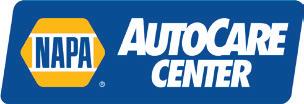




GERALD EVANS, Deceased.
NO. 24-4-00054-24
PROBATE NOTICE TO CREDITORS
(RCW 11.40.030)
PLEASE TAKE NOTICE
The above Court has appointed Stewart Evans as Personal Representative of Decedent’s estate. Any person having a claim against the Decedent must present the claim: (a) Before the time when the claim would be barred by any applicable statute of limitations, and (b) In the manner provided in RCW 11.40.070: (i) By filing the original of the claim with the foregoing Court, and (ii) By serving on or mailing to me at the address below a copy of the claim. The claim must be presented by the later of: (a) Thirty (30) days after I served or mailed this Notice as provided in RCW 11.40.020(1)(c), or (b)
Four (4) months after the date of first publication of this Notice. If the claim is not presented within this time period, the claim will be forever barred except as provided in RCW 11.40.051 and 11.40.060.
This bar is effective for claims against both the Decedent’s probate and non-probate assets.
Date of First Publication of this Notice: May 22, 2024 Susan Donahue, WSBA No. 43660
Attorney for Stewart Evans, Personal Representative Law Office of Susan Donahue 125 West 2nd Avenue, Suite “B” P.O. Box 81 Twisp, WA 98856 sdonahue@sdonahuelaw.com
509-996-5944 (phone)
509-362-9692 (fax)
Published in theMethow Valley News May 22, 29; June 5, 2024
NOTICE OF PUBLIC HEARING AMENDMENT OF WMC CHAPTER 15.08, WESTERNIZATION
NOTICE IS HEREBY GIVEN
THAT the Winthrop Planning Com-
mission will hold an open record
public hearing on the proposed amendments Winthrop Municipal Code (WMC) Chapter 15.08 Westernization. The proposed amendments clarify the zones in





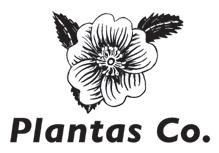

which the code applies in Sec-
tion 15.08.030; add an option for the Town council to authorize construction during summer months with a mitigation agreement in Section 15.08.060; allow for aluminum clad wood windows above street level and on side and rear walls in Section 15.08.230; and revise standards for solar arrays in section 15.08.240.H. The proposed amendments apply within specified districts in the incorporated limits of the Town of Winthrop, Township 34, Range 21, parts of Sections 2 and 11.
Public Hearing: The public hearing will take place on Tuesday, June 11, 2024, at 6:05 pm, at the Winthrop Auditorium, 51 Highway 20, Winthrop, Washington. The hearing will be conducted in accordance with WMC Chapter 19.10. Any person desiring to present written or oral testimony may do so at the hearing, and by doing so shall have standing as a party of record. Any person requiring assistance in accessing the hearing is urged to contact Town Hall at least 24 hours in advance.
Information available: Persons wishing to view the proposed amendments or receive a notice of the action taken may contact Winthrop Town Hall, 206 Riverside Ave. between the hours of 9 a.m. and 4 p.m., Monday - Friday. Pursuant to WMC 19.06.040, a staff report will be available seven days prior to the public hearing. For further information contact Rocklynn Culp at (509) 996-2320.
Comments: Written comments may be submitted in advance of the public hearing. Comments should be submitted to the Town Planner, Town of Winthrop, PO Box 459, Winthrop, WA 98862, or by email to planner@townofwinthrop.com.
This notice is given pursuant to Winthrop Municipal Code Chapter 19.06.
DATED: May 24, 2024
Rocklynn Culp
Town Planner
Published in the Methow Valley News May 29, 2024 TOWN OF TWISP –CREATIVE DISTRICT REQUEST FOR PROPOSALS

Town Banners Artwork Contest
Deadline: July 15, 2024 $500 artist prize for each design chosen
The Town of Twisp cordially invites applications from individuals to submit artworks for consideration in the town banners hung on HWY 20 and on Glover Street. Artwork will enhance the community, inviting visitors to Twisp, WA and link the community to our offerings. Selected artwork will align with the following goals of the Town of Twisp. The Town of Twisp and creative district will be choosing four new designs to enhance the downtown district.
Overview and Background of Twisp, WA Twisp, a small town in Okanogan County in north central Washington, sits at the confluence of the Twisp and Methow rivers in the eastern foothills of the majestic North Cascade Mountains. Twisp’s central location, approximately half way down the Methow Valley from the mountain headwaters to the Columbia River, helped it grow into the valley’s largest town and dominant commercial center following its founding in the last decade of the 1800s. Mining, which brought the first non‐Indian settlers to the valley, agriculture, and especially timber dominated the town’s economy for much of its history. Twisp’s timber mill is now gone, while agriculture continues to play a significant role in the town’s economy.
More recently, a growing recreational tourism industry is thriving‐‐ significantly increased by the 1972 opening of the North Cascades Highway. Many small businesses serving valley residents are located in Twisp. The creative economy plays a signifi cant role in Twisp impacting and enriching the lives of residents and visitors alike. Art studios, food and beverage spaces, events, performance and galleries sprinkle the downtown corridor, while art installations can be seen throughout the town – weaving together the community‐minded life of Twisp, WA. The Project – Town Banner Artwork contest Art submissions should be signifi cantly





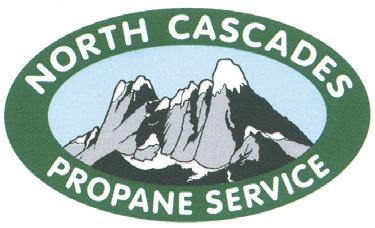
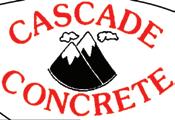

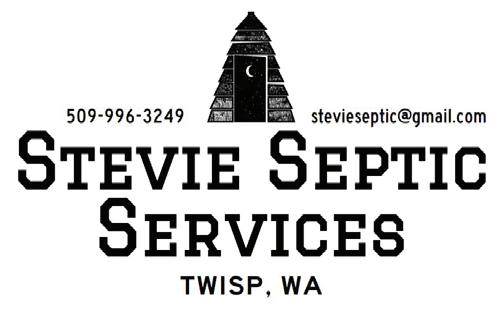























Despite bringing a relatively small contingent to the state track meet in Yakima, Liberty Bell athletes made the best of their opportunities to claim a fourth-place finish for the boys and a seventh-place finish for the girls. Including ambulatory results, the girls were named combined state champions.




























BY RICK LEWIS
Liberty Bell High School freshman tennis player Kara McMillan was named by the Washington Interscholastic Activities Association (WIAA) as their 2B Athlete of the week for the week of May 13. The WIAA awards that honor each week of the academic school year to a boy and girl in each of its six school classifications. In its statement of nomination, the WIAA said on its website, “McMillan, a freshman tennis player for the Liberty Bell Mountain Lions, is a standout example of what it means to be a student-athlete. She is the girls’ varsity team captain and helped grow the tennis team this past offseason after playing last year at second singles on the varsity girls’ team as an eighth-grader. She maintains a 3.9 GPA, while also competing in 4-H. Her classmates and teachers describe her as a natural leader and role model. As one teacher said, ‘I wish I had an entire classroom full of Karas.’” McMillan fell one match short in her bid to earn a trip to the 2024 WIAA state tournament in the District 6-7 crossover last week, falling to the 2023 second-place finisher from Jenkins High School, Simi Sahota, 6-0, 6-1. Sahota’s loss in the 2023 state championship was to her sister Avi. The two are seeded as No. 1 and No. 2 in this year’s bracket.

Sophomore Gavin Blank also had a near miss in the boys’ 1A/2B/1B District 6 tournament, losing his first-round match to Albin Askew of Cashmere, 4-6, 6-4, and then 7-6 in a rubber game tie-breaker. That loss put him in the con-
solation bracket, where he faced Chelan senior George Neff, winning the first set 6-1, then dropping the final two, 4-6 and 0-5.
Liberty Bell assistant coach Megan Beggs was pleased with the two Moun-

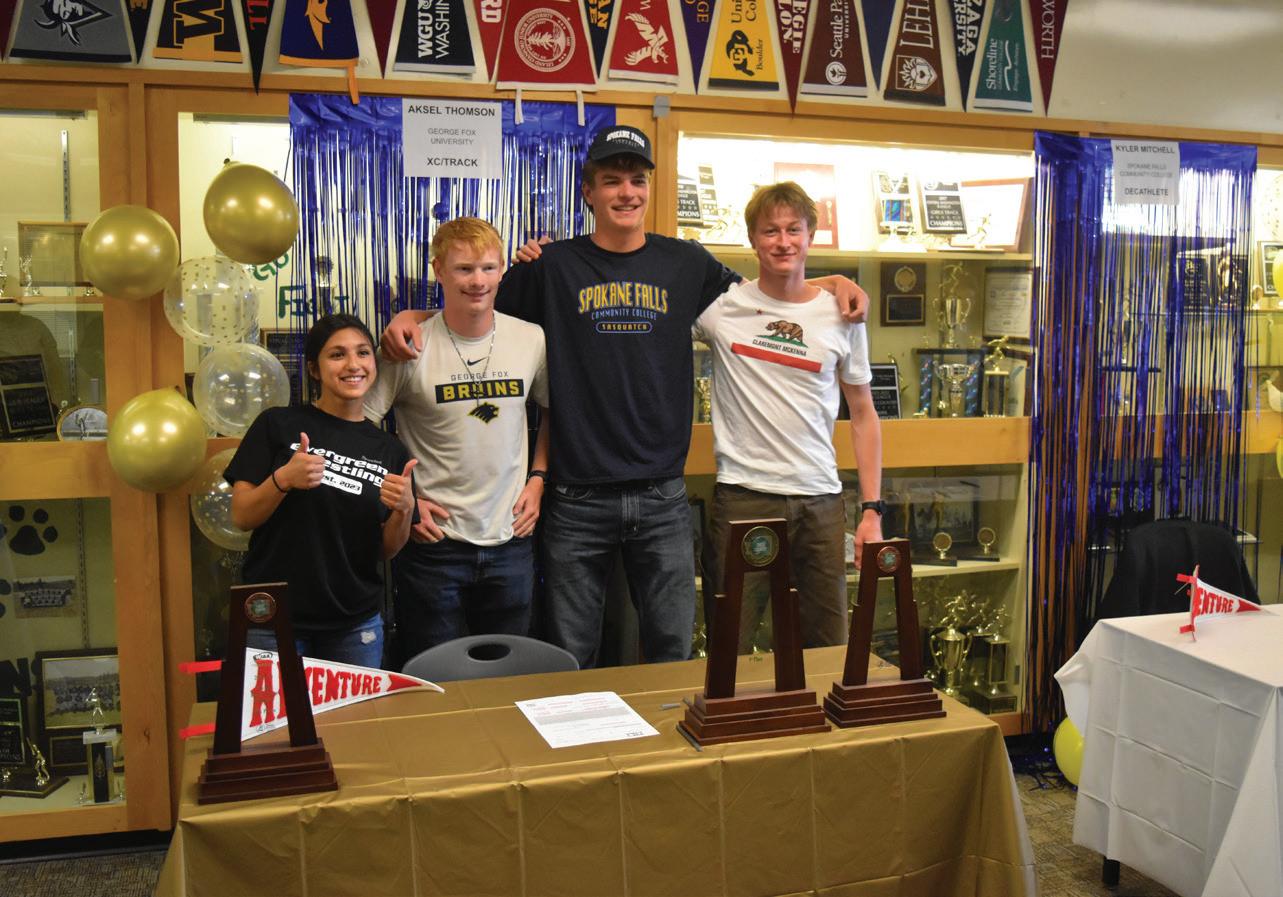
tain Lion efforts. “Both of them have played well this season and have learned a lot,” she said at McMillan’s crossover match in Omak. “Gavin hung in there and battled hard, and Kara playing a match to get into state says so much about how hard she has worked this year.”
Both McMillan and Blank were named to the Central Washington B League’s All-League Second Team.
Signing day for seniors
Liberty Bell High School and the Methow Valley Independent Learning Center joined forces on Wednesday last week to celebrate four Methow Valley seniors headed off in the fall to pursue college careers in various subjects and athletics.
Mariah Paz, a standout wrestler for the Mountain Lions, will be studying and wrestling at Evergreen State University in Olympia. She is taking on a new role as a pioneer in the fledgling Geoduck Women’s Wrestling program, gearing up for their first year of competition at the NCAA Division III level. She will be studying Tribal Government and Relations.
Aksel Thomson travels down the I-5 corridor to Newberg, Oregon, where he plans to study mechanical engineering and run both track and field and cross country for George Fox University, also an NCAA Division III school.
Kyler Mitchell will enter college at Spokane Community College’s Spokane Falls campus to play basketball and get a start on a physical education
NEED A TOW?
CLASSIC TOWING, TWISP: 997-2333
POST OFFICES
CARLTON: 997-6091; 2274 Highway 153
METHOW: (509) 923-2759; 34 Main St.
TWISP: 997-3777; 205 Glover St. WINTHROP: 996-2282; 1110 Highway 20
PET PROBLEMS?
METHOW VALLEY VETERINARY
HOSPITAL: 910 Highway 20, Winthrop: 996-3231; www.methowvalleyvethospital.com
INFORMATION CENTERS
TWISP: 997-2926; 201 Methow Valley Highway (Methow Valley Community Center)
WINTHROP: 996-2125; 49 Highway 20
NEED A PLACE TO STAY?
METHOW RESERVATIONS: 996-2148 or (800) 422-3048; www. methowreservations.com; info@ methowreservations.com
OPEN LATE
HANK’S MINI MARKET: 410 E. Methow Valley Highway, Twisp; 997-4332; until 10 p.m. every day; 24-hour fueling
MAZAMA STORE: 50 Lost River Road, Mazama; 996-2855; 24-hour fueling
PARDNERS MINI MARKET: 900 Highway 20, Winthrop; 996-2005; until midnight every day; 24-hour fueling
TWISP CHEVRON: 126 N. Methow Valley Highway; 997-3181; until 10 p.m. weekdays and Sunday, 11 p.m. on Friday and Saturday; 24-hour fueling
AIRPORTS
TWISP MUNICIPAL AIRPORT: 40 Wagner Road, Twisp; 997-2311
METHOW VALLEY STATE AIRPORT: Twisp-Winthrop Eastside Road; (360) 618-2477
VALLEY VETERINARY CLINIC: 20335 Highway 20, Twisp; 9978452; www.valleyveterinaryclinictwisp.com
WINTHROP VETERINARY CLINIC: 523 Highway 20, Winthrop; 9962793; www.winthropvetclinic.com
NEED TO CHARGE YOUR ELECTRIC VEHICLE?
TWISPWORKS: 502 S. Glover St., Twisp; 997-3300; twispworks.org
PINE NEAR RV PARK: 316 Castle Ave., Winthrop; (509) 341-4062; www.pinenearpark.com
INN AT MAZAMA: 15 Country Road, Mazama; 996-2681; www. innmazama.com
SUN MOUNTAIN LODGE, WINTHROP: 996-2211; www. sunmountainlodgecom
TWISP RIVER SUITES: 140 W. Twisp Ave., Twisp; 997-0100; www. twispriversuites.com.
EAST 20 PIZZA: 720 Highway 20, Winthrop; 996-3996; https://east20pizza.com
ABBYCREEK INN: 1006 Highway 20, Winthrop; 996-3100; www. abbycreekinn.com
TWISP TOWN HALL: 118 S. Glover St.
WINTHROP LIBRARY: 112 Norfolk Road; 996-2685; www. ncwlibraries.org/locations/ winthrop-public-library
CAB & SHUTTLE
METHOW MOTION SHUTTLE SERVICES: 996-2894; www. methowmotion20.com; reservations@methowmotion20.com
TRANSIT
OKANOGAN TRANSIT AUTHORITY (TRANGO): www.okanogantransit.com; (509) 557-6177
POLICE/EMERGENCY/911
TWISP POLICE DEPARTMENT: 997-6112; townoftwisp. com/index.php/departments/ police-department
WINTHROP MARSHAL’S OFFICE: 996-2160; www.winthropmarshals.com
OKANOGAN COUNTY SHERIFF’S OFFICE: (509) 422-7232; www. okanogansheriff.org
WASHINGTON STATE PATROL: (509) 422-3800
OKANOGAN COUNTY FIRE DISTRICT 6: 997-2981
AERO METHOW RESCUE SERVICE: 997-4013; www.aeromethow. org
LIBRARIES
TWISP: 997-4681; 201 Methow Valley Highway (Methow Valley Community Center); www.ncwlibraries.org/locations/twisp-public-library; wireless hot spot
WINTHROP: 996-2685; 112 Norfolk Road; www.ncwlibraries.org/ locations/winthrop-public-library; wireless hot spot
NEED TO CLEAN UP?
LAUNDROMAT, SHOWERS AND FREE WI-FI AT WASHWORKS: 325 E. Highway 20, Twisp; 997-0336; www.hwy20washworks.com
RECREATION INFORMATION
U.S. FOREST SERVICE: 9964000; 24 W. Chewuch Rd., Winthrop
METHOW TRAILS: 996-2387; 21 Horizon Flat Road, Winthrop; www.methowtrails.com
WINTHROP RINK: 996-4199; www.winthroprink.com
PEARRYGIN LAKE STATE PARK,WINTHROP:
996-2370; www.parks.wa.gov/563/ Pearrygin-Lake CASCADE LOOP SCENIC HIGHWAY: www.cascadeloop.com
NORTH CASCADES NATIONAL PARK: Newhalem visitor center, (206) 386-4495 ext.11; www.nps. gov/noca/index.htm.
WASHINGTON DEPT. OF FISH & WILDLIFE: (360) 902-2200; www. wdfw.wa.gov
LOUP LOUP SKI BOWL: https:// skitheloup.com; (509) 557-3401
CAR WASH
CASCADE KING’S: 1421 Methow Valley Hwy S., Twisp; 997-2513; www.kingstire.biz
BANKS
WHEATLAND BANK: 101 Methow Valley Highway N., Twisp; 9972411; www.northcascadesbank. com
FARMERS STATE BANK: 159 Riverside Ave., Winthrop; 996-2244; www.farmersstatebankwa.com
CHAMBERS OF COMMERCE TWISP: 997-2020; https://twispwa.com
WINTHROP: 996-2125; www. winthropwashington.com
OMAK: (509) 826-1880 or (800) 225-6625; www.omakchamber.com
OKANOGAN: (509) 422-4034; www.okanogachamber.com
BREWSTER: (509) 689-3464; www.brewsterchamber.org
PATEROS: (509) 923-9636; www. pateros.com
RECYCLING
METHOW RECYCLES: 997-0520; 12 Twisp Airport Road; www. methowrecycles.org
GOVERNMENT
CITY OF PATEROS: (509) 9232571; www. pateros.com
TOWN OF TWISP: 997-4081; 118 S. Glover St.; www.townoftwisp.com
TOWN OF WINTHROP: 996-2320, 206 Riverside Ave., www.townofwinthrop.com
degree and possible career in coaching and teaching.
Will Halpin will also continue to pursue his running in both cross country and track, while attending classes geared toward “something sciency, like maybe pre-med,” at Claremont-McKenna University near Los Angeles.
The Central Washington 2B League announced its All-League teams this past week, headlined by three Mountain Lion baseball first-teamers. Pitcher/ shortstop Lucien Paz, pitcher/catcher Damon Alumbaugh and outfielder Remington Paz were all named to the first team.
The Mountain Lions occupied four of the nine second-team positions with Mac Surface (third base and pitcher) joining the firm of Grady (Jake), Greyden (Paz) and Grady (Thrasher). It’s notable that of the seven first and second teamers, all but one, Remi Paz, are infielders, a set that coach David Aspholm identified as having shown significant improvement over last year. Finn Simmons was named to the CWB Second Team for boys’ soccer. The sophomore led the team in goals and was a clear leader on the pitch in practice and during games. Honorable Mention awards went to Baker Smith and Clyde McCarthy Second Team honors for softball went to Liberty Bell catcher Kierra (Kiki) Treise, with Helaina Remsberg and Kaylee Mitchell receiving Honorable Mention.
HEALTH CARE
THREE RIVERS HOSPITAL, BREWSTER: (509) 689-2086; www. threerivershospital.net
MID-VALLEY HOSPITAL, OMAK: (509) 826-1760; www.mvhealth.org
CONFLUENCE HEALTH METHOW VALLEY CLINIC, WINTHROP: 996-8180
FAMILY HEALTH CENTERS MEDICAL CLINIC, TWISP: 997-2011 BREWSTER CLINIC: (509) 826-1800
SAWTOOTH DENTAL CARE, TWISP: 997-7533
ULRICH’S PHARMACY, TWISP: 997-2191
HIGHWAY INFORMATION WASHINGTON STATE DEPARTMENT OF TRANSPORTATION: www.wsdot.wa.gov
INFORMATION & MEDIA
METHOW VALLEY NEWS: 9977011; 502 S. Glover St., Twisp; www. methowvalleynews.com; frontdesk@methowvalleynews.com
WWW.METHOWNET.COM
WWW.METHOW.COM
KTRT, 97.5 FM
KCSY, 106.3FM
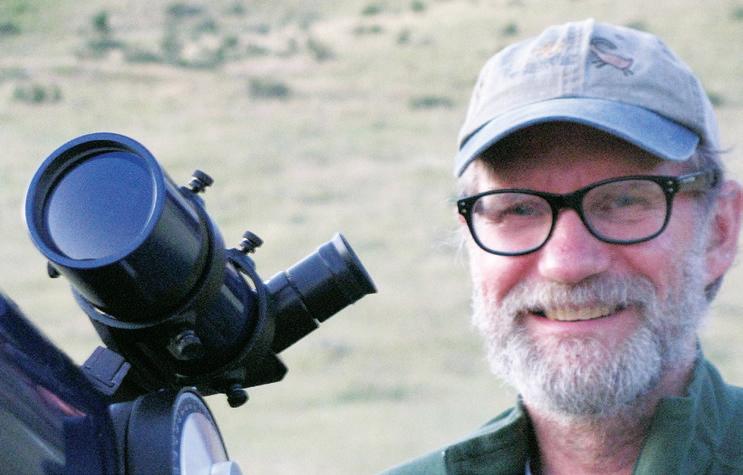
On June 20, the earth reaches the point on its orbit around the sun called the Summer Solstice, when the northern hemisphere is tilted closely toward the sun. For us living in in the northern regions, we get to enjoy the long days and warm temperatures. The sun, our very own personal star, has got to be one of the most unappreciated things in our lives.
Take a look outside your window. Whatever the weather is doing, rain sunshine or wind, it’s because of the sun. Are you eating something? It would not be on your plate if the sun was not up there. Planning on driving up into the mountains to take a hike this afternoon? Without the sun there would be no gas. Every day the sun rises in the morning and sets in the evening. Nobody worries about it. It always happens. Not very long ago no one knew what makes the sun shine. Some scientists conjectured it was a big lump of coal. When the distance from the earth to the sun was established, it was easy to calculate that the sun weighed 333,000 times as much as the earth. That much coal would take 2,000 years to burn. Surely the sun was older than that.
It was not until Einstein came up with the idea of mass and energy being two sides of the same coin that we finally understood what is going on inside our star. Deep in the core where temperatures and pressure are extreme, hydrogen atoms
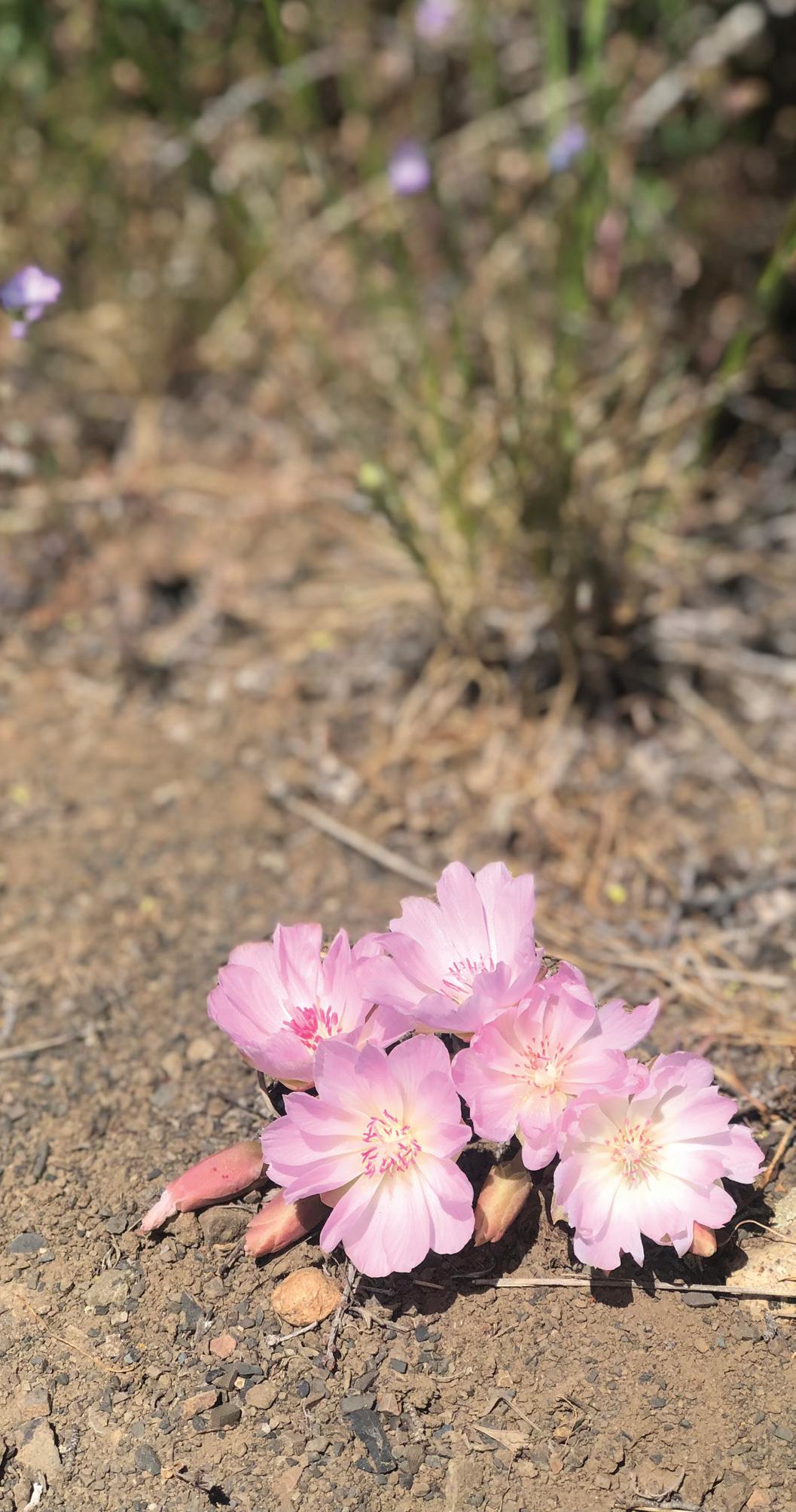
are being crammed together into helium. This process known as fusion produces the light we see and do not see.
Photons breaking free
Interestingly enough, those little particles of light called photons take thousands of years to get free of the sun. Why? They bounce around in there for that long. Once free they fly to the earth in eight minutes. Everything we see is a result of photons from the sun traveling at 186,282 miles per second bouncing off of objects and slamming into our retinas. At night it is a little more complicated. Think about this process happening all over the world and maybe you will get an idea of how powerful our sun is. It produces and emits the equivalent energy of six trillion Hiroshima-sized atomic bombs every second. It has been doing that for about 5 billion years and will continue doing it for billions of years longer.
Photons are not the only thing the sun throws
The Methow Conservancy’s First Tuesday program (June 4) will be a field trip to Seven Stars Farm at 7 p.m. Learn about a multi-generational family farm selling high-quality, locally grown meats while creatively managing their land for ecological health and fire resilience. More information available at methowconservancy.org.
The Okanogan County School Retirees’ Association will meet at 11 a.m. Friday, May 31, at Community Presbyterian Church of Omak, 9 Birch St. S., Omak. Topics will be the 2024 scholarship recipient and 2024-25 budget. No lunch available. For more information, call (509) 429-0292.
The Winthrop library will host a free lecture on brain health and concussions, with Dr. Rick Rappaport, on Friday, May 31, from 11 a.m.-noon. The event is sponsored by the UW Osher Lifelong Learning Institute on Brain Health. Rapport is a clinical professor of neurological surgery at the University of Washington School of Medicine.
PROPERTY RIGHTS COALITION
The Okanogan County Property Rights Coalition meets on Wednesday, June 5, at 6 p.m. at Okanogan County Republican headquarters, 647 1/2 South Second Ave., Okanogan. Okanogan County property owners, business owners, farmers, ranchers, orchardists, construction businesses, contractors, real estate companies, developers, and other concerned citizens are invited.
Try out yoga with Sofia Christensen at Motive Yoga in Winthrop on Friday, June 7, from 4:30-5:30 p.m. Participation is by donation. All June 7 donations go to Little Star School. Register ahead at motiveyogaco.com/events or just show up.
WINTHROP LIBRARY EVENT
The Winthrop library is hosting D&D Adventure Club is an opportunity for kids aged 8-15 to try the popular tabletop roleplaying game Dungeons and Dragons using modules created specifically for their age group. Dates are June 14 and July 12 from 4-6 p.m. For information, visit https://www.ncwlibraries. org/locations/winthrop-public-library/.
WATERSHED COUNCIL OPENING
The Methow Valley Watershed Council invites interested val-

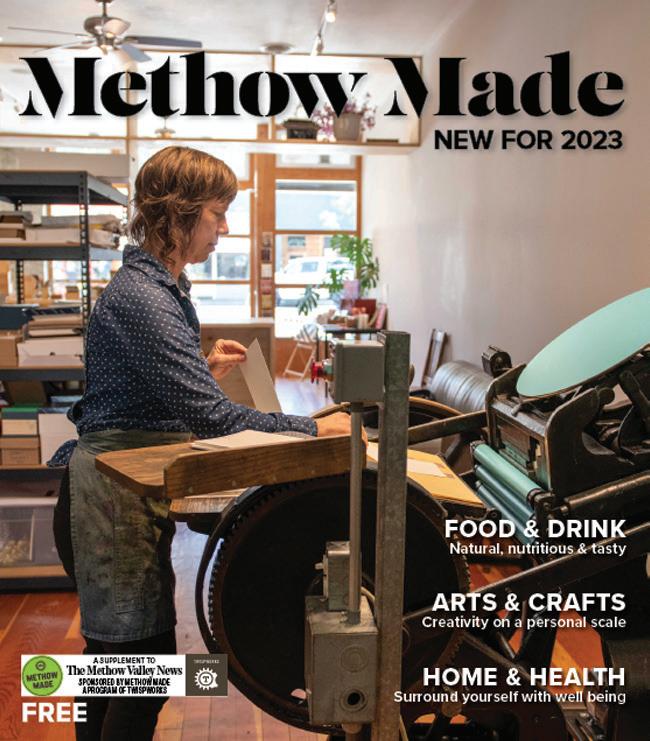

at us. Have you ever heard of neutrinos? About 20 trillion of them pass through your head every second. Most come from the sun but all the stars up there contribute their share too. You might think you would get a break at night but these little ghost-like particles can fly all the way through the earth and not hit anything.
The sun is a lot bigger than the earth so it weighs a lot more. Because it weighs more it has more gravity. That means that wherever the sun goes it takes the earth and all the other planets with it. The sun is cruising along at 500,000 miles per hour through the Milky Way galaxy, a vast pinwheel shaped structure of 300 billion other suns. Be sure to check it out sometime this summer when it is at its best. Other than the Andromeda galaxy, it is the biggest thing you can see up there.
Looking for something up there at night? In June there is not a whole lot of night, but if you are up before dawn, all the planets except Venus are lined up in the east.
ley residents to submit a letter of interest for Position 1, Upper Methow. Interested individuals must be residents of the upper valley and registered to vote in Okanogan County. It is helpful to have some knowledge of water law and water resource policy. Responsibilities include preparing for and attending one monthly council meeting, participating in or providing leadership for various committees, and participating in council education and outreach efforts.
For information or to submit a letter, email methowwatershed@gmail.com by June 14 to be considered at the June 20 council meeting. To learn more about the work of the council, visit www.methowwatershed.com/.
Methow At Home invites the community to join Carolyn Sullivan and friends for lemonade and tea in her garden in Winthrop on Tuesday, June 25, from 3-5 p.m. Bring photos, stories and snacks to share. Register for the free event at methowathome.org.
• Thursday, June 6: Library Day at The Cove Food Bank, 1-4 p.m. On the first Thursday of the month, library staff will be on-site at The Cove during Food Bank hours to help you access library services.
• Fridays, June 7, 21 and 28: Preschool Storytime, 11 a.m., a weekly storytime session with stories, songs and rhymes. This program is designed for preschool-aged children and their adult caregivers, but children ages 2-6 are welcome.
• Friday, June 14: Cuentos y Cantos, Bilingual Storytime, 11 a.m. Read, talk, sing and play in English and Spanish.
• Saturday, June 15, noon-1 p.m.: Free Family Fun: Families gather at the library on Saturdays for free activities ranging from crafts to STEM. All ages welcome, but kids under 9 will need adult help.
• Saturday, June 22, noon-1 p.m.: Free Family Fun: Container Gardening 101. Decorate your own mini-planter, turning recycled waste into something functional.
• Tuesday, June 25, 5-6 p.m.: My Story. Come for an evening of short, true stories told by your friends and neighbors. This is our 16th My Story. Refreshments provided by the Twisp Library Friends.
• Wednesday, June 26, noon-1 p.m.: Kids’ Lunch & Learn at Twisp Park: The topic is leaves.
• Saturday, June 29, noon-1 p.m.: Free Family Fun: Origami creations. All ages welcome, but kids under 8 will need adult help.




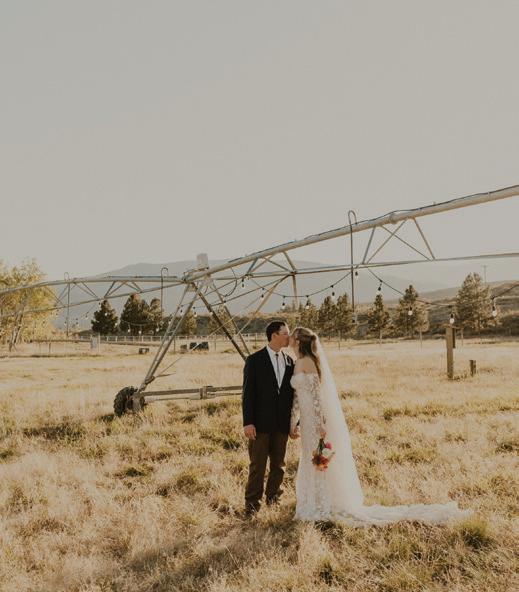






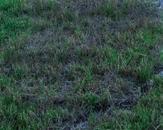
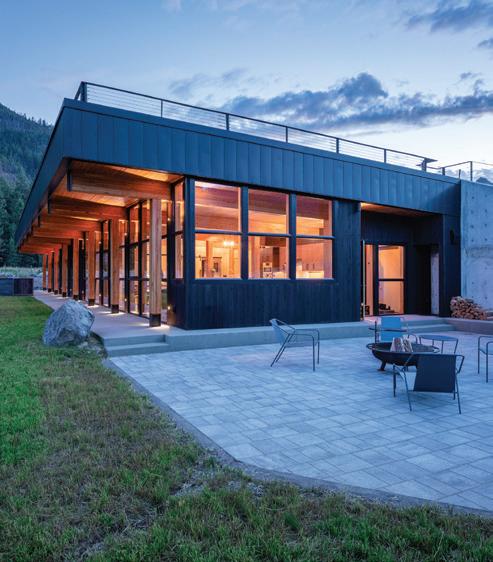









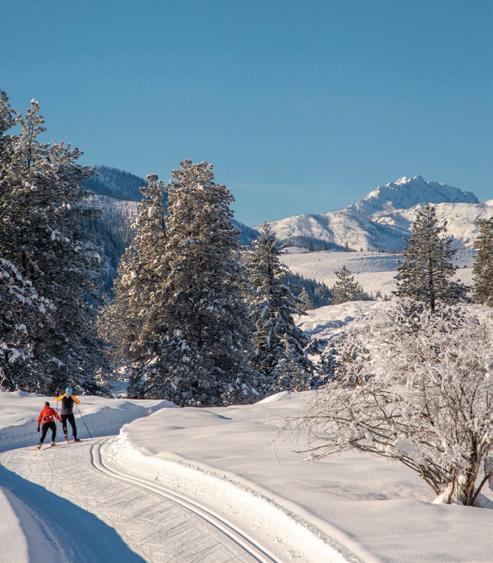


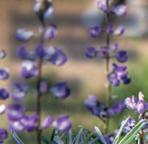











Douglas Scott Swezey
Douglas Scott Swezey, 35, was born in Vici, Oklahoma, on Oct. 23, 1988. Scotty was the third child of Greg and Ja Lea. Scotty died peacefully on May 17, 2024, in Cottage Grove, Oregon, surrounded by his family.
Scotty moved with his family to Brewster, Washington, in 1989 and celebrated his first birthday in Washington state. He attended Brewster Christian School from kindergarten to fourth grade and then attended Brewster Middle School. He started his freshman year at Pateros High School. He played, basketball, baseball and tennis and graduated in 2007.
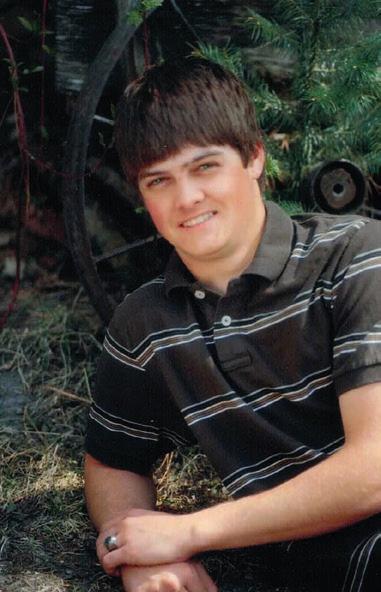
Scotty was baptized by his uncle Marty Evans into the General Assembly and Church of the Firstborn on April 2008. Then, Scotty moved to Oklahoma City and lived with his Nana and Papa Freeman. He returned to Brewster in 2009 and met Shay McManus and moved to Halsey, Oregon, in 2010. Scotty married the love of his life, Jacelyn Shay, on Feb. 26, 2011 and made their home in Halsey. They loved their life together and had many brethren stay with them. He worked for 1st Rate Roofing, owned by his uncle Marshall McManus. He loved working alongside his father in-law and many brethren for 10 years.
On Sept. 30, 2014, God blessed them with a baby girl, Jaimie Richan. In January 2021, Scotty and Shay moved back home to Carlton, Washington. Scotty went to work for the family business as the General Manager of Cascade Mechanical. Scotty was a hard worker and
Dabra Jean Grant
Dabra spent her last precious days reuniting with her sister Pam in Florida, where she passed away on May 1, 2024. Born June 8, 1956, in Weehawken, New Jersey, Dabra lived in uptown New York, California, and Washington, eventually moving to Twisp where she lived for the last 14 years.
Dabra dearly loved her best friend and canine companion, Lucy, who crossed the rainbow bridge in 2023. No matter how bad things got, Dabra could find a way to express humor and wit. She will be missed by her friends and family. Dabra was grateful to Room One and Methow At Home for their support and care over the years.
was always helping others. They were blessed with a son, Chandler Reese, on Oct. 22, 2022, in Methow, Washington. Scotty and Shay built a new home in Brewster and had just moved into it in March of this year.
Scotty’s family was everything to him. Scotty was a giving person, always willing to help anyone in need. Scotty was a minister in The Church of The Firstborn. He baptized 14 young people and married five couples. Scotty enjoyed hunting and fishing and barbecuing with his dad and brothers, AJ and Zakk. They would attend elk camp each year. He loved his siblings dearly. The last few years he was blessed with spending a lot of time with his little sisters, Abi Jane and Kylee McManus.
Scotty is survived by his wife Shay, daughter Jaimie Richan and son Chandler Reese, all of Brewster. His parents Greg and Ja Lea and sister Abi of Carlton. A brother AJ (Emily) of Okanogan, Washington. Father-in-law Mark McManus (Cherie) and sister-in-law Kylee of Carlton. Sister-in-Law Teah Shamburg (Nate) of Enid, Oklahoma. Scotty had many aunts, uncles, cousins, brethren and friends that were so very precious to him.
He was preceded in death by his sister Ashley and brother Zakk, grandparents John and Rosalee Freeman, grandfather J.W. Evans, grandparents Phil and Betty Swezey, uncle Marty Evans, cousin Bethany Evans, mother-in-law Kim McManus, and niece Natalie Rose Shamburg.
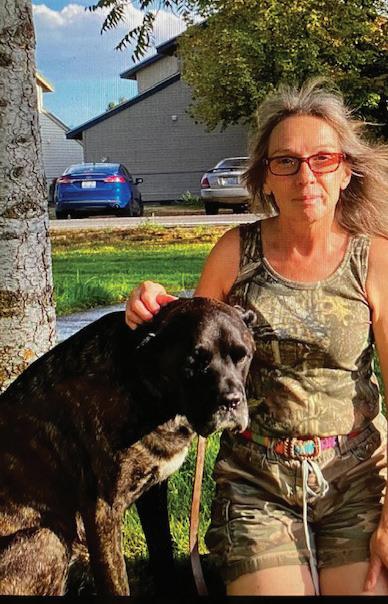
nephew Colin Hendrickson, half-sister Donna Grant, niece Nicole Altneu, and nephew Damon Gawley. A private gathering will take place in June to honor Dabra and her dog Lucy.
“Do not begrudge your sister her rest. She has at last become free, safe and immortal, and ranges joyous throughout the boundless heavens; she has left this low-lying region and has soared upwards to that place which receives in its happy bosom the souls set free from the chains of matter.
“Your sister has not lost the light of day, but has obtained a more enduring light. She has not left us, but has gone on before.”
Quote from Og Mandino and Buddy Kaye’s
“The Gift of Acabar.”
Dabra is survived by her sister Pam Grant, her
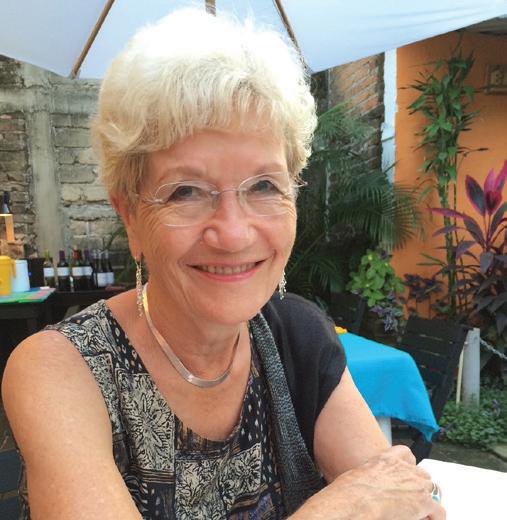
The Western Sale held last weekend was a huge success. Thanks to the community for all the wonderful donations and to everyone who attended. Also, thank you to our amazing volunteers! We couldn’t have done it without you all!
Thrift Store hours are Monday, Tuesday, Wednesday, 9 a.m.-3 p.m.; Saturday, 9 a.m.noon.
Colleen Ramiskey
LUNCH MENU:
THURSDAY, MAY 30: Bratwurst and sauerkraut, roasted potato wedges, pea salad, Waldorf salad, dessert.
FRIDAY, MAY 31: Pork stir fry, steamed rice,
stir fry vegetables, Asian slaw, Mandarin oranges, egg roll, dessert.
MONDAY, JUNE 3: Cheeseburger deluxe, sweet potato waffle fries, pea salad, apple celery salad, dessert.
THURSDAY, JUNE 6: Clam chowder, tuna sandwich, garden salad, pineapple, dessert.
FRIDAY, JUNE 7: Roast beef, mashed potatoes, Normandy vegetables, tossed salad, whole wheat roll, strawberry shortcake. Call (509) 997-7722 to reserve meals 24 hours in advance. Suggested donation is $5 for persons over age 60; charge for $10 for persons under 60.
Winthrop-based Lost River Winery has won four awards in Washington state’s independent wine recognition program, the 2024 Seattle Wine Awards.
More than 800 wines, ciders, and meads in 30-plus categories were submitted from Washington, Oregon, Idaho wineries and North American Cider producers.
Lost River Winery submitted four entries and won four medals: for their 2021 Cote Wall Syrah blend (Gold), 2022 Walla Walla Syrah (Gold), 2022 Grenache Rose’ (Gold), and a 20-year old 2004 Cabernet Sauvignon library wine (Silver).
“I am always pleased to see how often and how well those unknown mom and pop boutique wineries show in this blind tasting,” said Christopher Chan, Founder/Executive Director of the Seattle Wine Awards. “It is so cool that wineries big and small, new and old have a fair, unbiased and equitable opportunity to be recognized for crafting world-class award worthy wine”

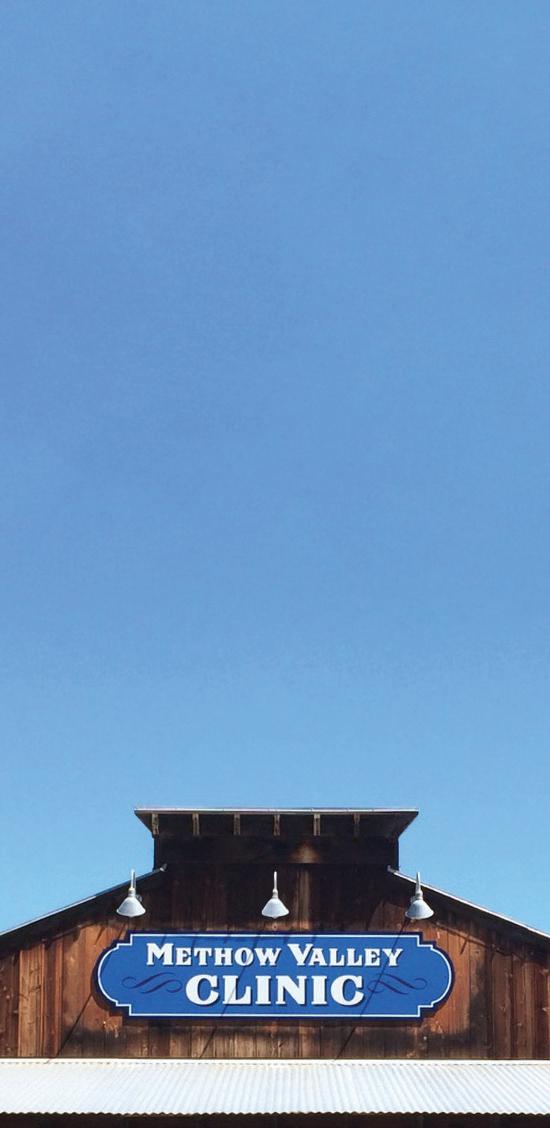

















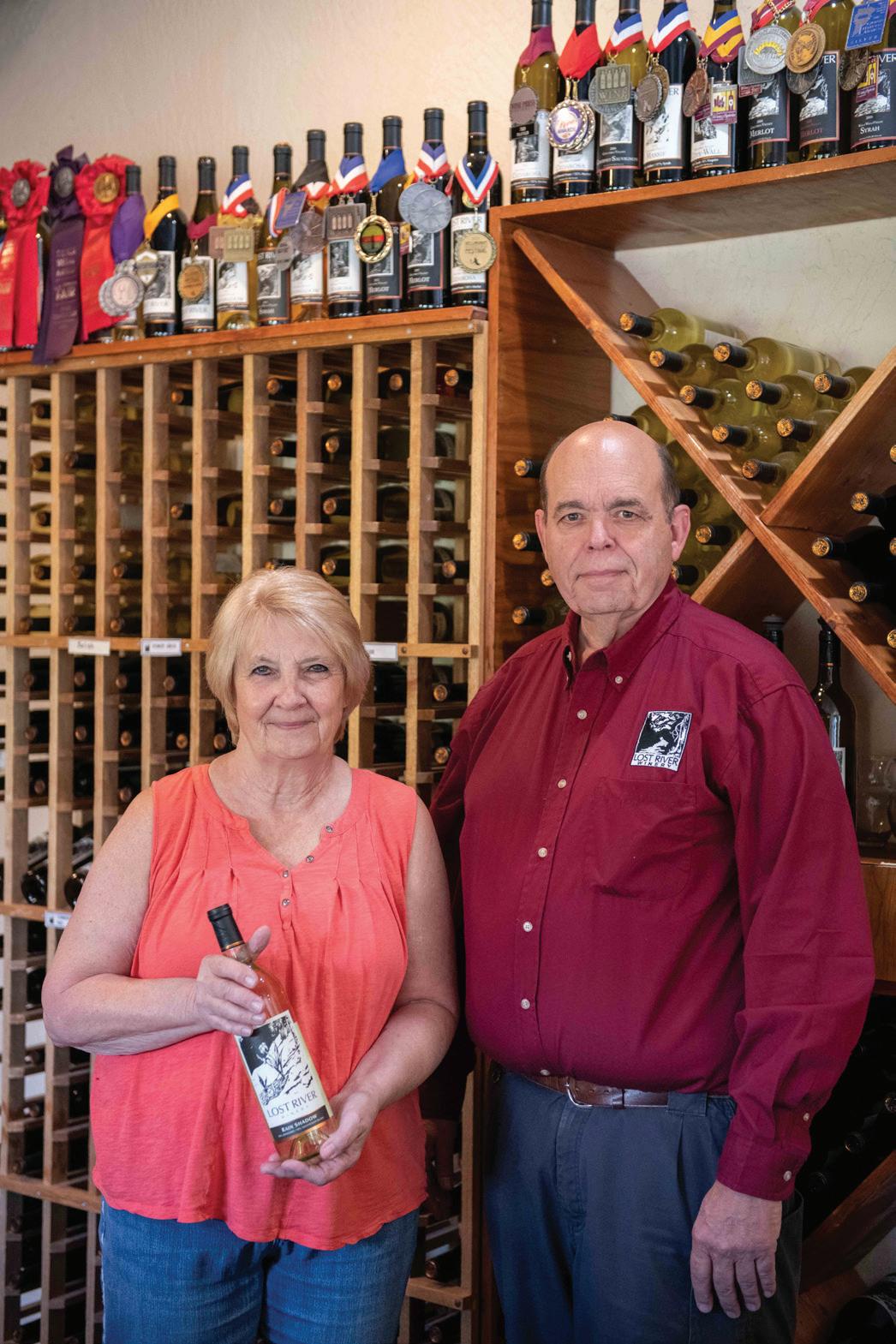







Lost River has a noteworthy history in the valley. In 2002 John Morgan and Barbara House began making wine in a barn at their home on Lost River Road in Mazama, hence the winery name. In spring of 2022, Rick and Joanne Coursey, owners of a small vineyard in Oregon, bought the winery. They are continuing to make the wines that are popular with Lost River Winery’s patrons, and they are bringing their own vision — and grapes — to the winery.






O=Open, H=Handicap, C=Closed, M=Men For more info, call: (509) 429-1683 or (509) 449-0044 Al-Anon Tue. 6:00pm at Cove2 Fri. 8:30am at Cove2 Zoom option 812-4777-9360 Pin#505050 For
(509)341-4121
“One of the reasons we bought the winery was because it had done such a great job for 20 years. So we definitely wanted to maintain all the good work they’ve done,” said Rick Coursey, for an article in the 2023 Methow Made magazine.
With the sale of the winery in 2022, production of red wines was moved from Morgan’s barn in Mazama to the warehouse facility on Horizon Flats, where white wine was being made. “Now we do all the wines on Horizon Flats,” Coursey said in the Methow Made article.
The 5,000-square-foot facility has two barrel rooms that hold


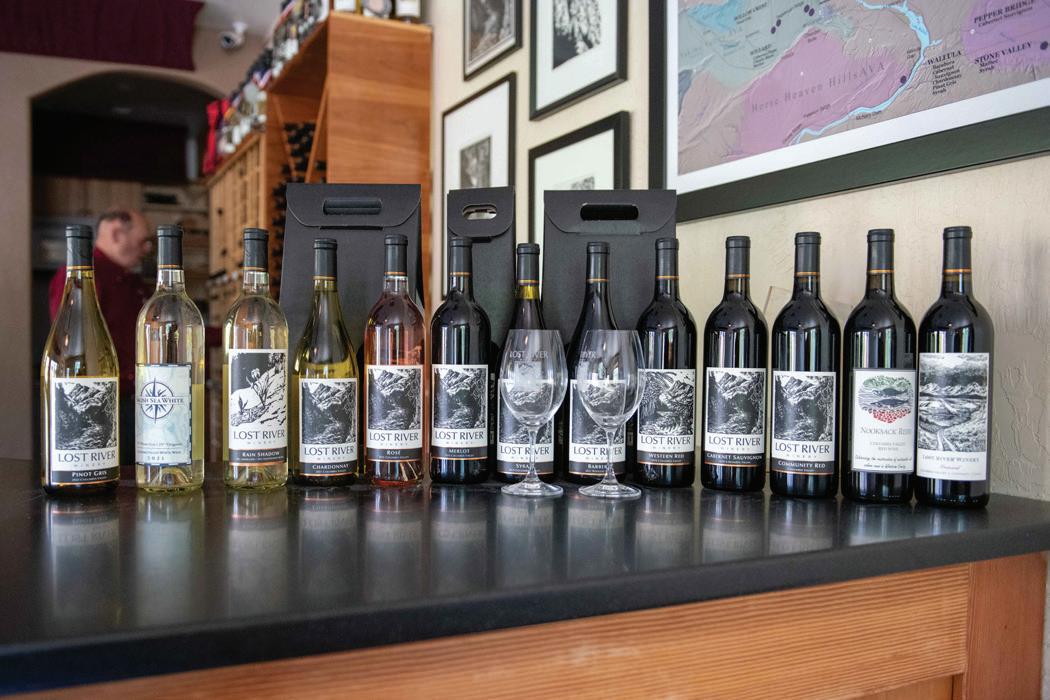
a variety of
about 300 barrels of red wine, a room with large stainless steel tanks for white wine production, as well as storage areas and space for crushing grapes.
The Courseys had early careers in wine and hospitality before working for many years in government. Rick has studied
enology and viticulture at Purdue and U.C. Davis. He handles operations at Lost River Winery, while Joanne is in charge of the financial side, and works with management of the Oregon vineyard. For information, visit https:// lostriverwinery.com.
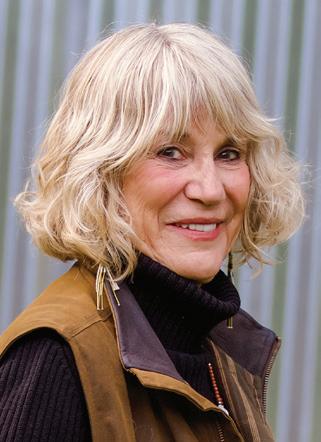
“Man’s inhumanity to man makes thousands of people mourn.” No words were truer spoken than these written by Scottish poet Robert Burns in “Man Was Made to Mourn: A Dirge” first published in 1784. “The effects of war are multi-generational,” Mazama resident Heidi Westin says. She knows it firsthand. Her mother Irma Steinborn did not speak much about it to her children, but in her 40s, she preserved the story by typing 19 single-spaced pages on a manual typewriter recalling the horror of her teenage years in Russian prison camps.
Years later, Pat Leigh and Heidi were in a Mazama knitting group together when the subject of the transcript that Irma had titled “I Was a Russian Prisoner”
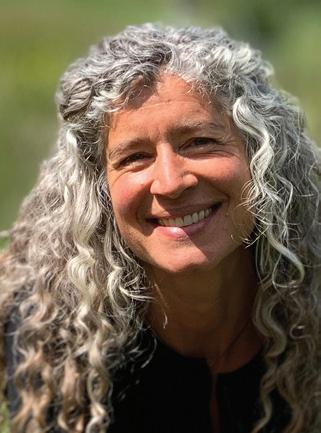
When Heather Rivard started teaching quilting classes at the Quilting Hive in Twisp, Melody Barksdale signed up for lessons. Soon, her husband Tucker saw how much fun she was having and joined the class. “We didn’t even know how to sew before that,” Melody says, “but Heather taught us everything.”
The Barksdales quickly became a two-machine family, stitching away in the guest room of their Winthrop home.
Somewhere around 2017 or 2018, they saw an article in a quilting magazine about the
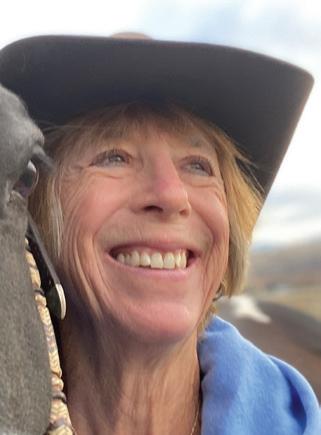
Chemistry classes were challenging and didn’t seem relevant, but I needed to ace them to get into veterinary school. When I signed up for a class called “The Biochemistry of Fermentation,” I saw the relevance: chemistry was responsible for creating every college student’s favorite beverage — beer. Beer has been around as long as humans have consumed grains. When primitive humans discovered that wet grains ferment, turning water into a tasty drink that left you with a pleasant feeling (most of the time), they had an incentive to domesticate wild cereals leading to the agricultural revolution. Today, beer is the third-most widely consumed drink, second only to water and tea.
came up. When Pat read it, she was so moved that she wanted to preserve it by creating a hardbound book with Irma’s 13-yearold self in portrait on the cover.
“As a non-native English speaker, her (Irma’s) usage is sometimes awkward, but it is full of character that I have done my best to preserve with only very gentle editing,” Pat says of the final copy she presented to Heidi and her family.
Irma’s story begins with her happy life on her family’s farm in East Prussia where her parents had immigrated from Poland as Hitler rose to power. He told the people that, as their leader, he would “make a better world to live in” — one where there
“would be the thousand years of happiness and peace like it said in the Bible.” Irma learned at Hitler’s required youth meetings to believe him. The family had no choice but to accept him as leader.
Irma was just shy of her 14th birthday when Russian soldiers appeared at her family’s door. The Germans were retreating during the winter of 1944-45 and fear of the Russians permeated the family at that time.
On March 2, 1945, she recalls, “They took us all by surprise. First, they looked for young people in the house, and when I was discovered, they took me and told me to put on my coat and
Quilts of Valor Foundation, which began in 2003 after the founder, Catherine Roberts, had a dream while her son was deployed in Iraq.
According to Catherine on the Quilts of Valor Foundation website, “The dream was as vivid as real life. I saw a young man sitting on the side of his bed in the middle of the night, hunched over. The permeating feeling was one of utter despair. I could see his war demons clustered around, dragging him down into an emotional gutter. Then, as if viewing a movie, I saw him in the next scene wrapped in a quilt. His whole demeanor changed from one of despair to one of hope and well-being. The quilt had made this dramatic change.”
This dream launched the Quilts of Valor program, in which volunteers make quilts that are then awarded to service members and veterans to thank them for their service. Since 2003, nearly 400,000 handmade quilts have been awarded. Inspired by the program, Tucker — a veteran who spent a year in Vietnam with Army military intelligence assigned to a
Historically, beer was a valuable commodity. It served a social function, a symbol of friendship and hospitality. Beer was used as a form of currency; the laborers who built the pyramids of Giza were provided with 10 pints of beer a day. Beer was a safe alternative to water that could be contaminated. The fermentation process eliminates harmful microorganisms but preserves nutrients.
The ancient Egyptians loved their beer, worshipping Hathor, the goddess of beer and drunkenness. In the Middle Ages, monasteries were responsible for creating the first breweries and significantly improved the brewing process. Monks added hops for flavoring, later discovering its preservative properties. In the United States after the prohibition, mass-marketed beer was a pale, watery, and somewhat tasteless beverage earning it the nickname “piss water.”
But many Americans, especially travelers to European countries, knew what we’d been missing and thus the creation of the craft brewing industry in the 1970s. Here in the Methow Valley, we’re lucky to have The Old Schoolhouse Brewery (OSB) producing excellent microbrews. Craft beer production in the Methow Valley started in the mid-1990s with the Winthrop
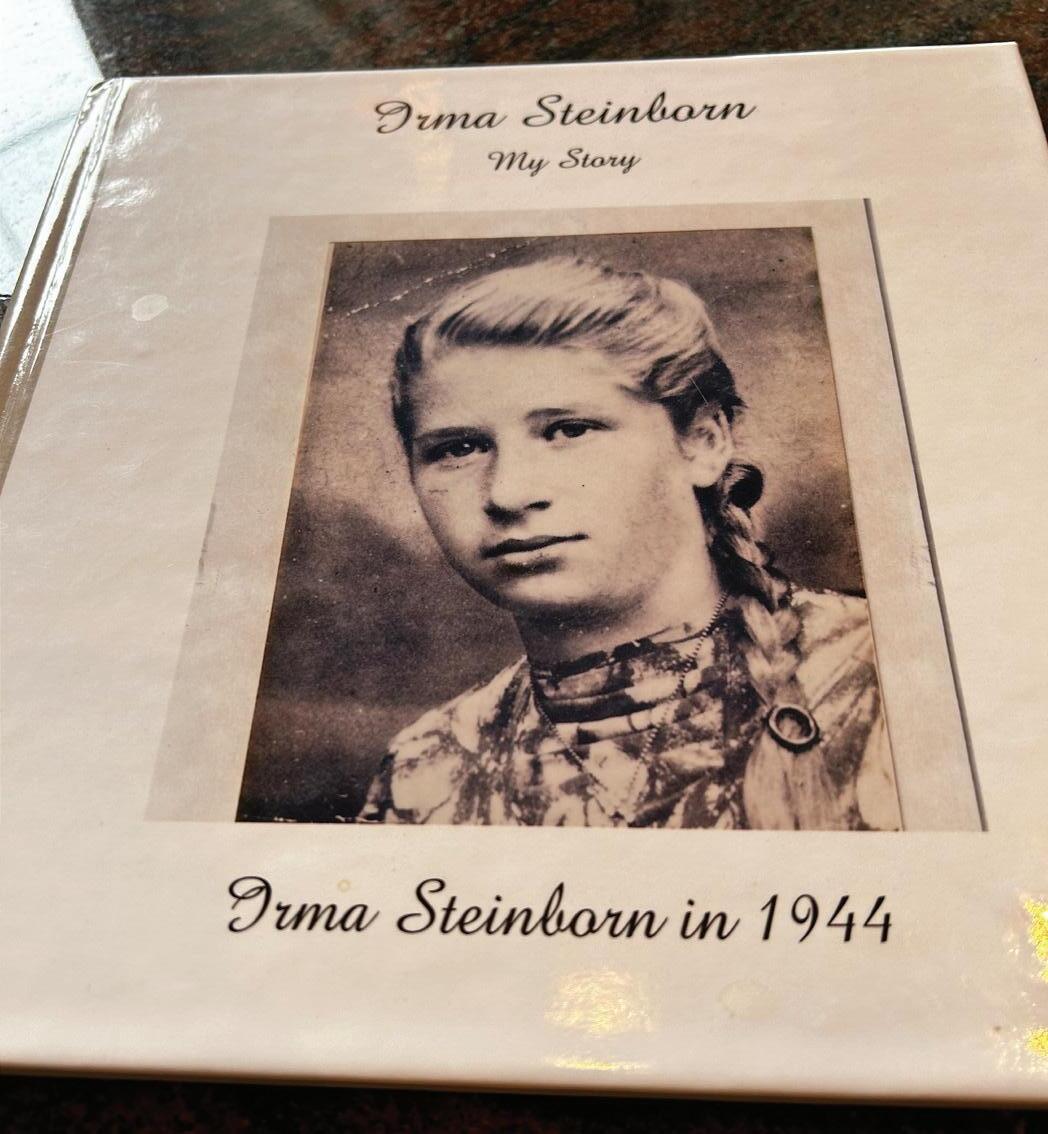
follow them. My mother begged the Russian Gestapo to please let me go.” Her beseeching fell upon dead ears. A beautiful blue-eyed blonde young girl must have been a gem for a capture. What lie ahead was inconceivable for Irma.
Packed into a train with other
Green Beret unit — began sewing valor quilts, using a variety of quilt patterns like Stars on a Roll, Stars in Stripes, and Our Flag Stands for Freedom. His favorite, featuring pinwheel star blocks, is Three Tours, a pattern created by designer Tony Jacobson for his nephew, Eric, who served three tours of duty.
Our Flag Stands for Freedom was a learning experience for Melody, who does the binding on the quilts — the tiny piece that runs the perimeter of the quilt. “It was my first time doing two-color binding,” she says. “Quilters will remember what that is like.”
Tucker made 15 quilts but had no real specific plan for connecting them with veterans. Then this past February, the Barksdales read an article in the Quad City Herald about an Okanogan-based Quilts of Valor group. They attended a meeting, met some other quilters and quilting couples, and discovered an outlet for ensuring that Tucker’s quilts are awarded to service people.
A spokesperson for the group says it hopes to serve Winthrop, Twisp, Methow, Pateros, Brewster, Bridgeport, Riverside,
prisoners for three weeks, Irma arrived at the first of several Russian concentration camps in Siberia where starvation, death, hard labor, filthiness, rape, and humiliation became her life. After several relocations and years of deprivation, sickness, and, remarkably, some good times with her fellow prison -
Omak, Coulee Dam area, and Okanogan. The next quilt award event will take place on June 8 at the Okanogan Valley Gold Club, where five Quilts of Valor will be awarded.
Now, all that’s left for the Barksdales to do with Tucker’s Quilts of Valor is to hand sew a label on the back, saying that the quilts are “Made by Tucker, binded by Melody, and quilted by Heather.” Then the quilts will be available for the Okanogan group to award to veterans. The Barksdales like the idea of local veterans and service people being awarded locally made quilts.
Awarding the Quilts of Valor will come with an added benefit, Melody says. Currently, when the Barksdales are expecting overnight guests, they prepare the guestroom by removing 15 handmade quilts from the bed and finding another place to store them. “Now that room will be easier to get ready for guests,” she says.
That is, until Tucker finishes his next quilt, and the one after that, and the one after that.
Learn more about Quilts of Valor at www.qovf.org.
ers — with the aid of the Red Cross and negotiations by Germany’s new Chancellor Konrad Adenauer — Irma was released. World War II had been over for four years.
Upon arriving in America (18 years old, speaking no English, making her way alone from New York City to Ferndale, Washington) and reunited with her family that had survived, Irma suffered from the then unnamed disorder of post-traumatic stress.
Still, she developed an independent spirit, worked hard, got married to a fellow she met at German Club, raised three children — Heidi, her twin sister Lily, and son Claus — and continues to this day at 94 to be a positive person. Heidi says of her mom, “She never has a bad thing to say about anyone. If everyone was like my mom, there would be no wars.”
On the other end of the spectrum, Heidi recently lost her husband to the ravages of another war. Denny served in the Marine Corp during Vietnam. He was one of the unlucky ones to be the victim of Agent Orange which caused cancers that decimated his whole body, another example of man’s inhumanity to man and how it makes many mourn.
Still, Heidi is like her mom — having battled a rare (six victims in one million) cancer herself
and losing an eye to the beast — positive, determined, strong, and inspirational.
On a couple of other notes: the Mazama Store won the Washington State Recycling Association Recycler of the Year! That is a wonderful achievement for the staff and owners of the store to have accomplished — being a model business in waste reduction and encouraging all to follow their lead. Bring your own mug or cup and save money on waste and your drink.
Wildlife has been active here in the upper valley. A very big brown bear (cinnamon in the light) wandered through our yard. Another day, my horse sensed something in the trees on Founder’s Trail, which when I spotted the movement recognized a mountain lion. That was a little scary. The resident deer family are a little less threatening!
Finally, drivers — especially visitors — please drive the speed limit and “Pass with Care.” Highway signs are there for a reason. Our neighbors swerved into the barrow pit to luckily avoid a head-on collision when turning right onto the highway as a driver, accelerating way past the speed limit in an attempt to pass several cars on one of the few Highway 20 straightaways, came at them.

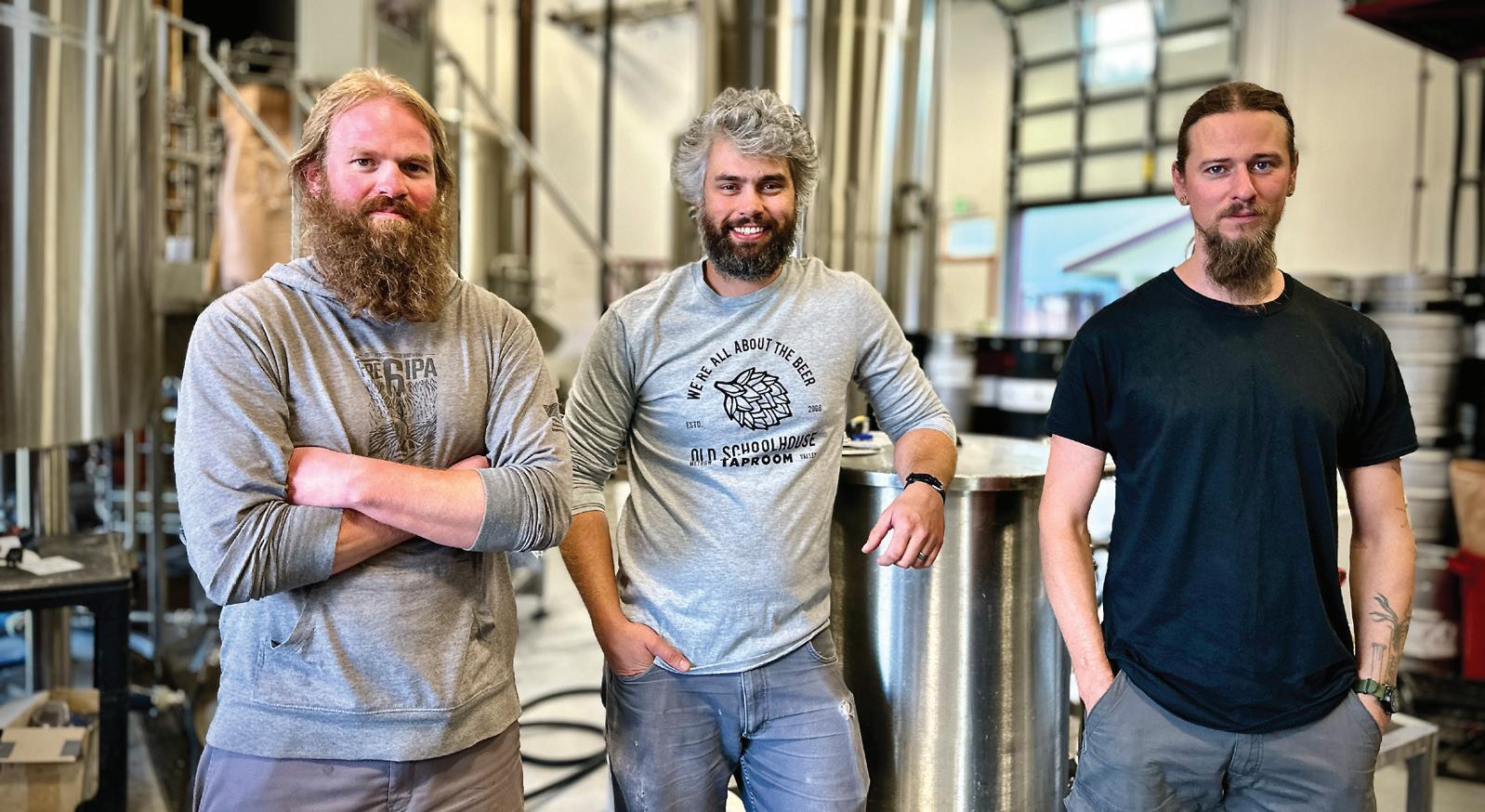
Brewing Company. The Ruud family bought this company in 2008 and changed the name to The Old Schoolhouse Brewery. Blaze Ruud started the tradition of entering competitions, particularly the United States Beer Tasting Championship. In 2016, Troy Anderson, Jacob Young, and Nate Young bought OSB, greatly expanding the capacity to produce more varieties of craft beers. TwispWorks was looking for a business that would draw more people to the campus. They approached the OSB owners and in 2017, con-
struction started on the new brewery and taproom at Twisp Works after, head brewer Kyle Koger said, “a robust contract with Twisp regarding our sewage stuff was signed.” The treatment of effluent from the brewery was a major incentive to expand Twisp’s wastewater treatment. Kyle Koger, Ryan Rust, and Edward Kenney are the three full-time brewers for OSB, which has expanded into three sites: The OSB Pub in Winthrop, OSB Taproom at Twisp Works, and The Public House in Mazama. The three brewers work mainly out of
the facility at Twisp Works. My knowledge of what OSB produced consisted of “I really like that dark, chocolatey and coffee-tasting beer you guys make.” That beer, they informed me, was the award-winning brew, Stygian Tide, a Baltic Porter, characterized on the back of the can with a much more elegant description: “Ripples of coffee and dark chocolate rise to the surface, washed forward on a smooth creamy body, ending in waves of plum and dark fruits. A voyage for the senses.” Doesn’t that sound yummy?
OSB gets all its hops from the Yakima Valley, the largest producer of hops in the world. All the barley comes from Armstrong, B.C. They’ve made up to 60 different beers, but not all are available at once, production being limited by available cold room space and the amount of effluent they produce. The White family helps with waste by taking the spent grains and some of the hop residue and feeding it to their cows. About 20 beers are currently available at OSB. Some are staples, others are offered seasonally, and a few are one-offs. Kyle said that they strive for consistency but if “the best hops we’ve ever smelled come along even if they’re different, we might go ahead and use them for craft aficionados.” Ryan has been developing a lager program for the past two years, something most craft breweries aren’t able to do because lagers take more time, equipment, and space. But he hit a home run with Stygian Tide. In 2024 OSBs two beers, Big Valley Brown and Stygian Tide Porter, placed No. 1 in the Brown Ale and Porter categories in the United States Beer Tasting Competition. I left the OSB Taproom with a can of Stygian Tide. Once back home, I poured this tasty brew with its perfect foamy head into a frosty mug and shared it with my husband.